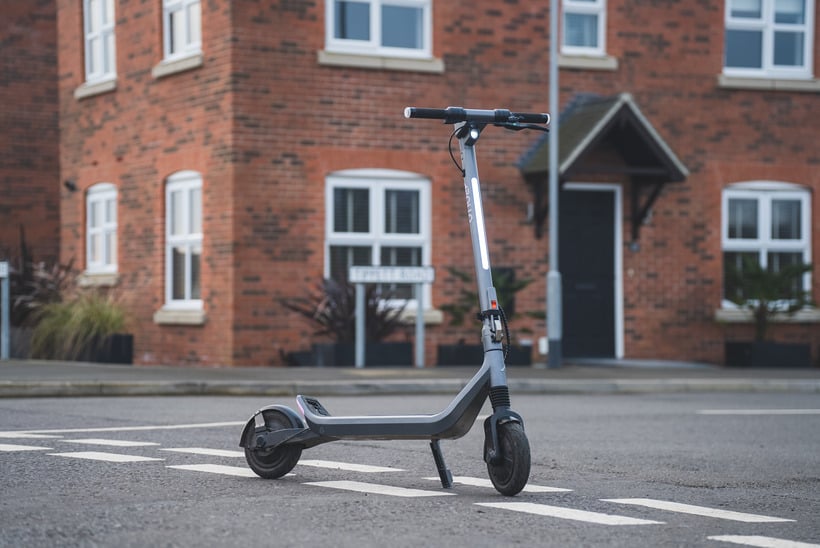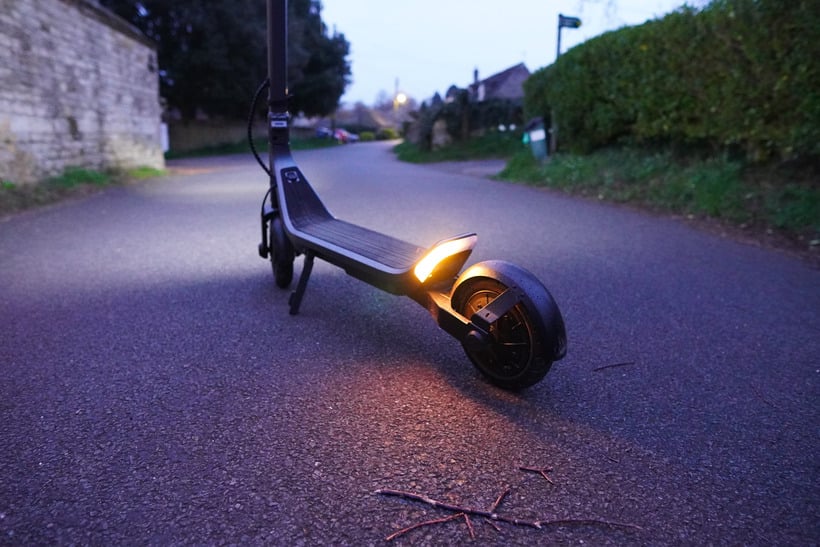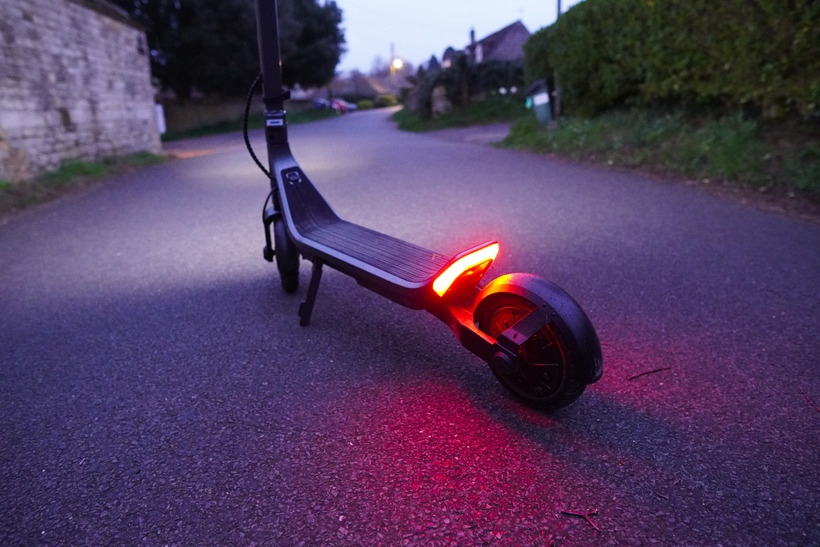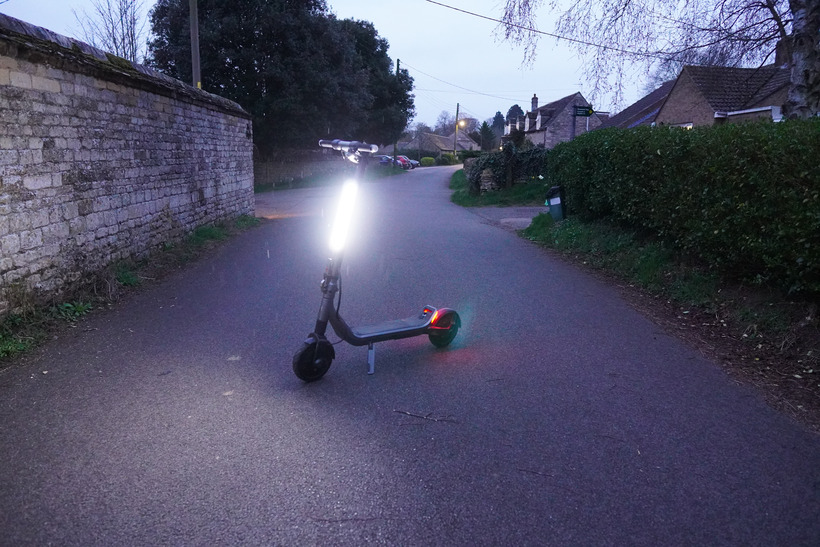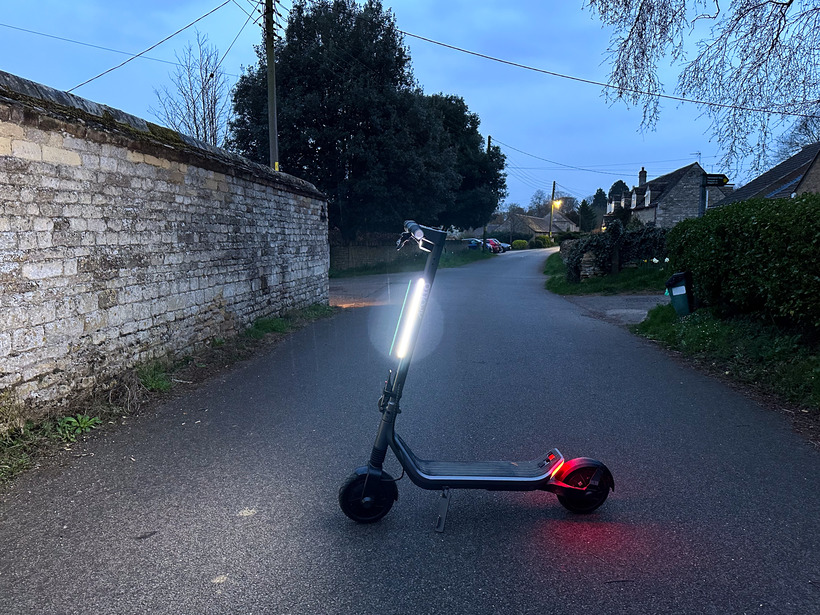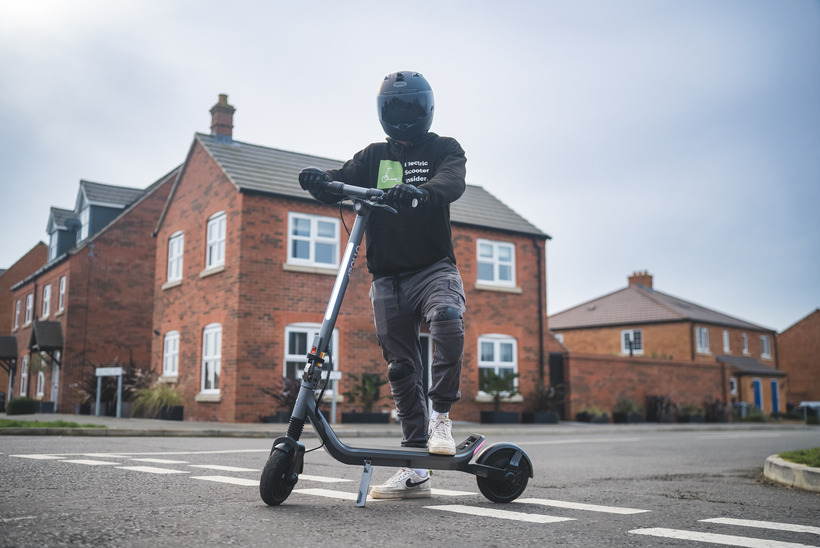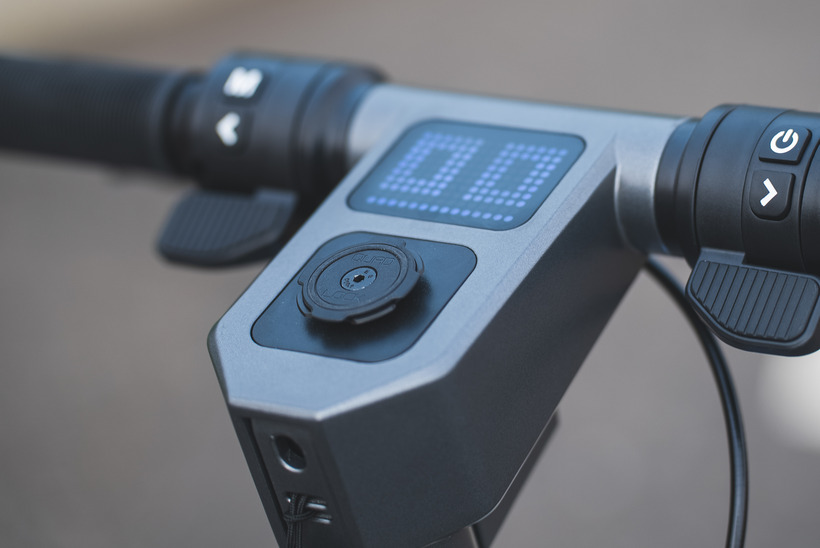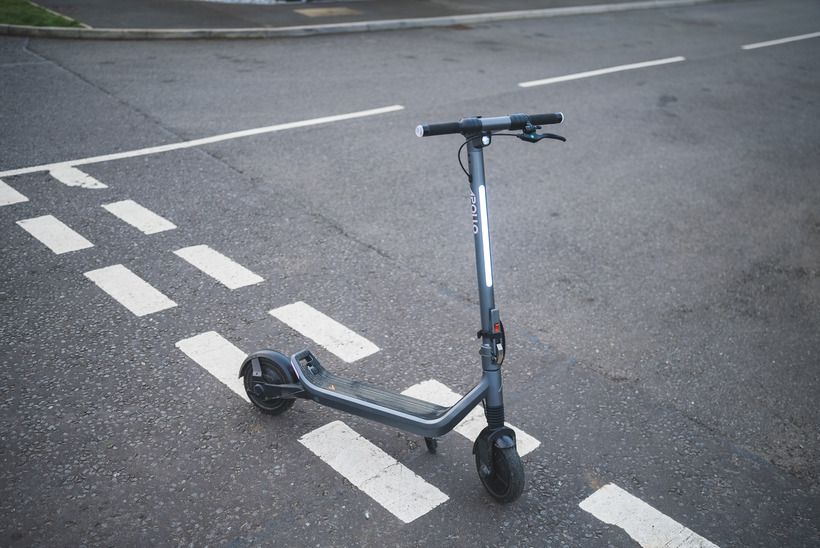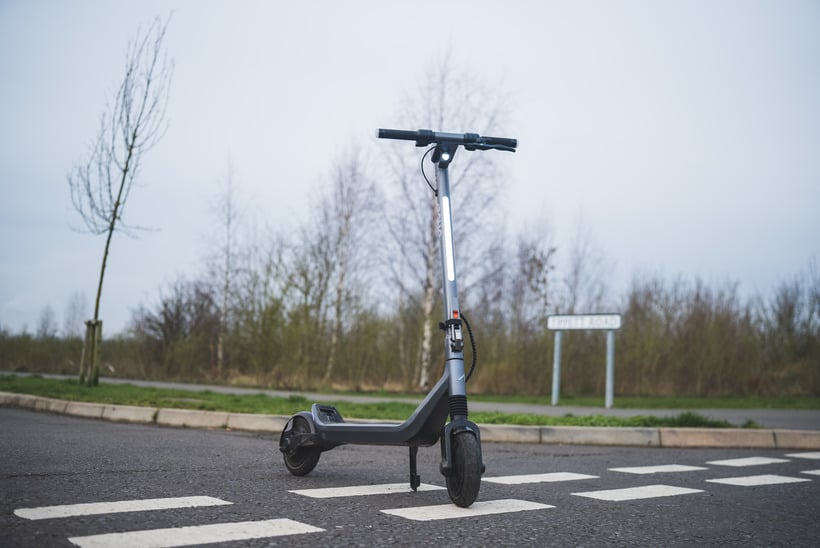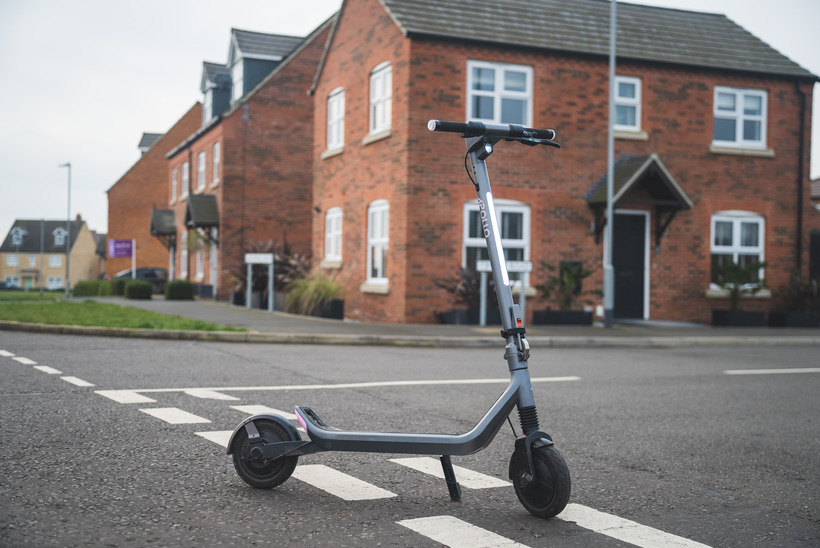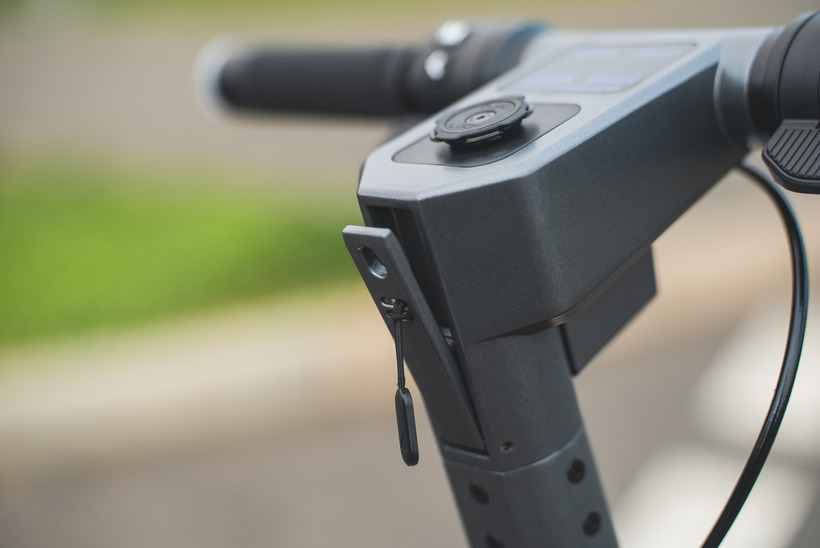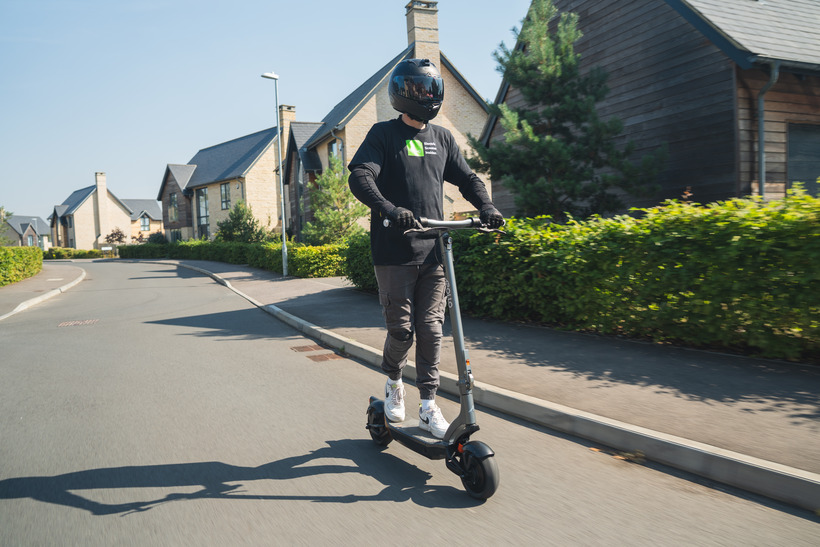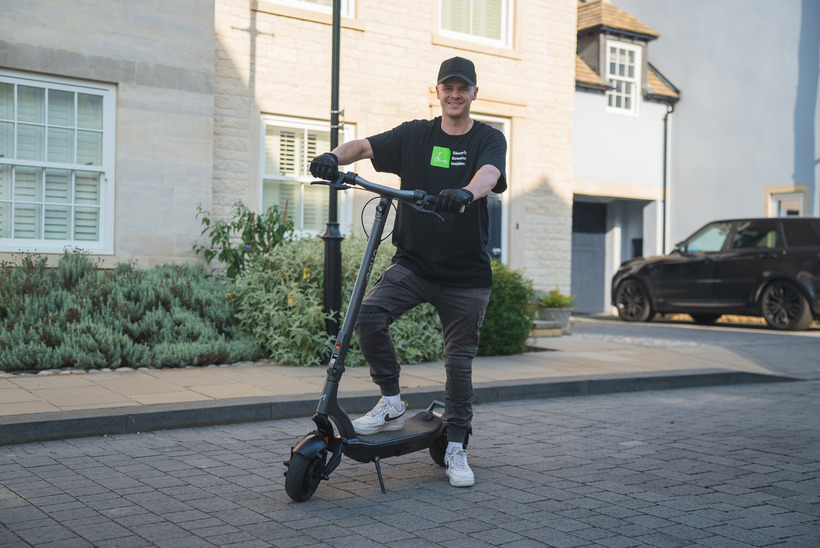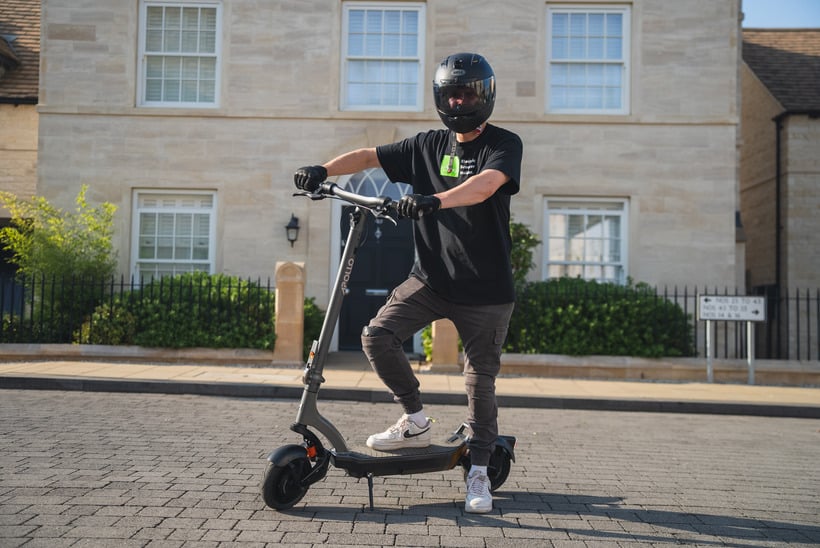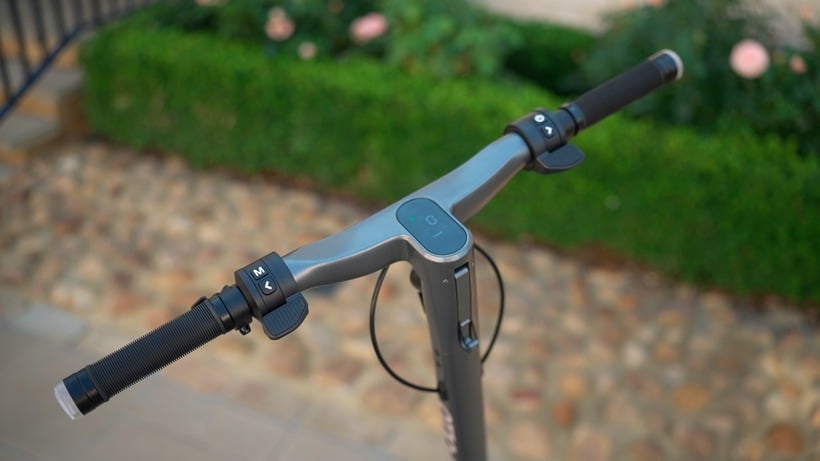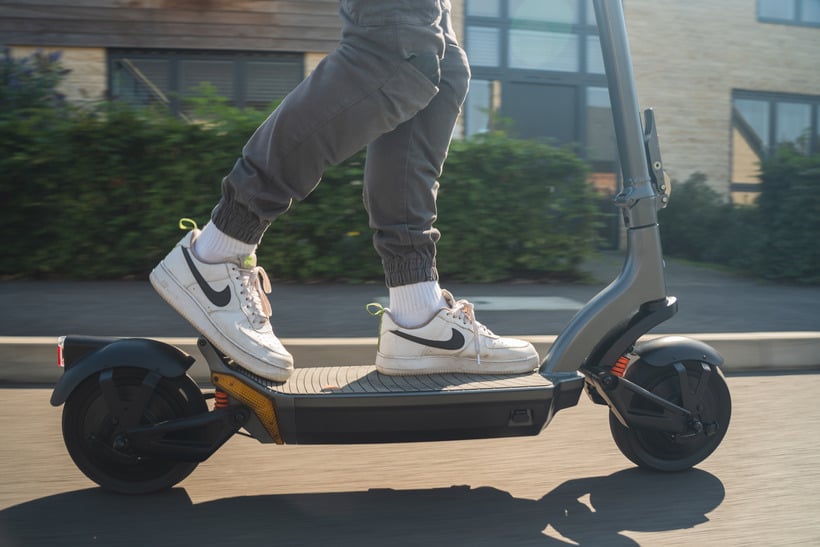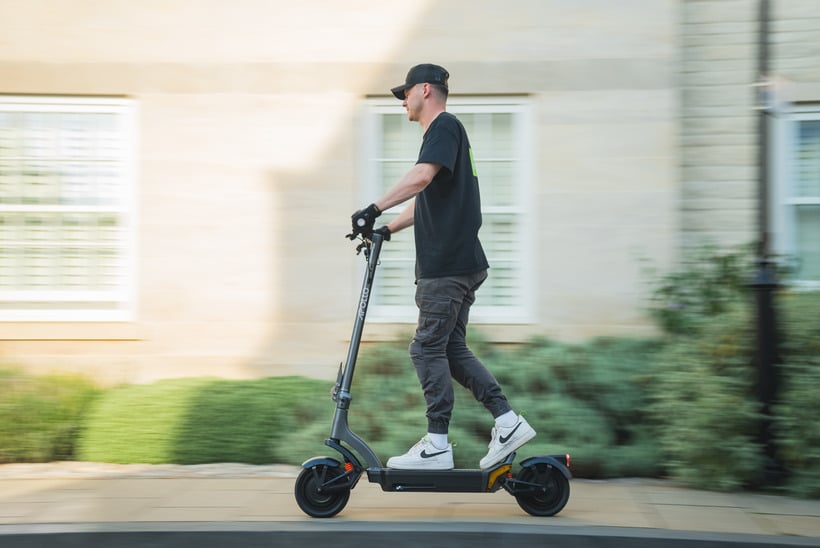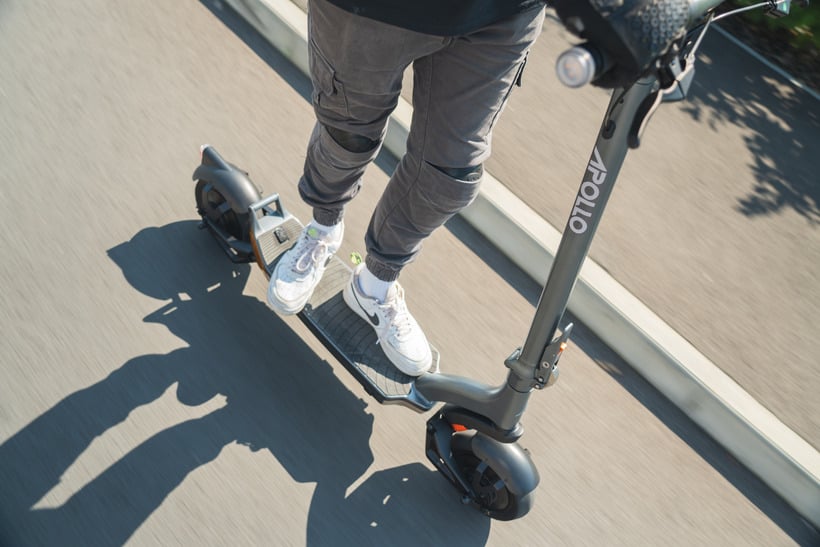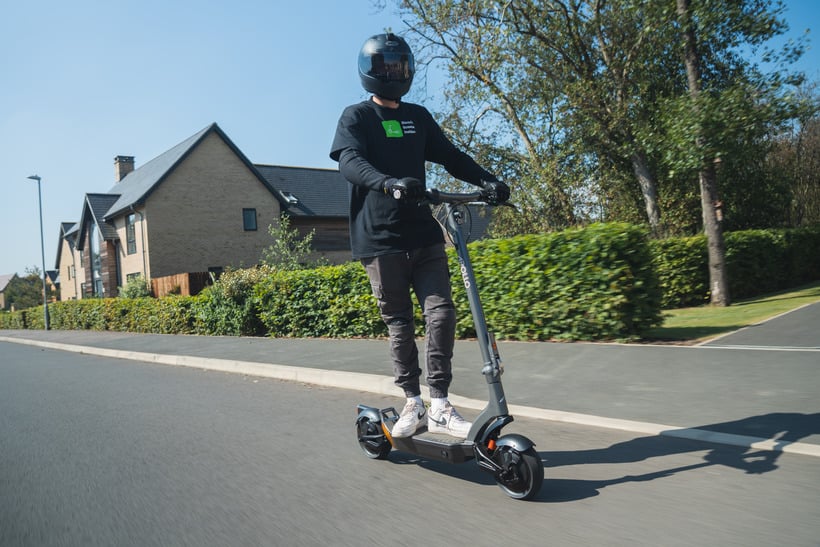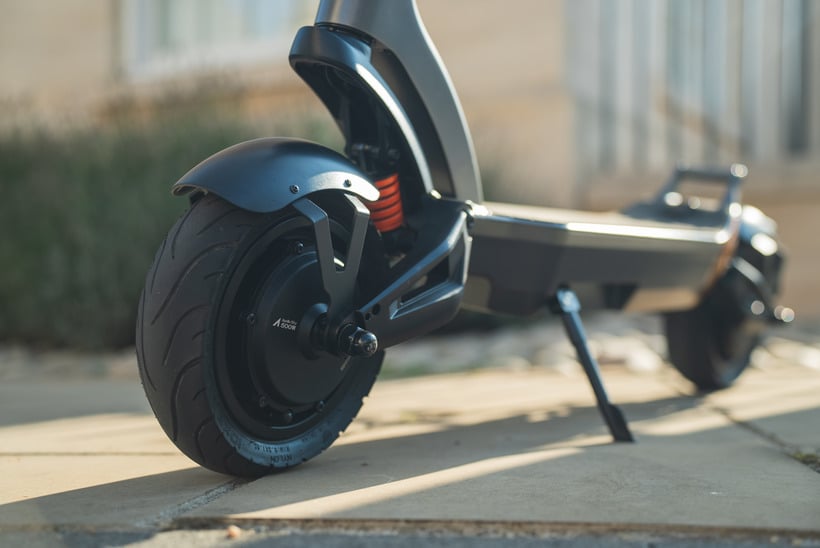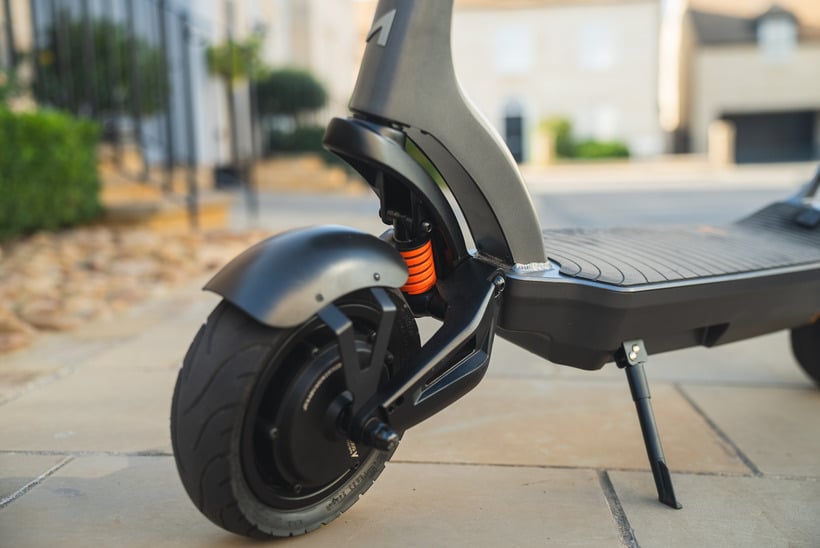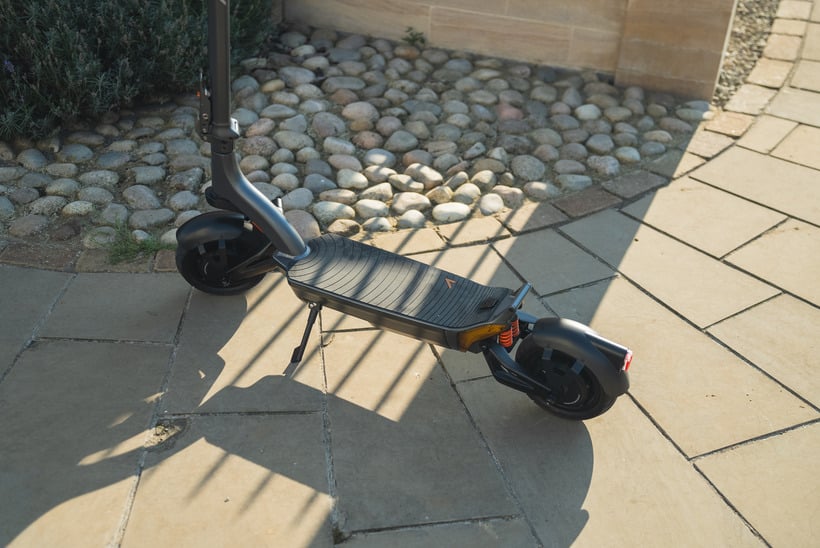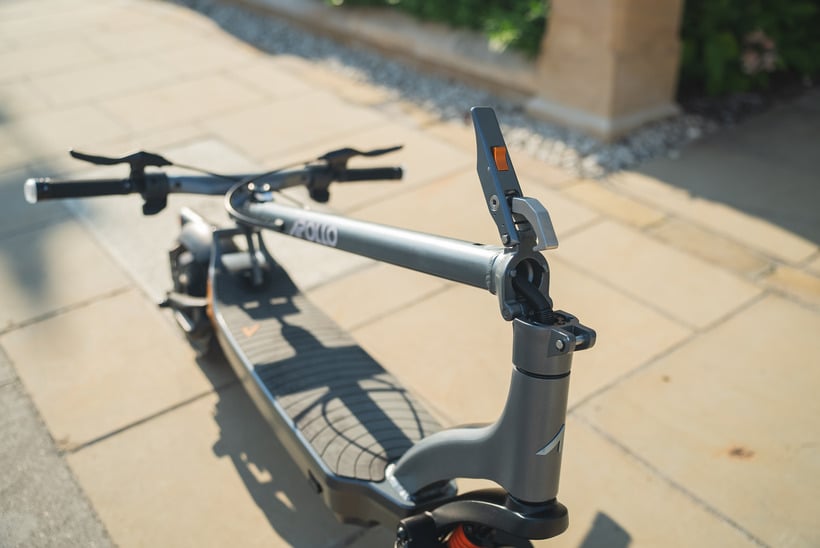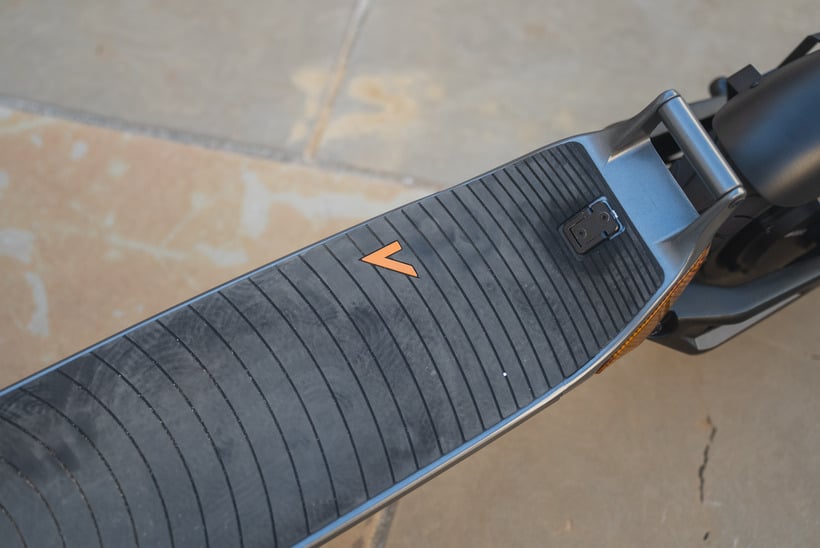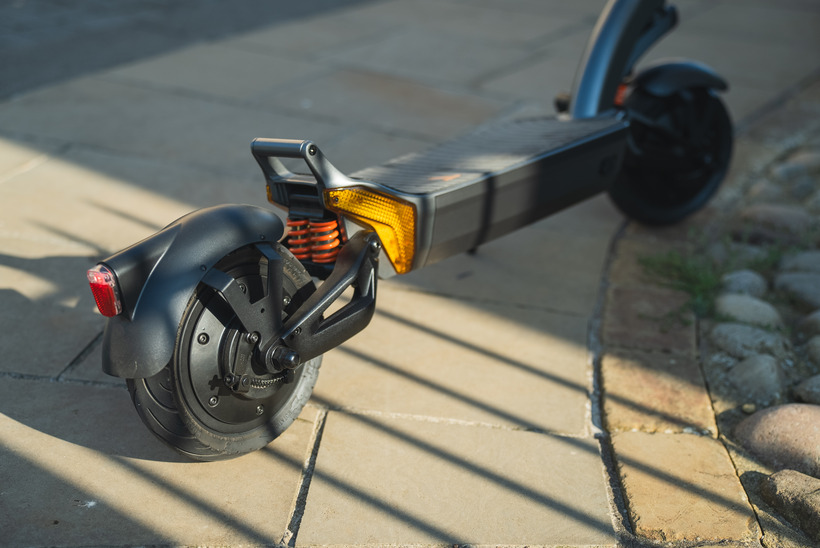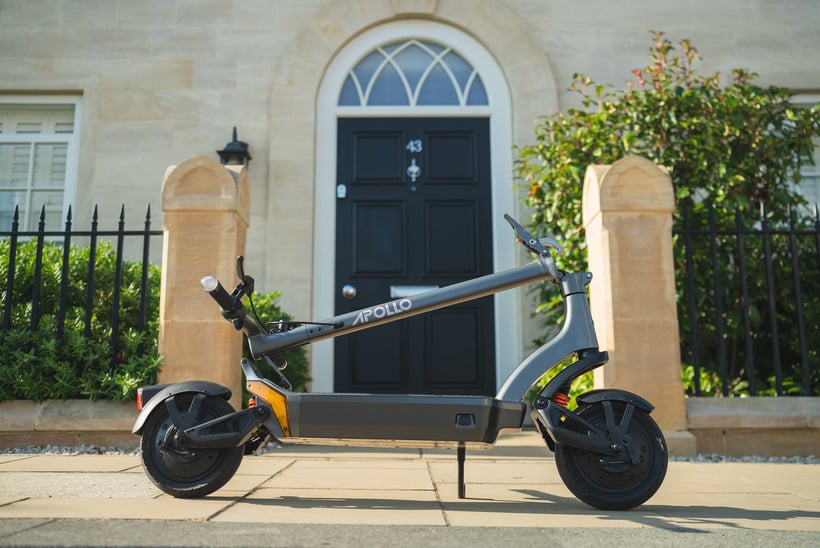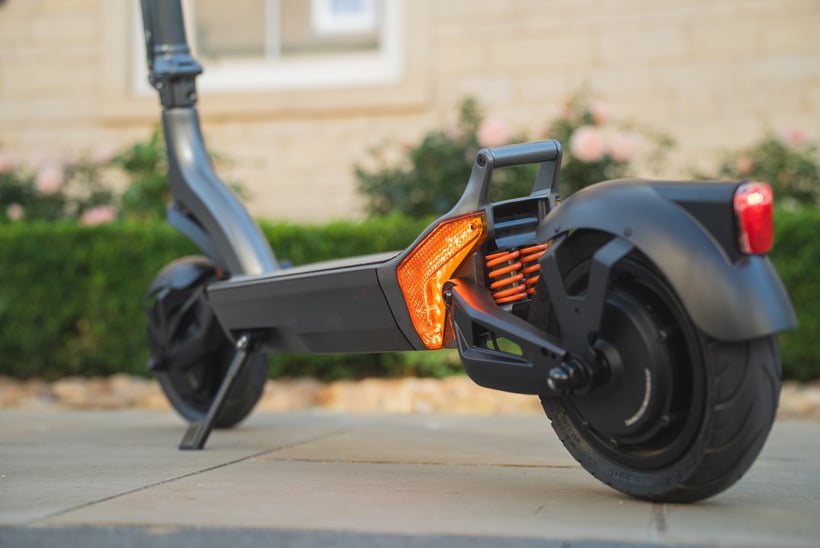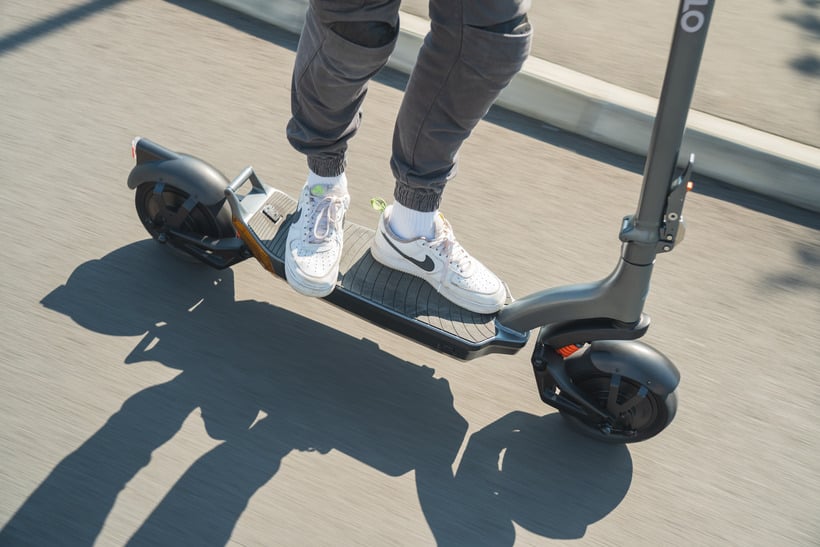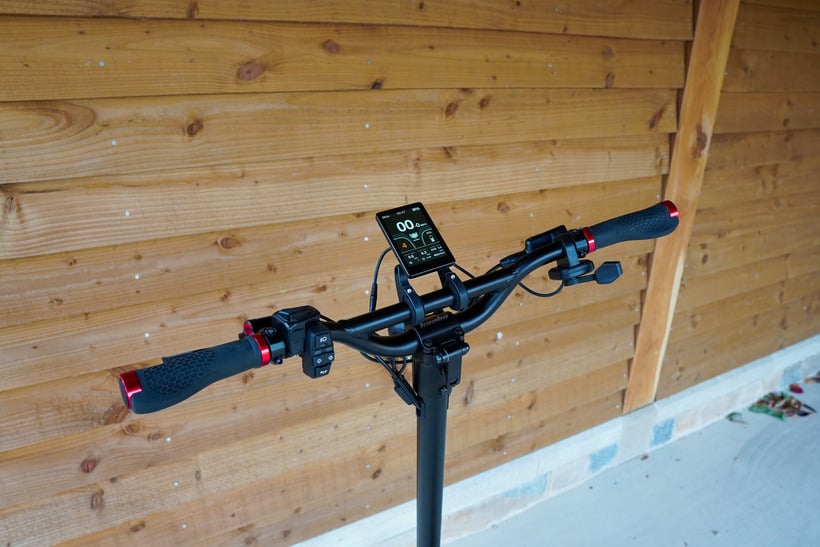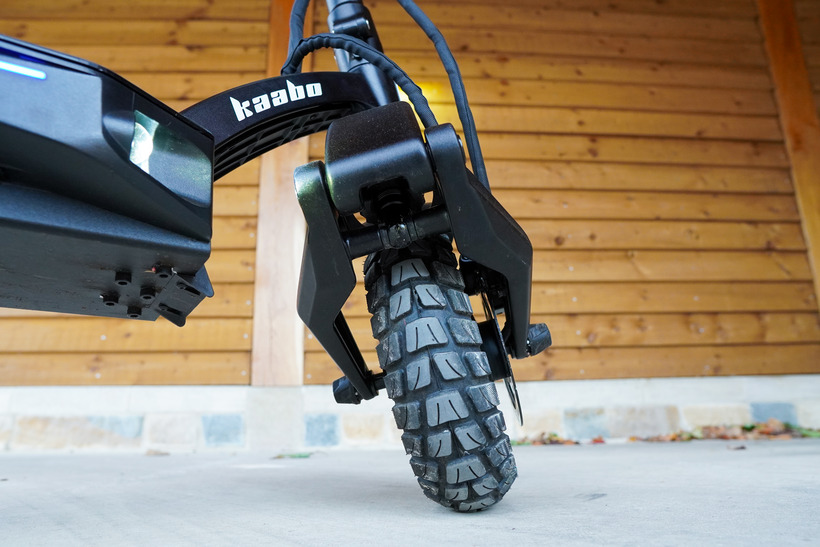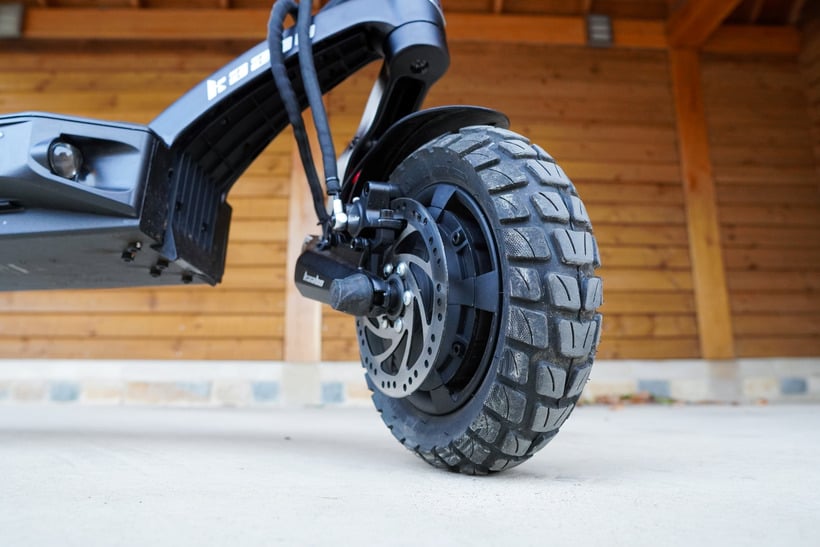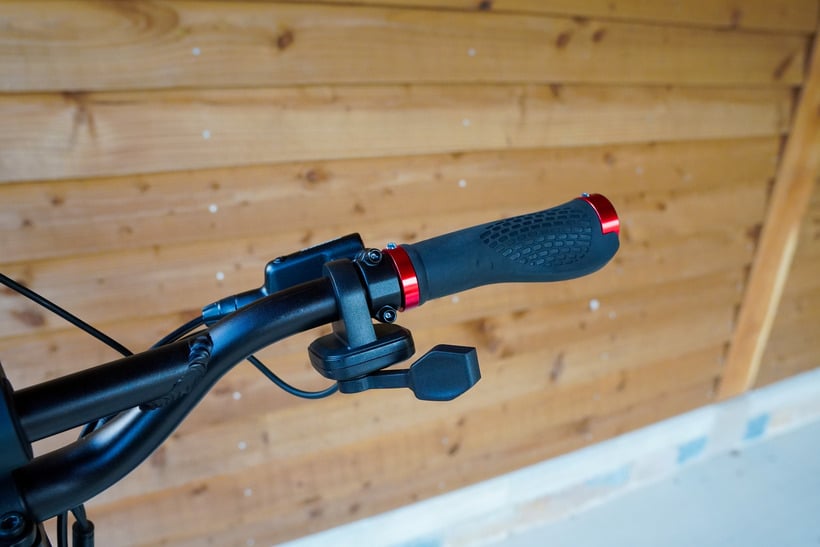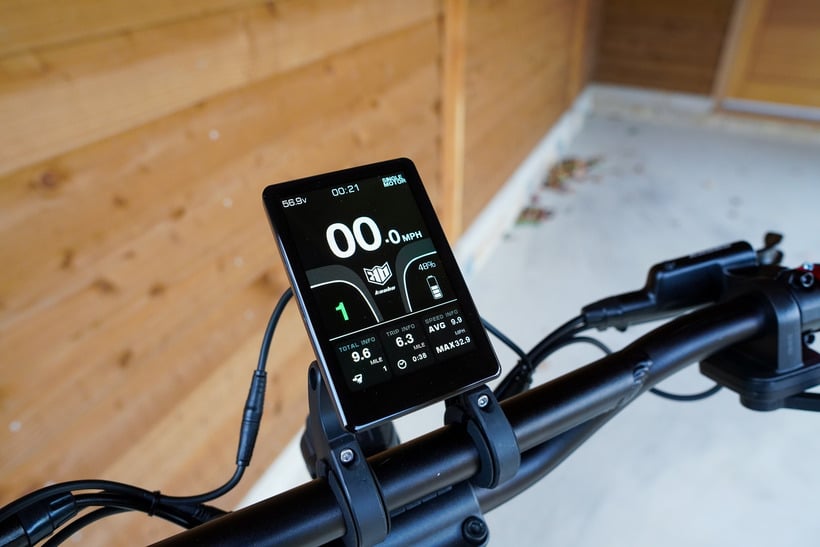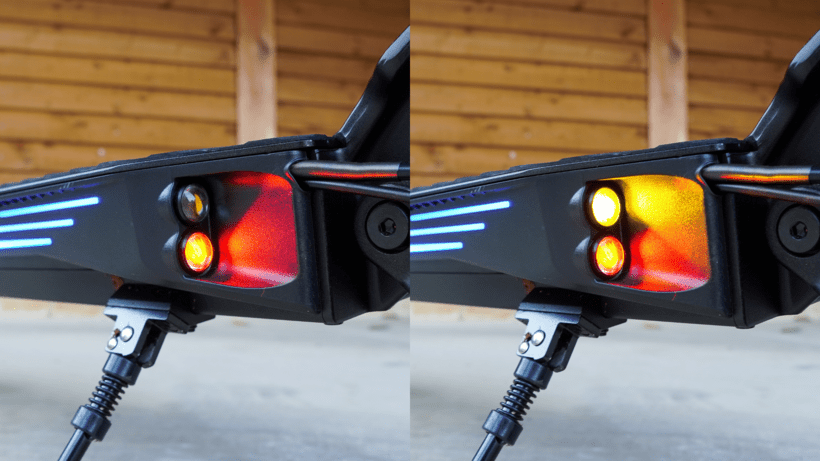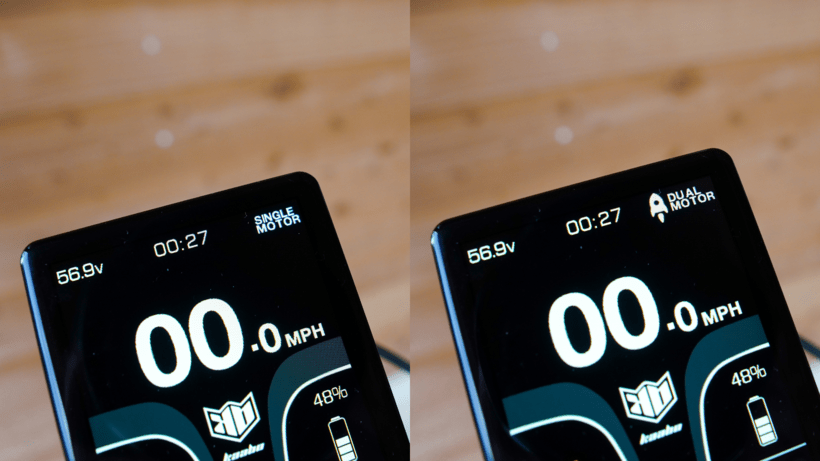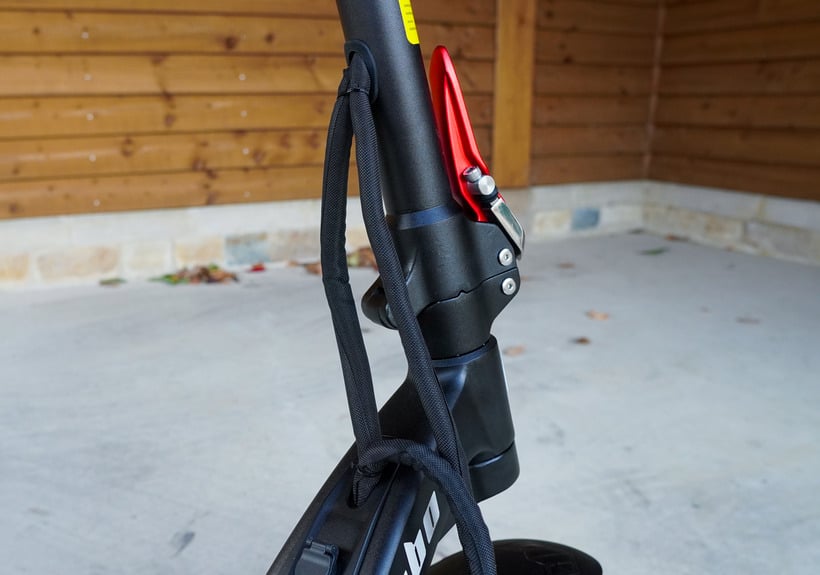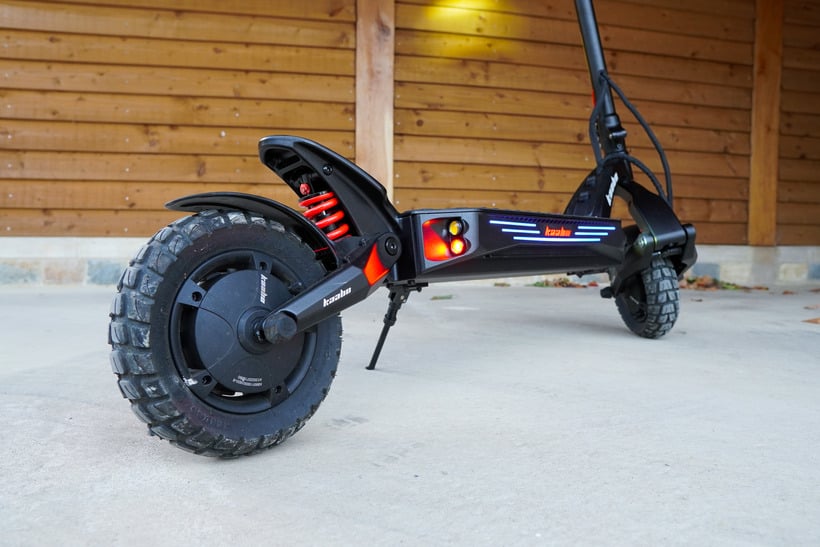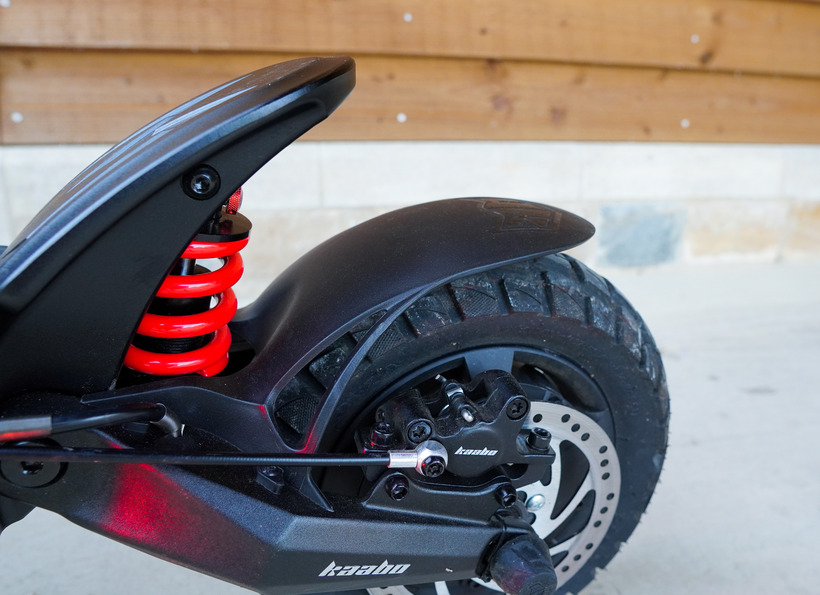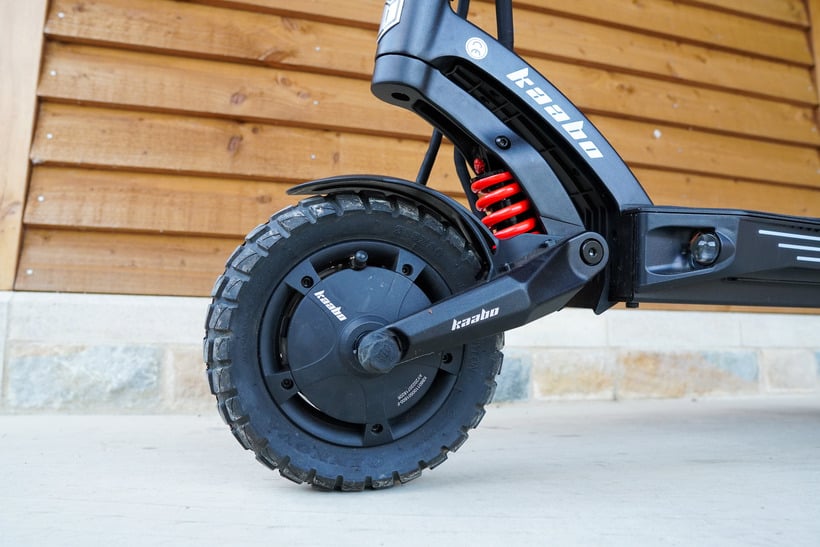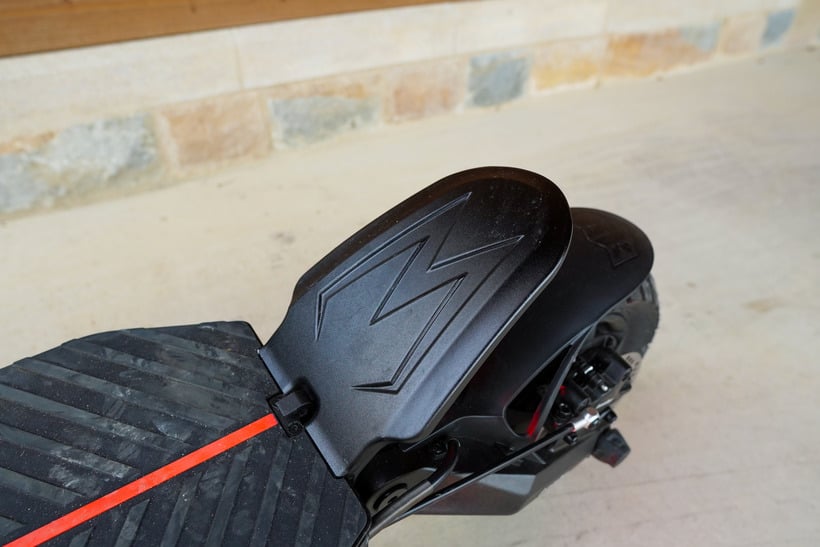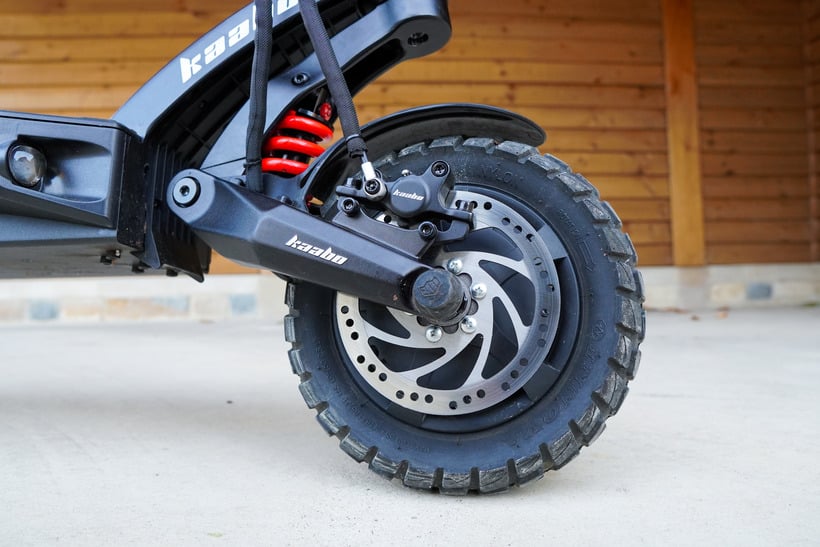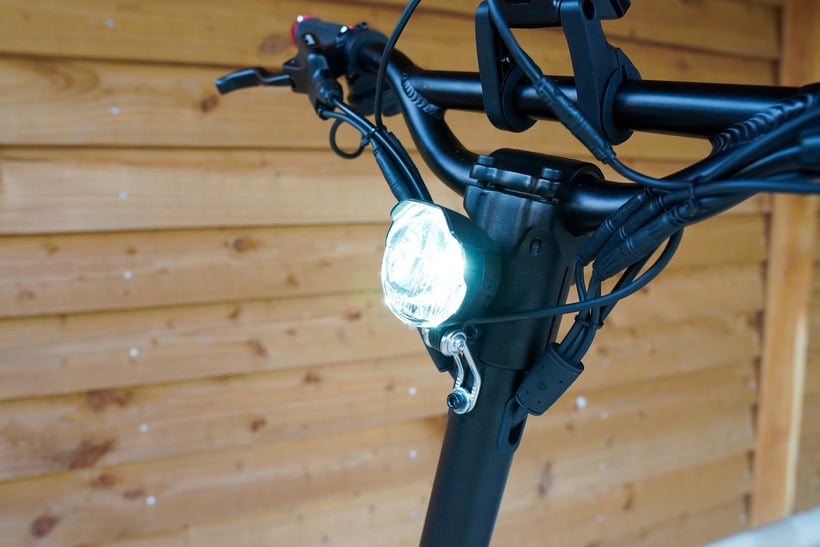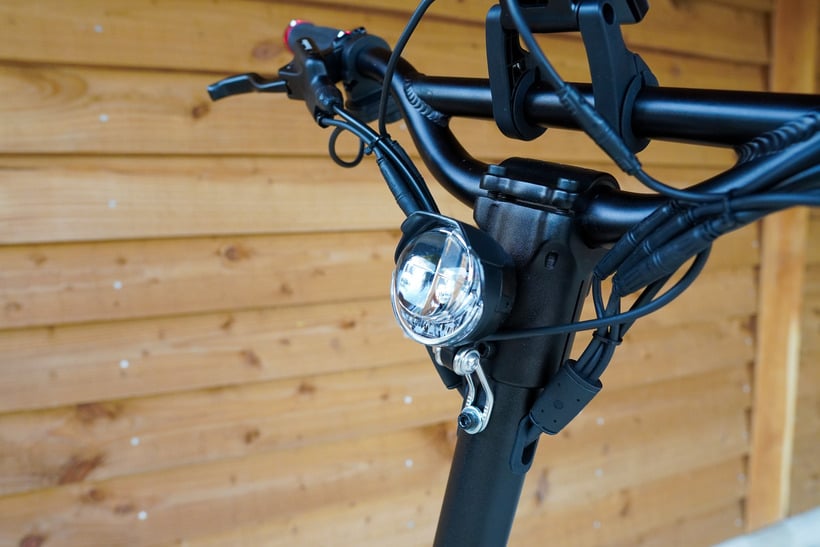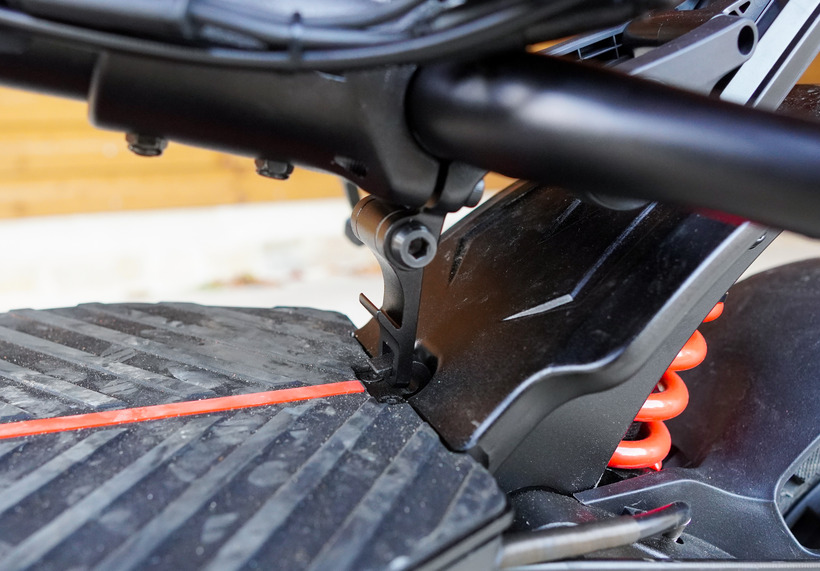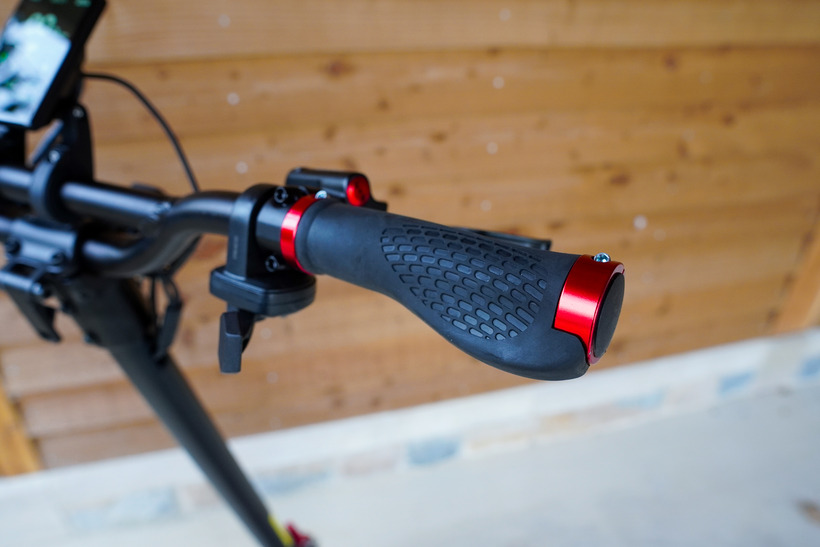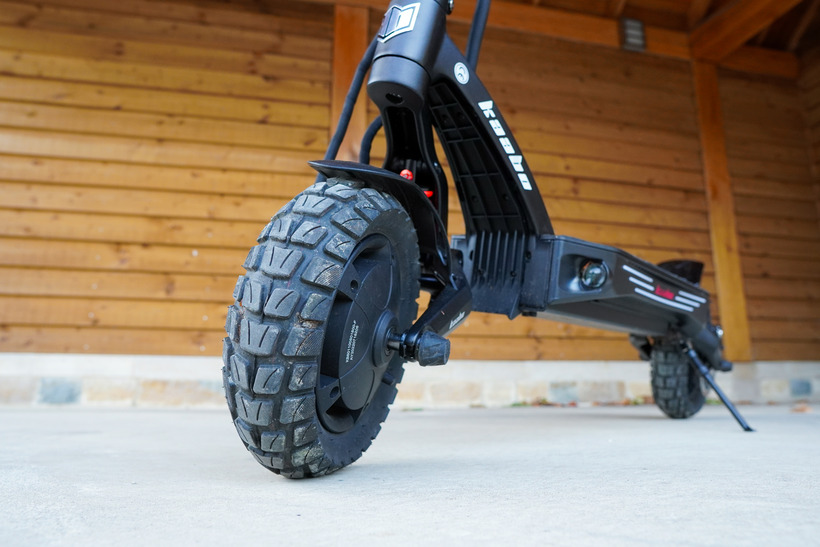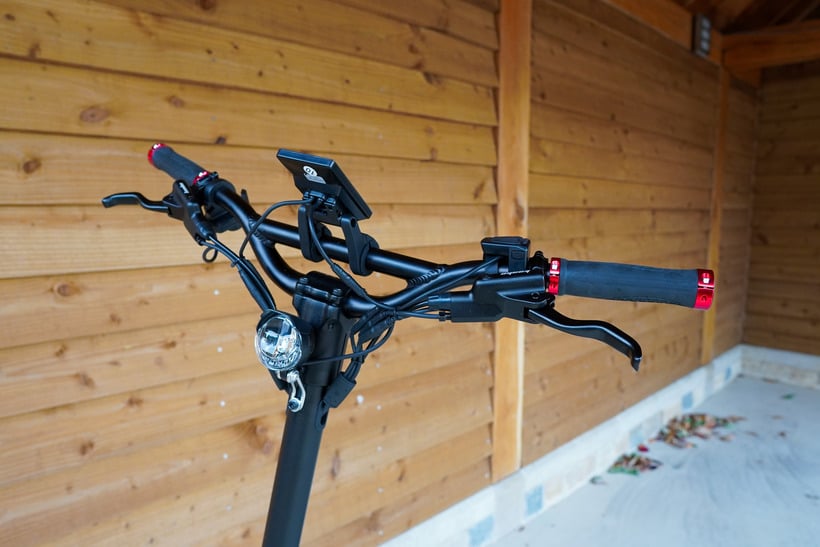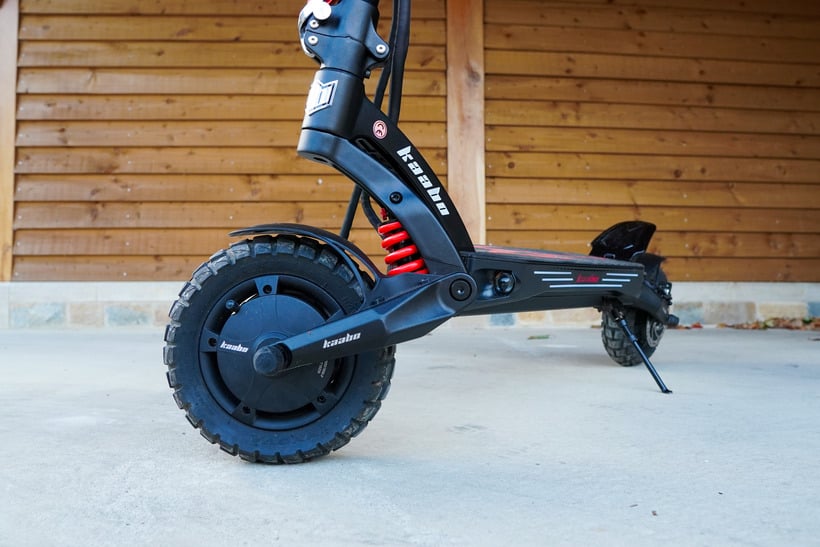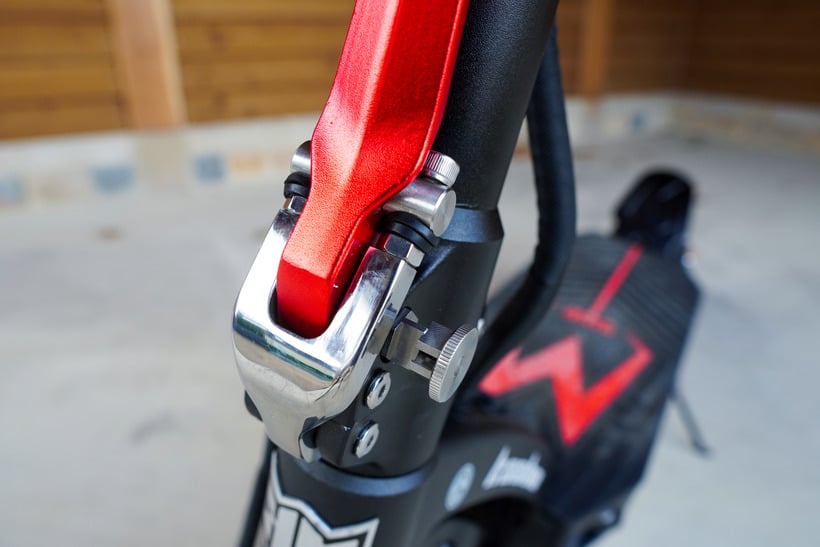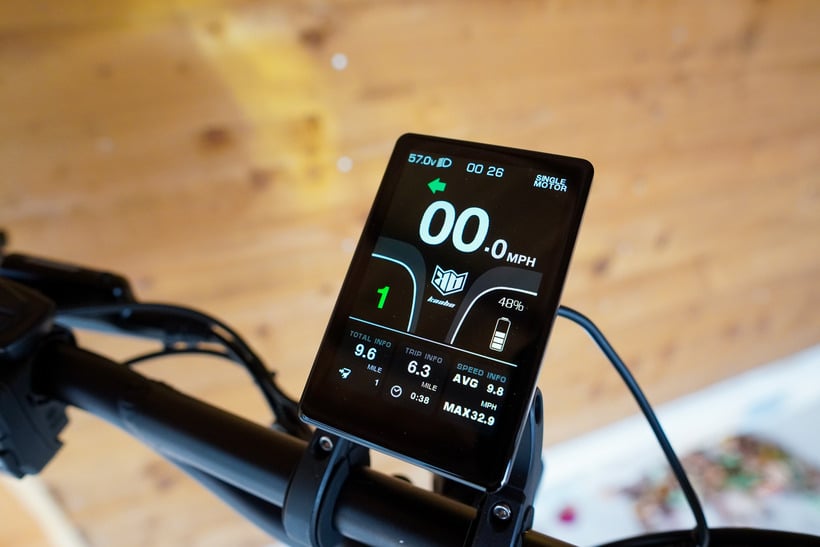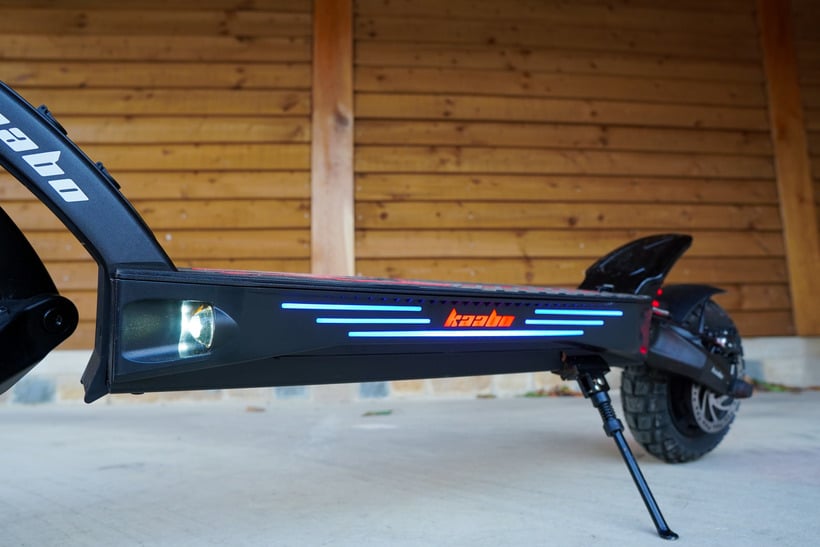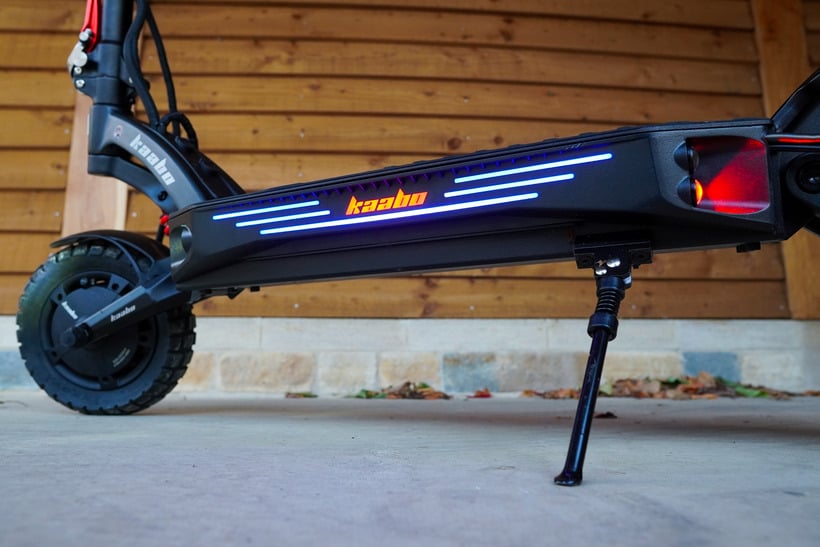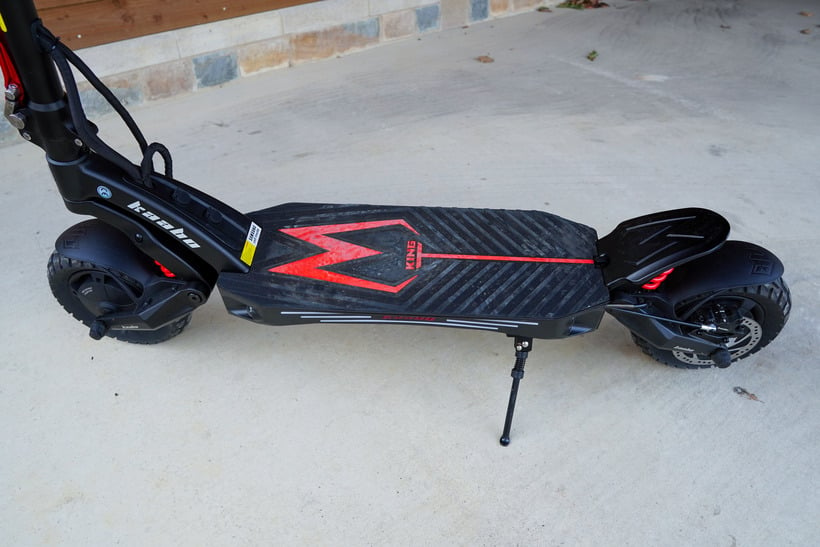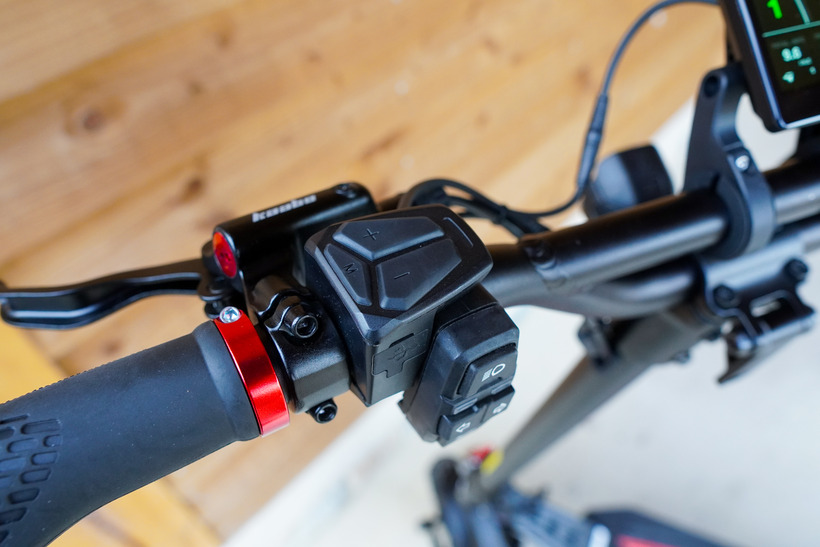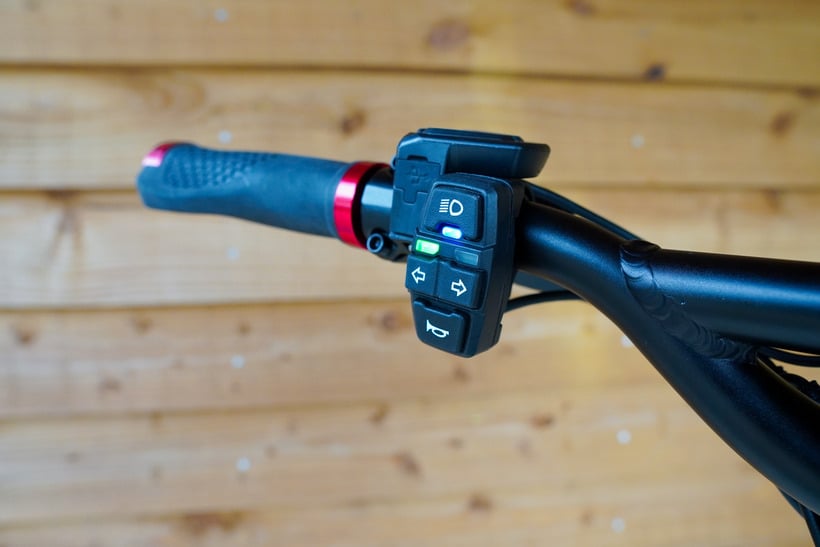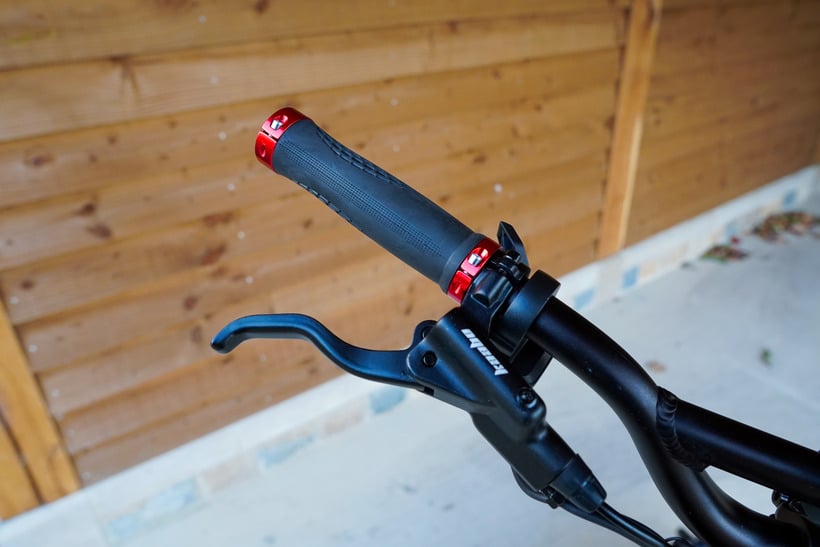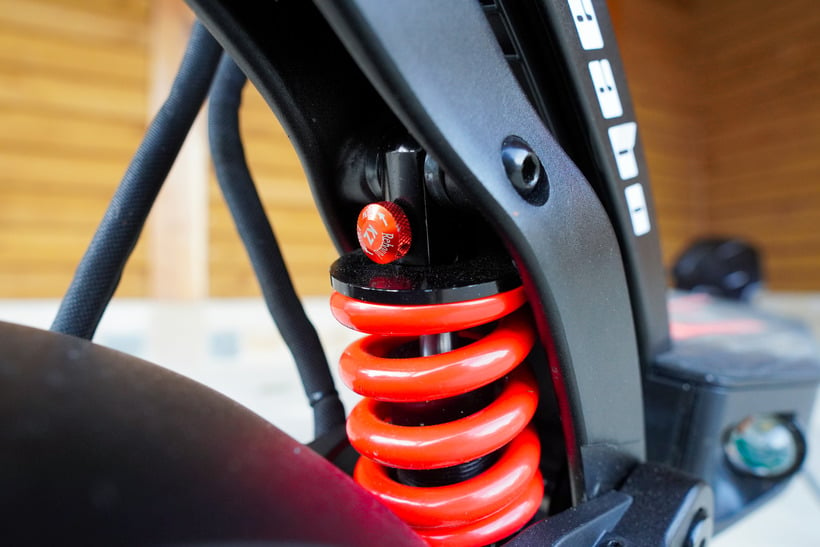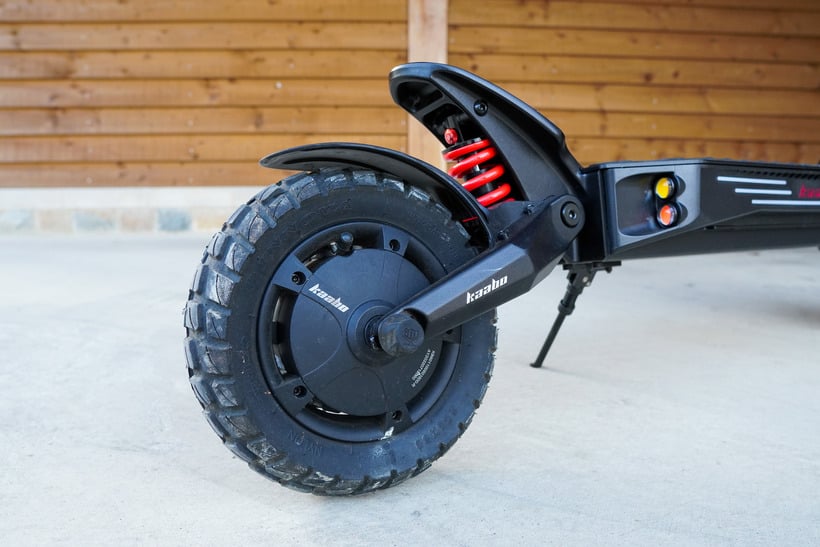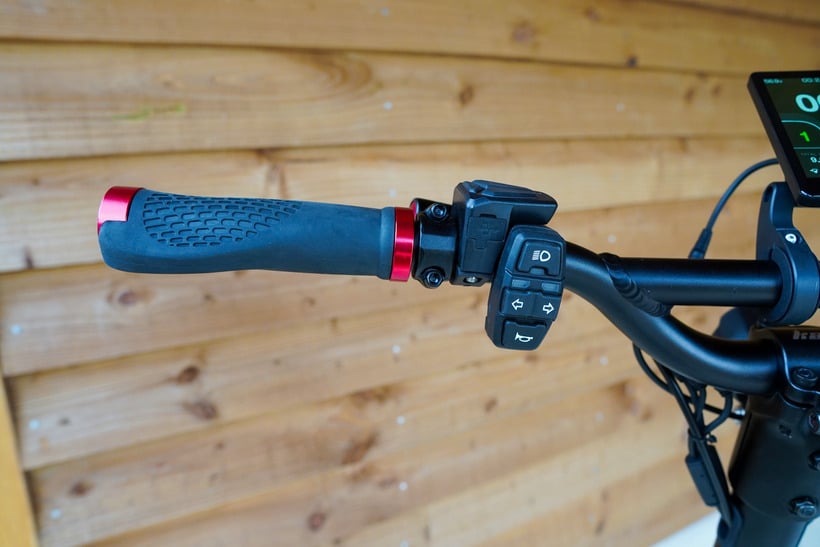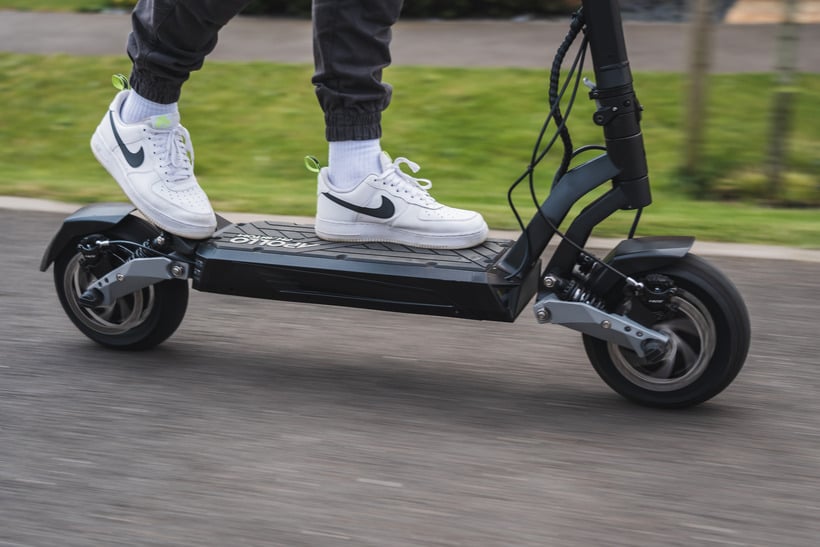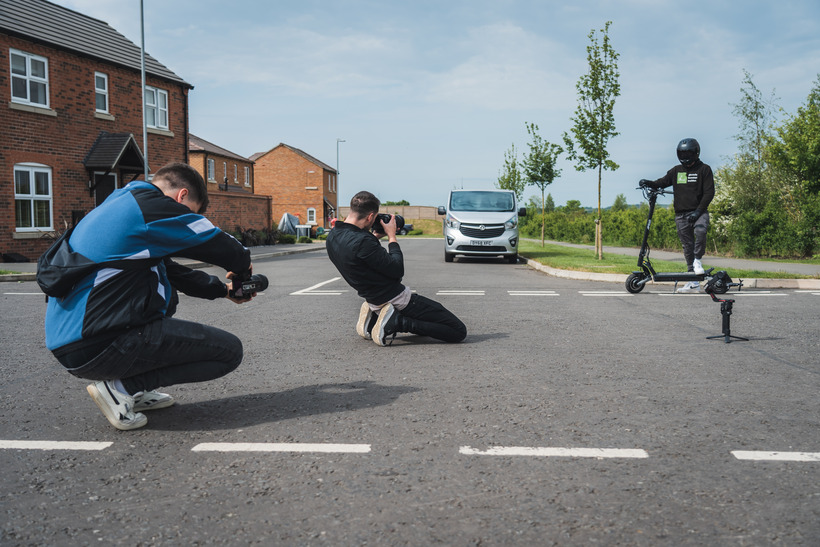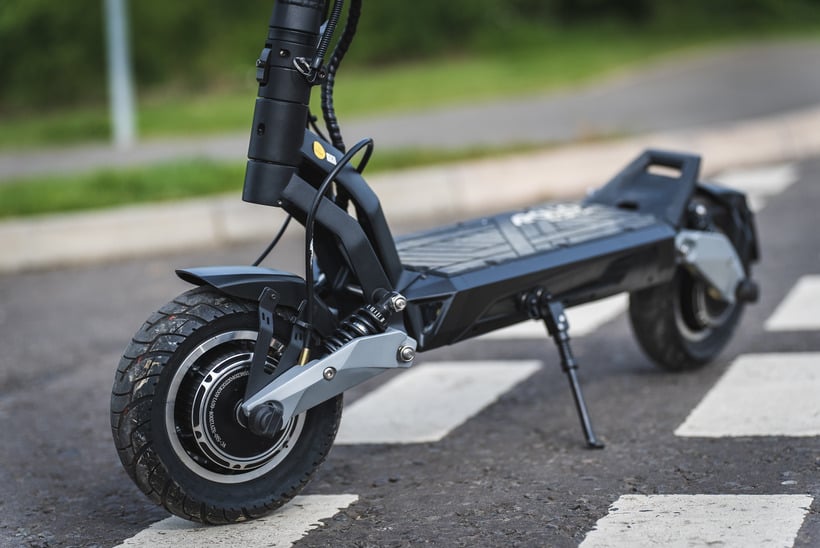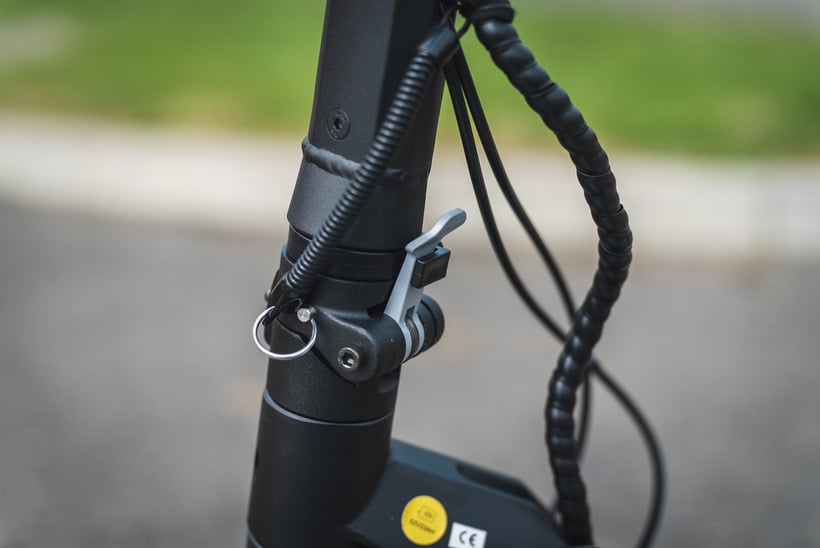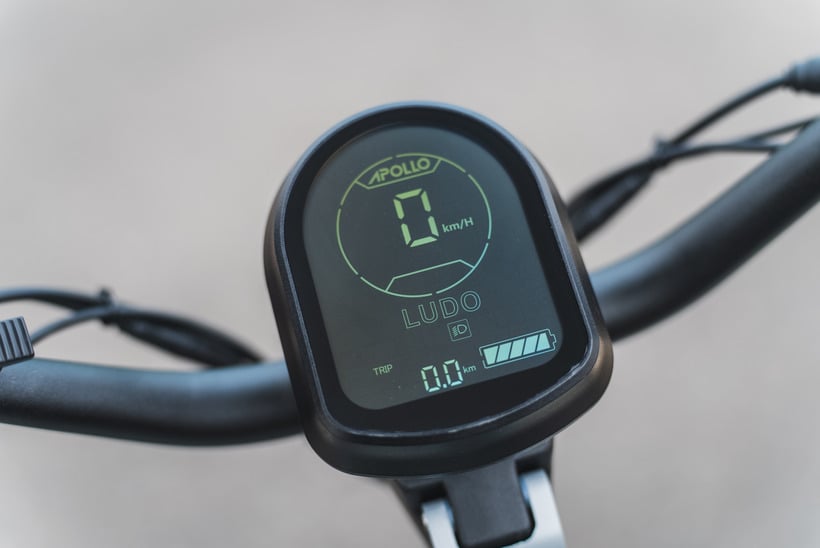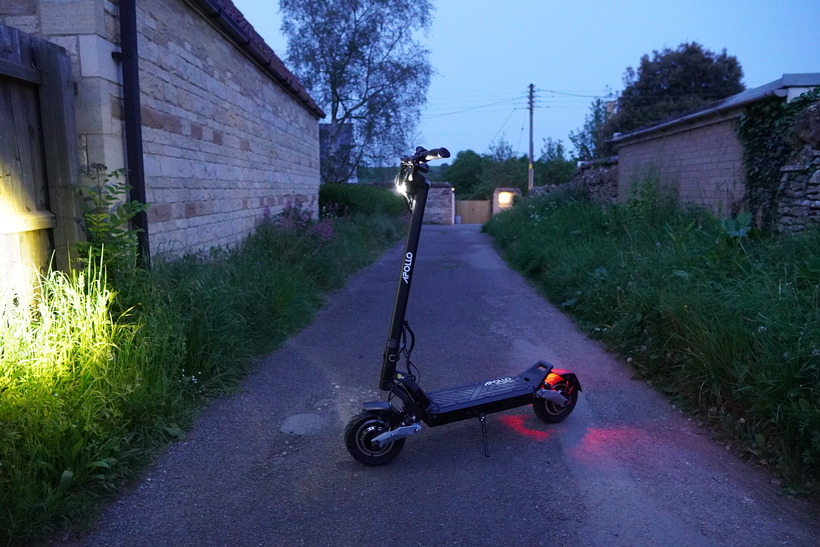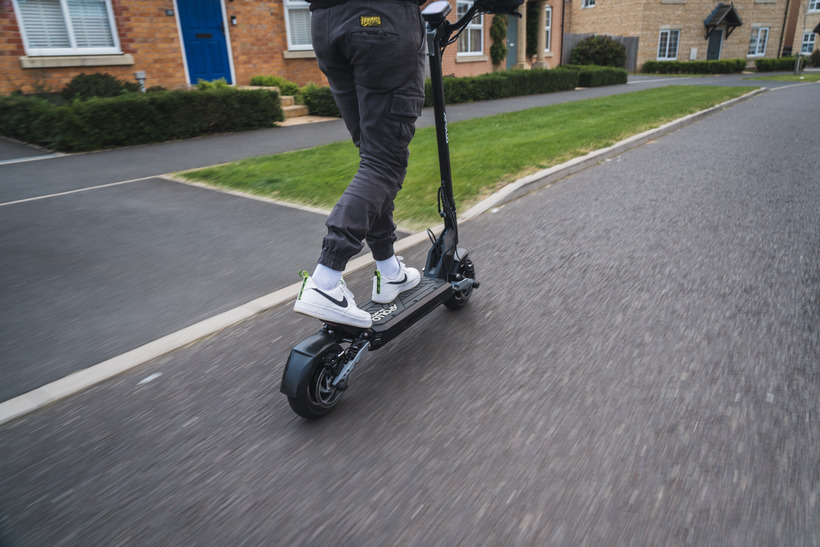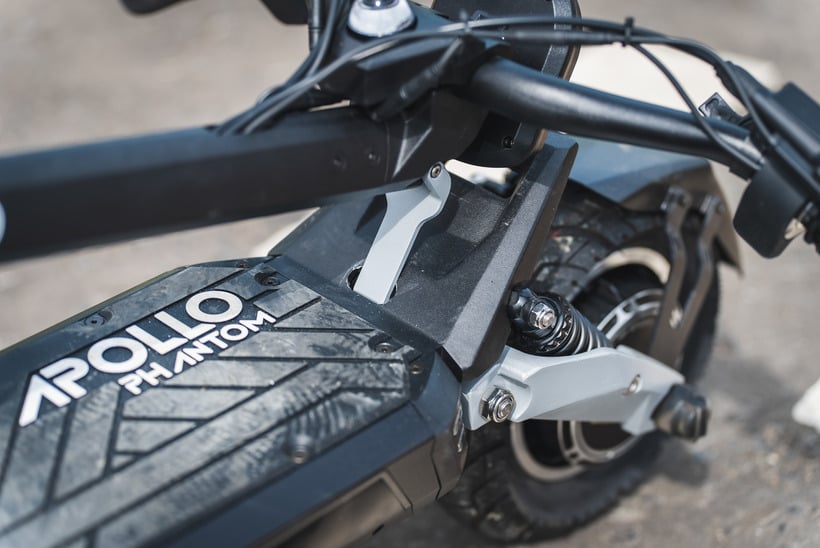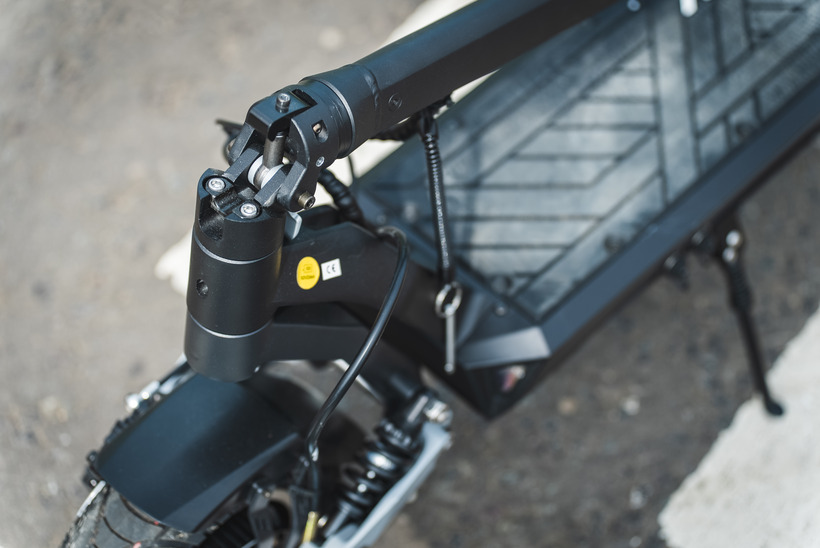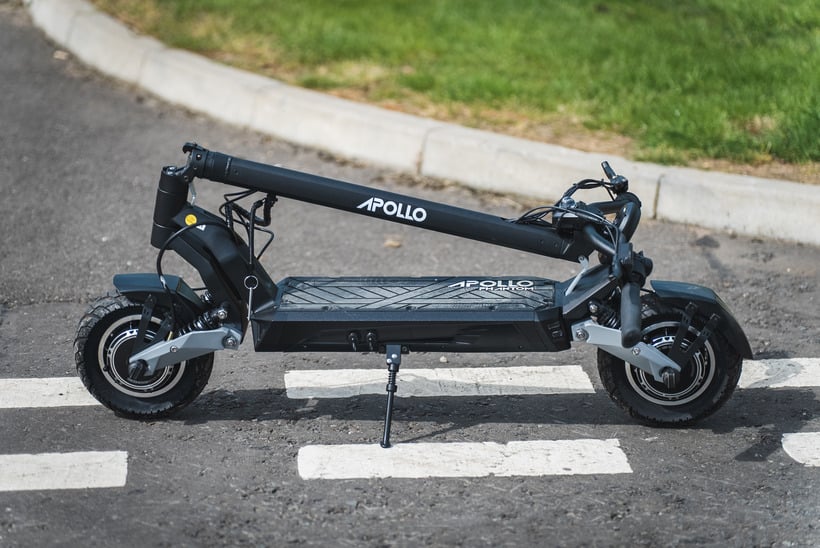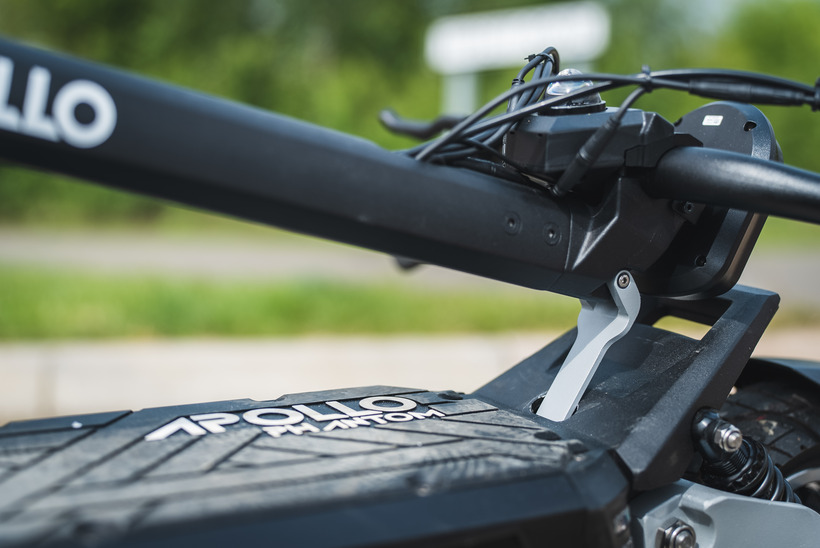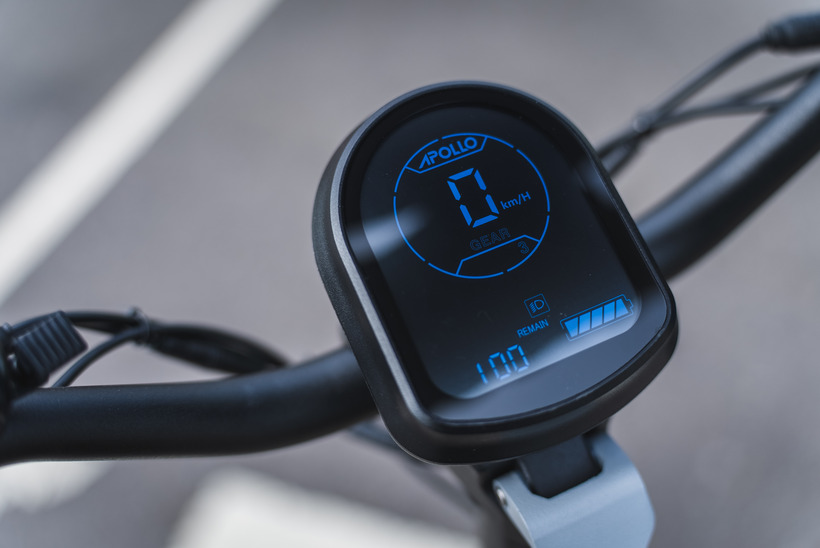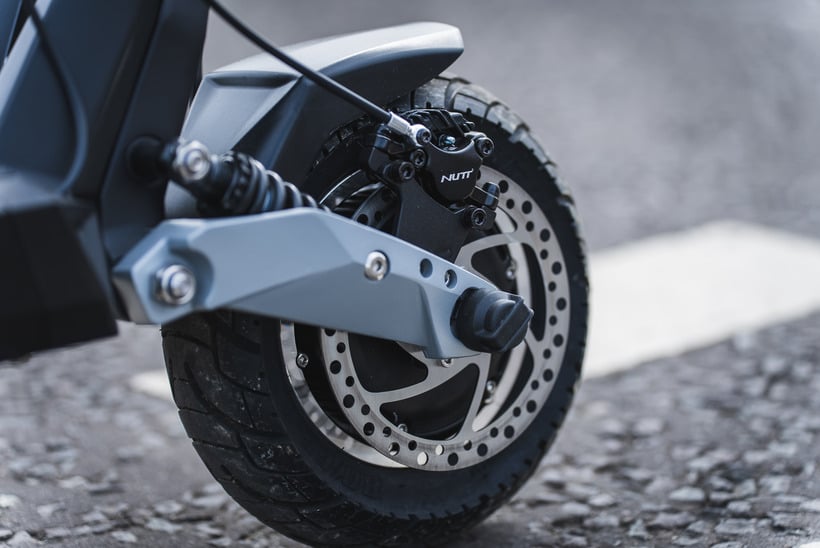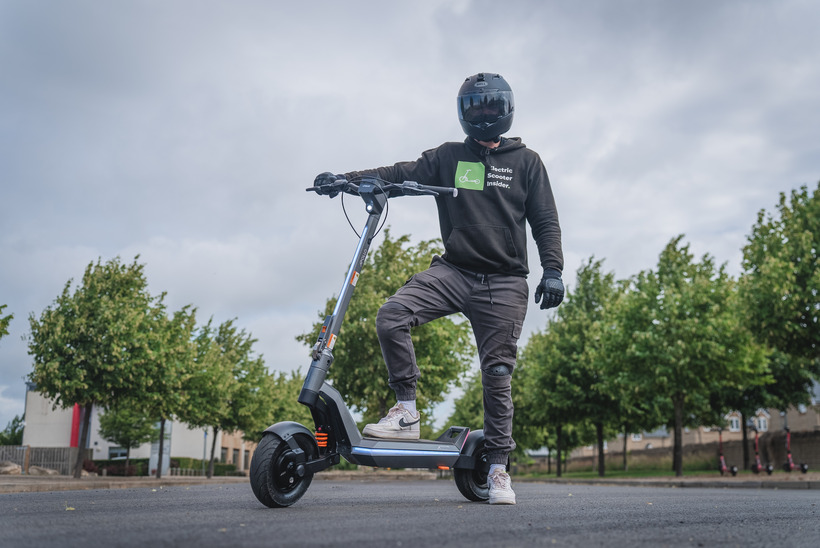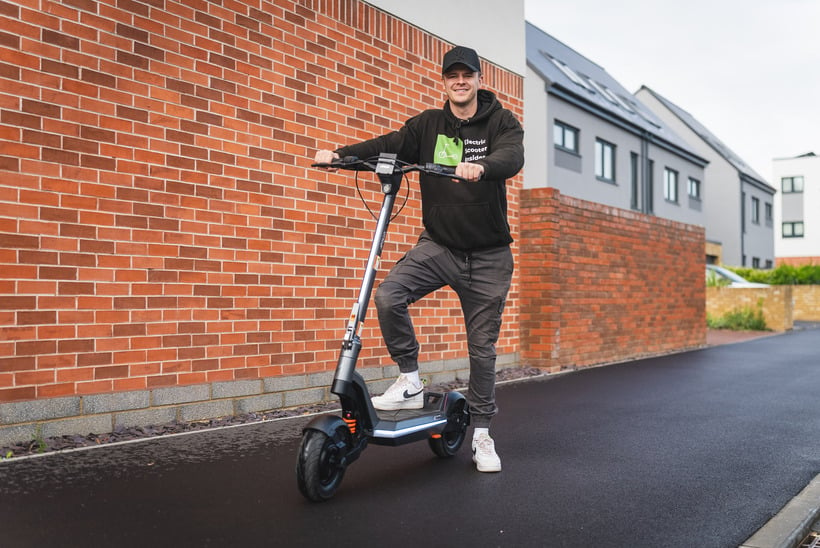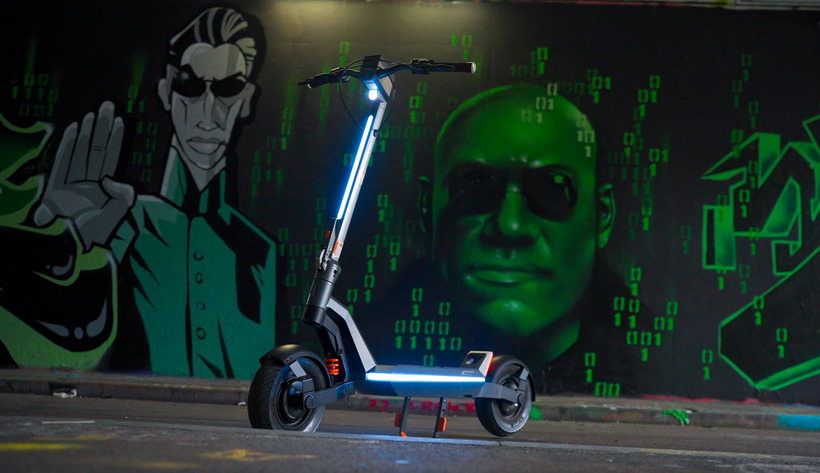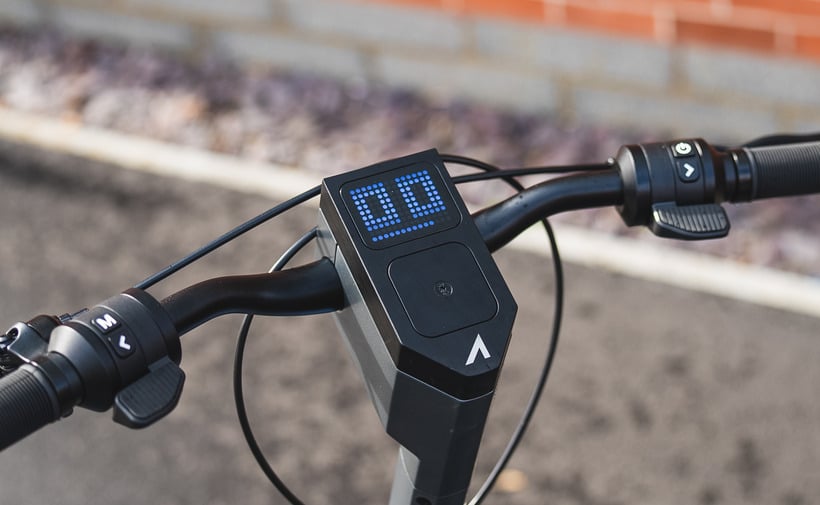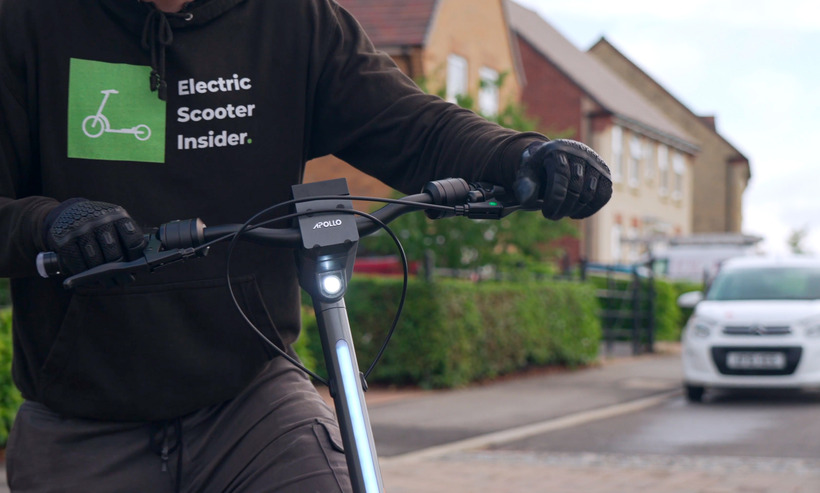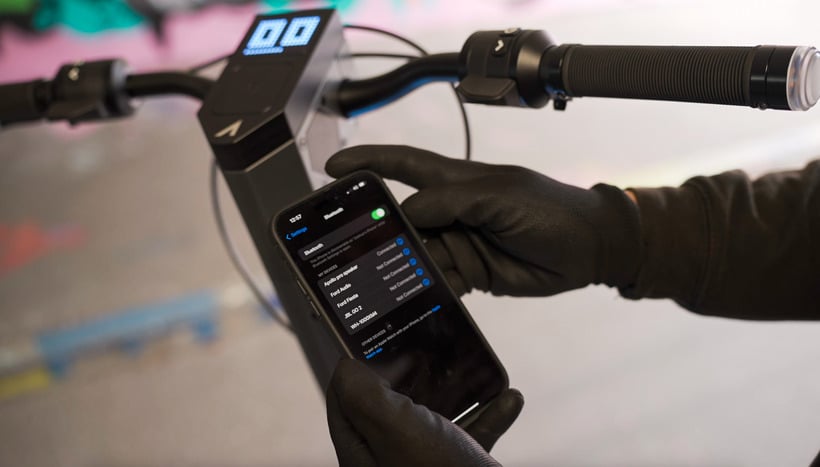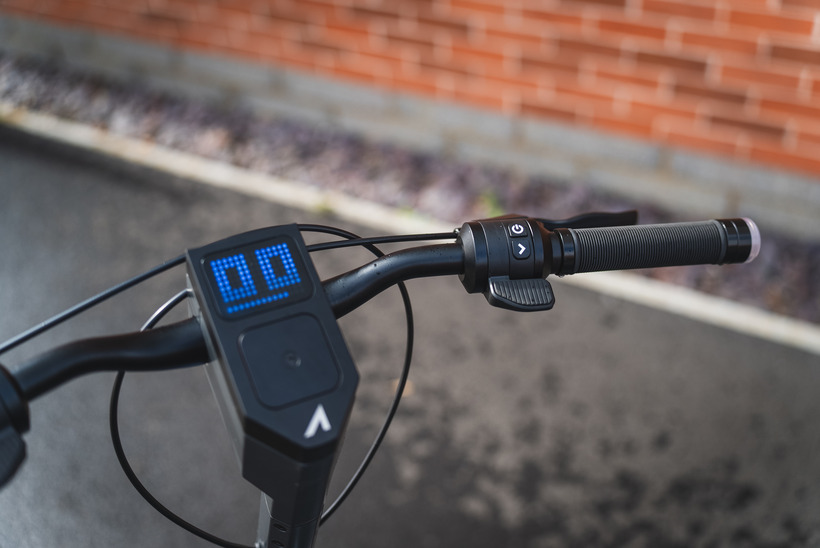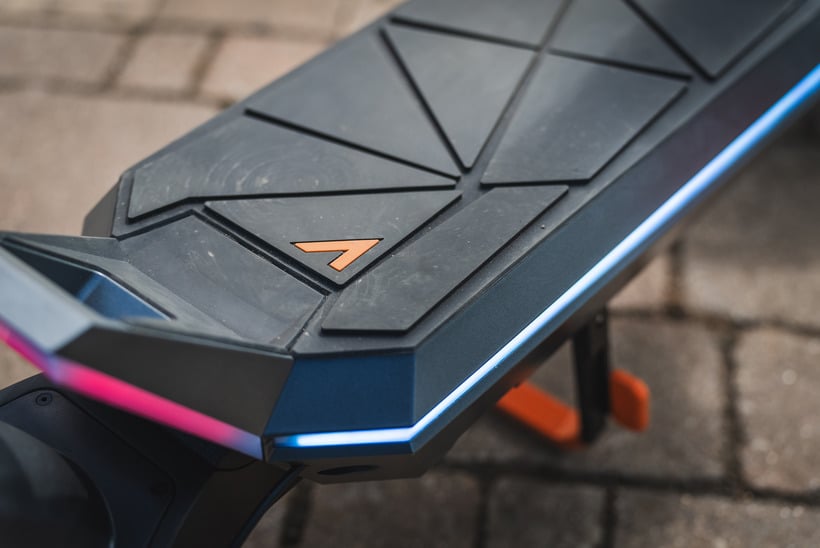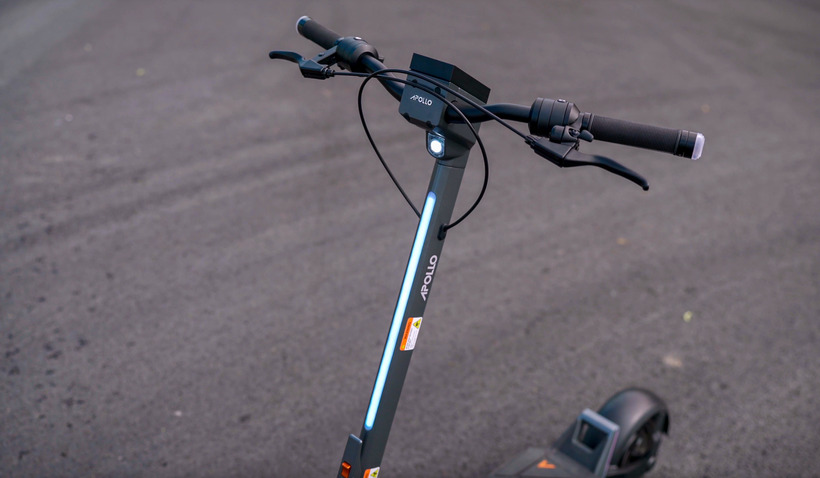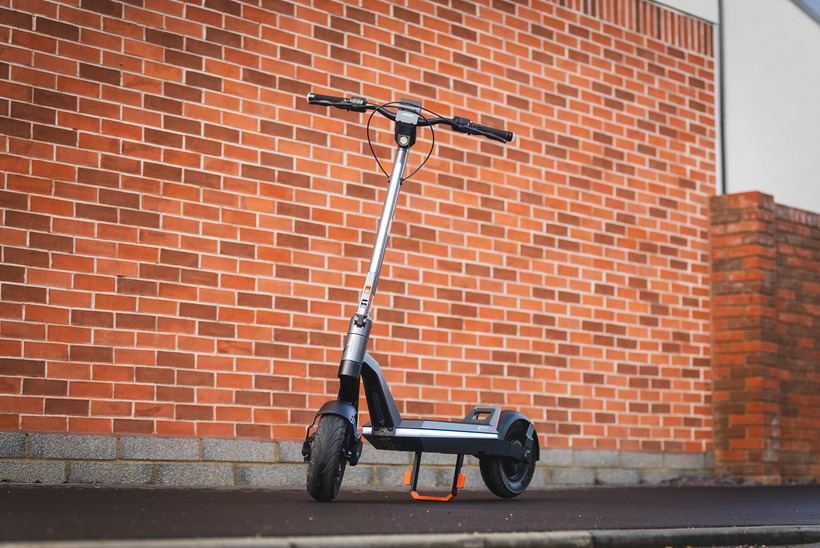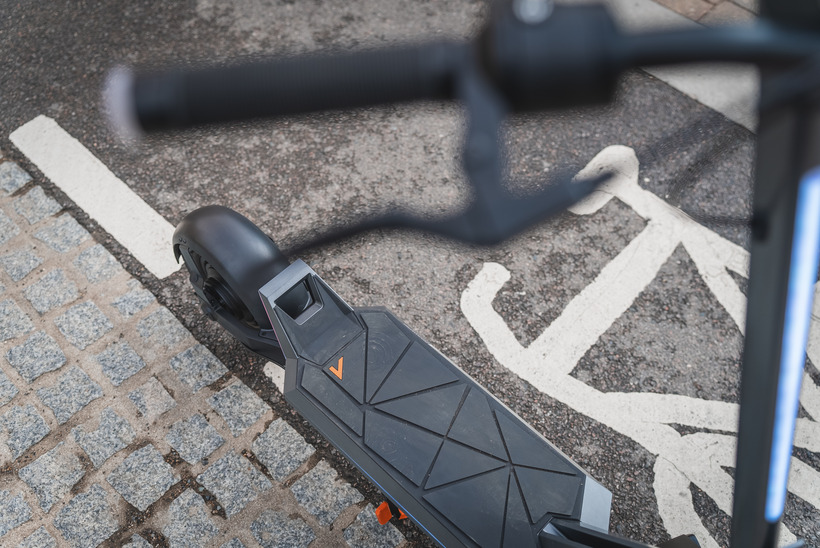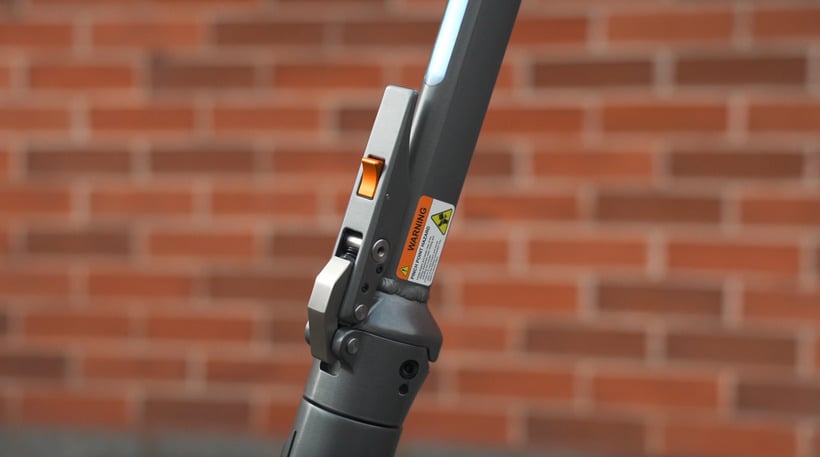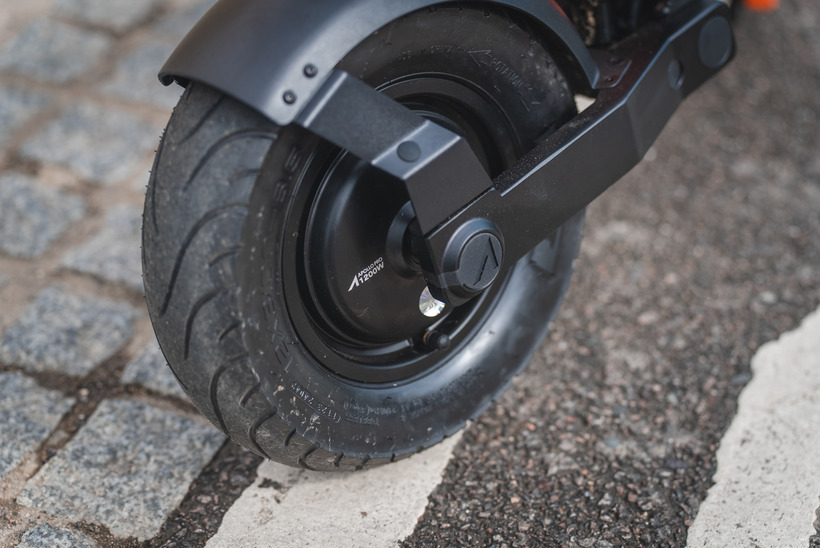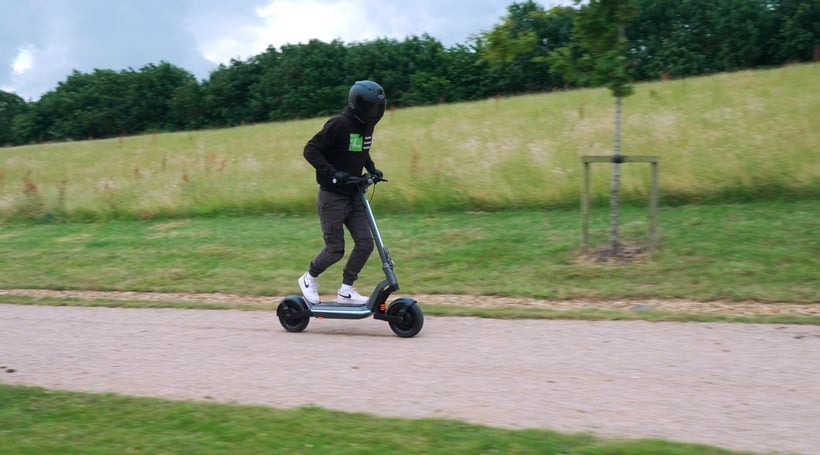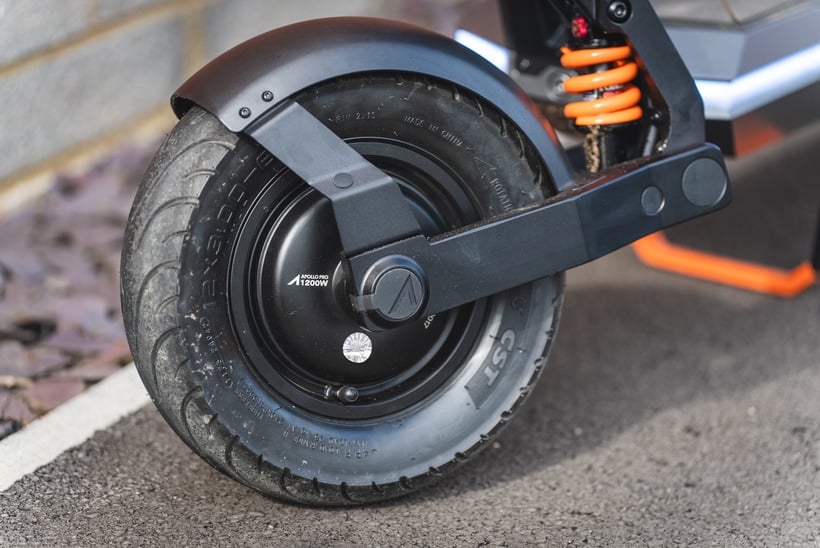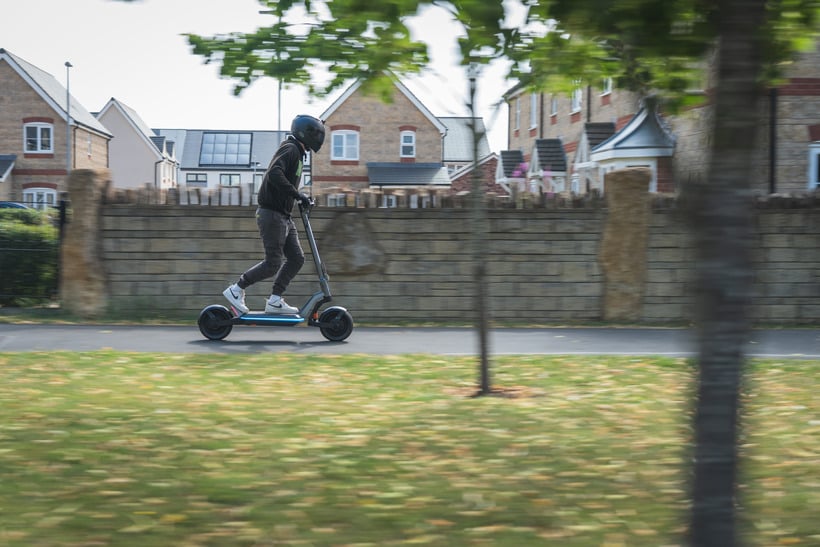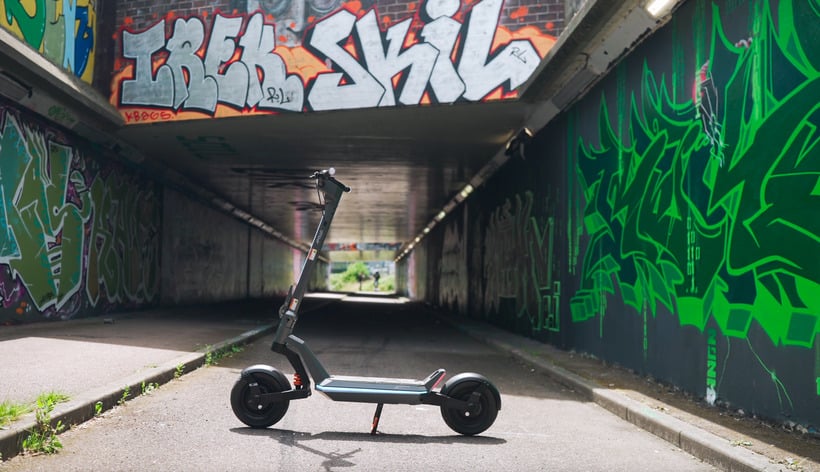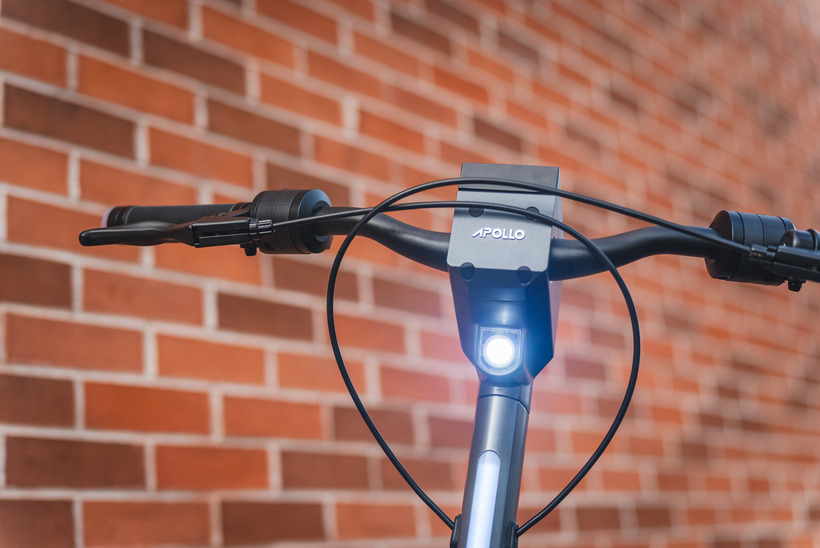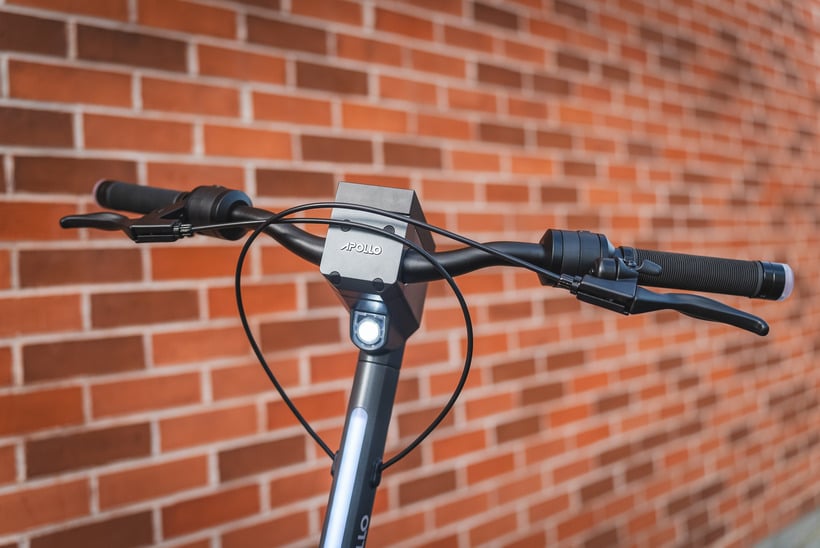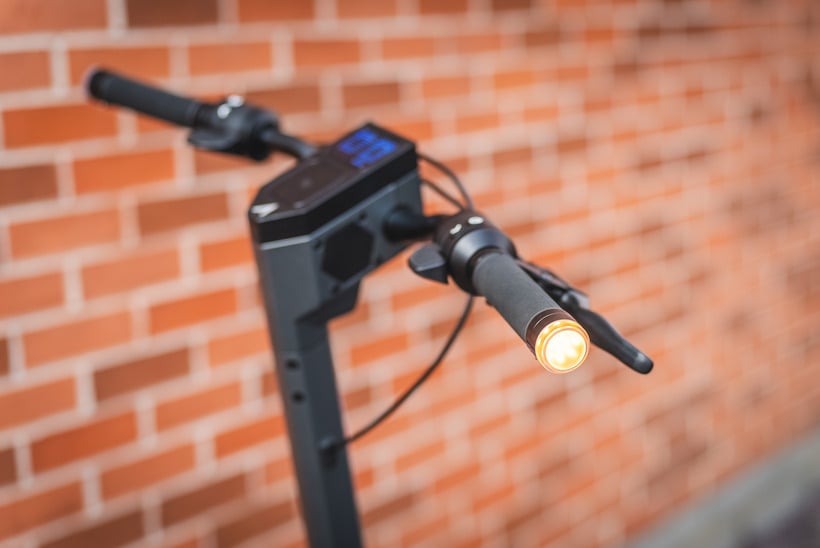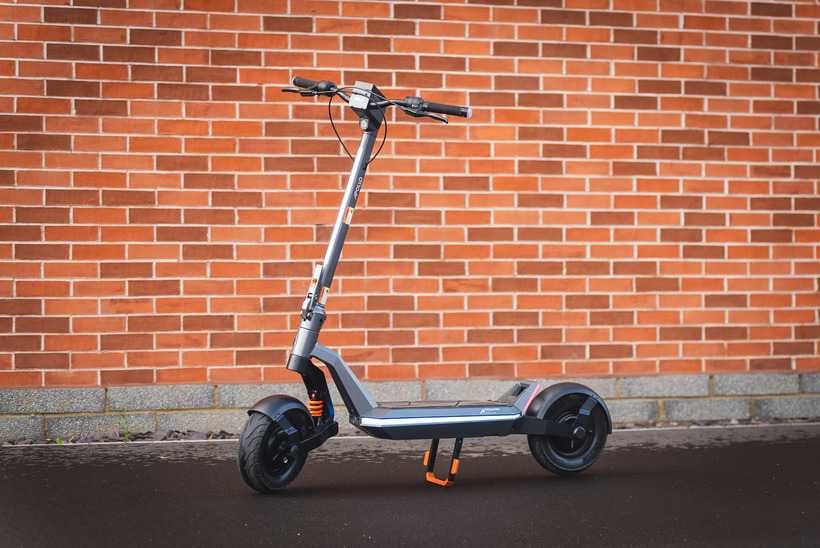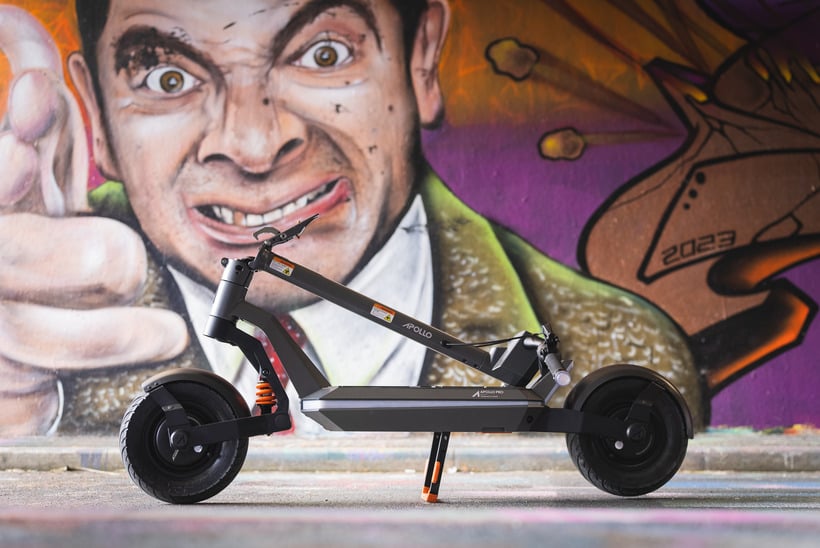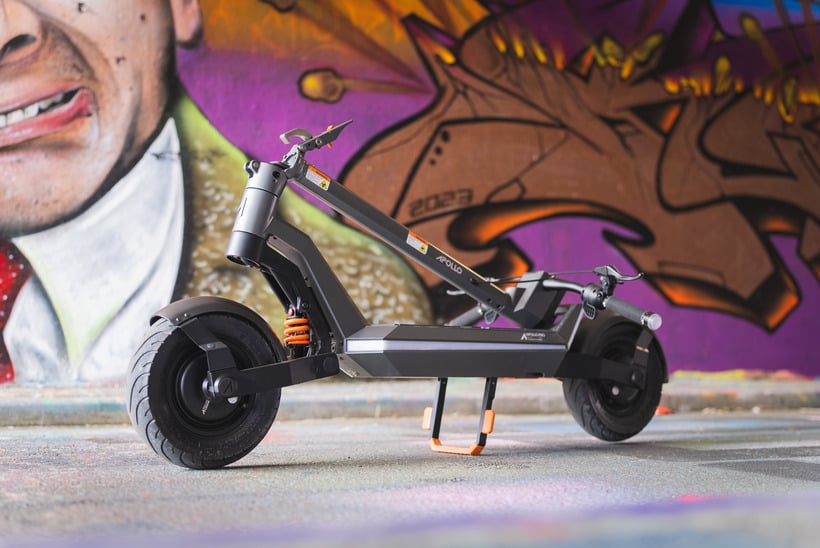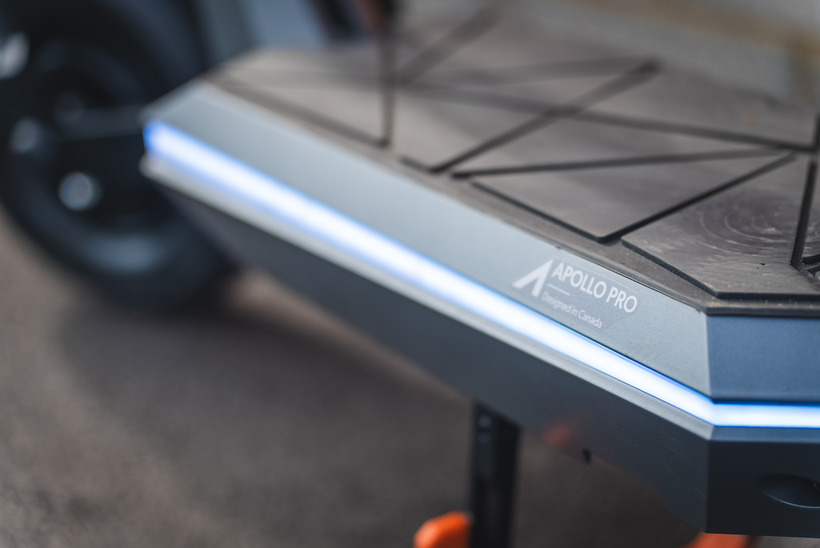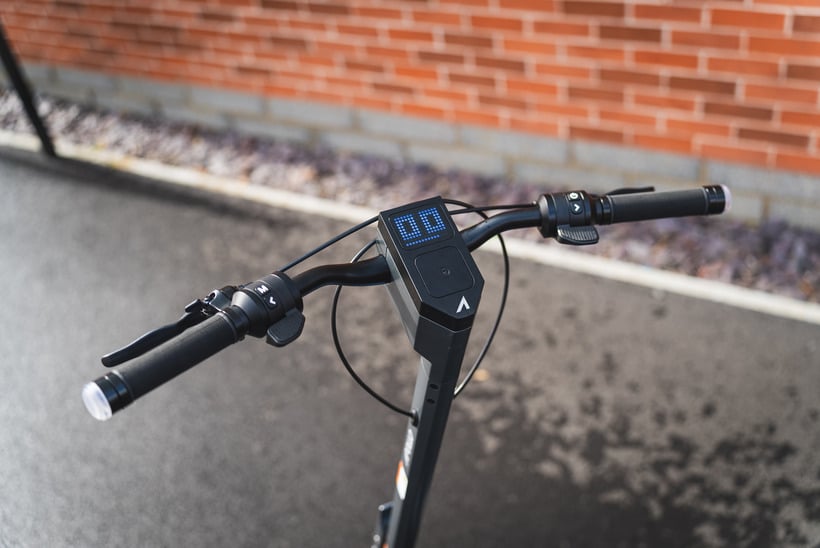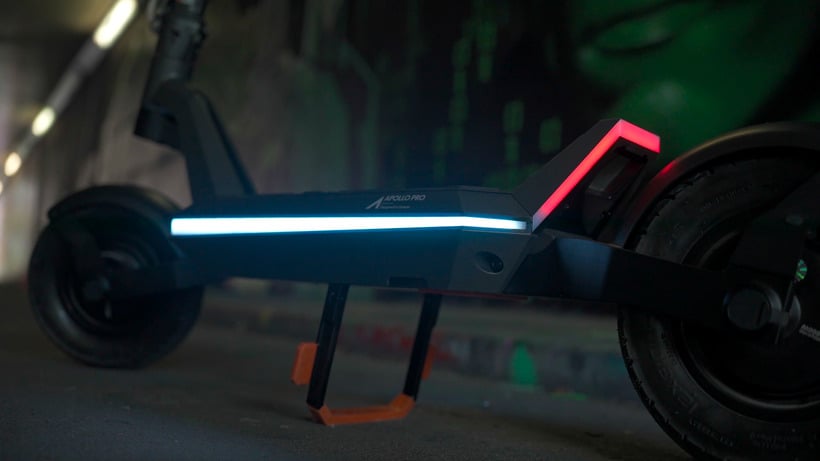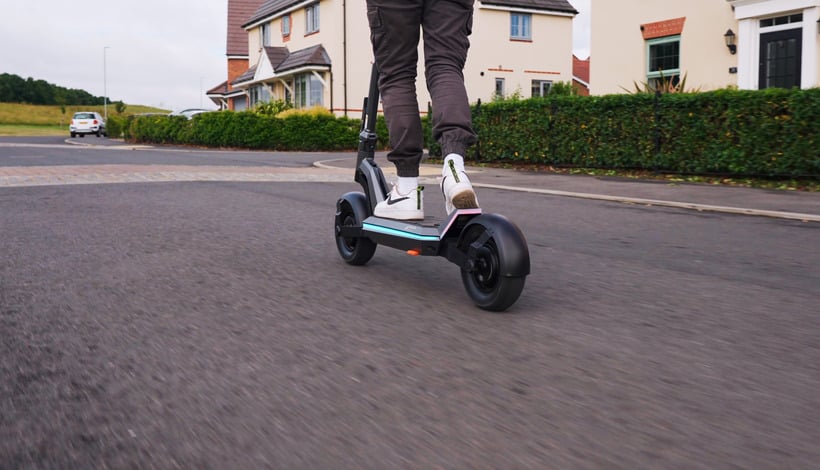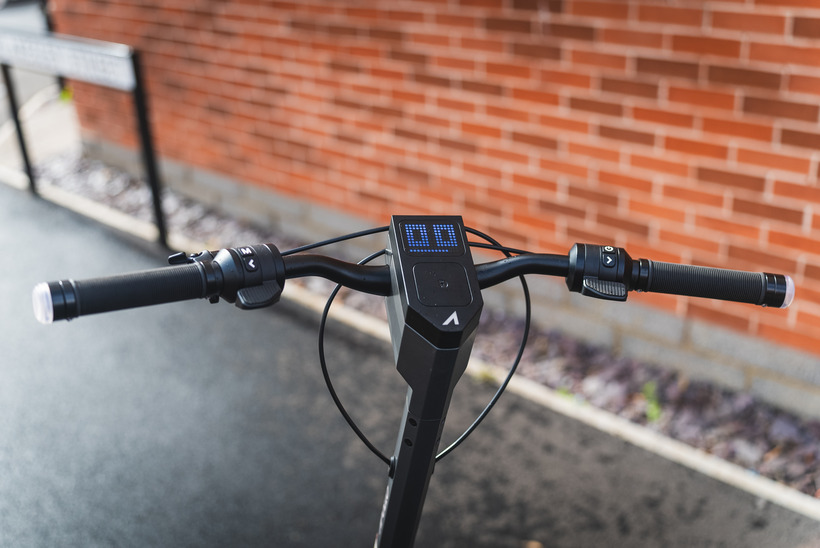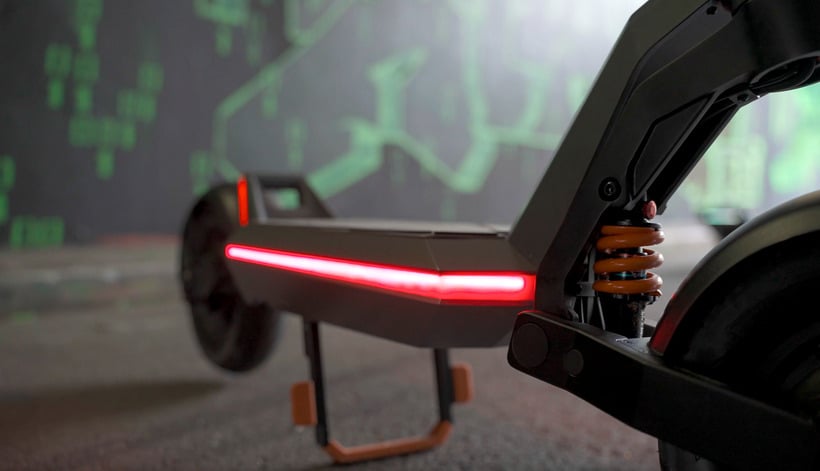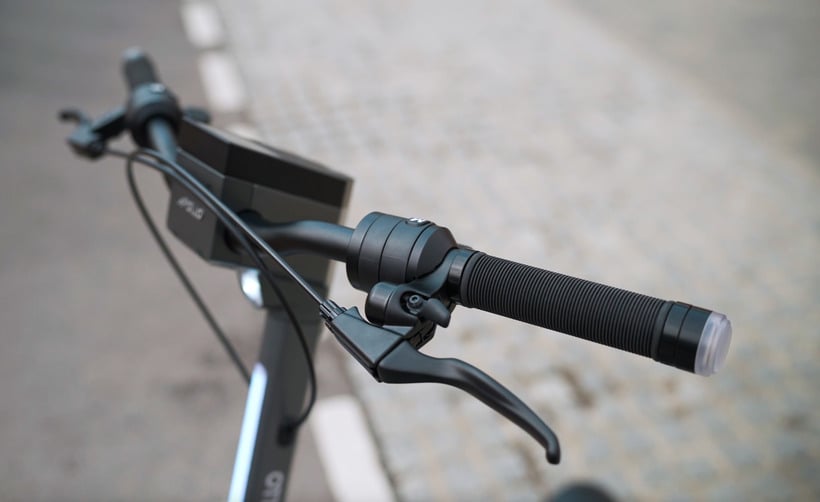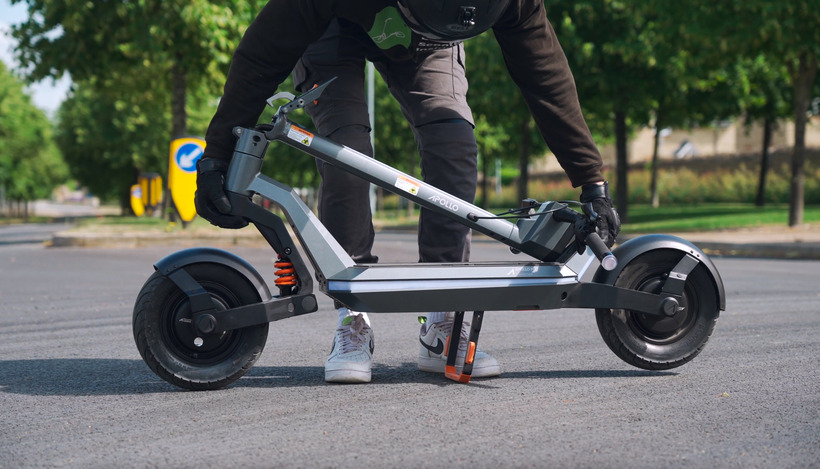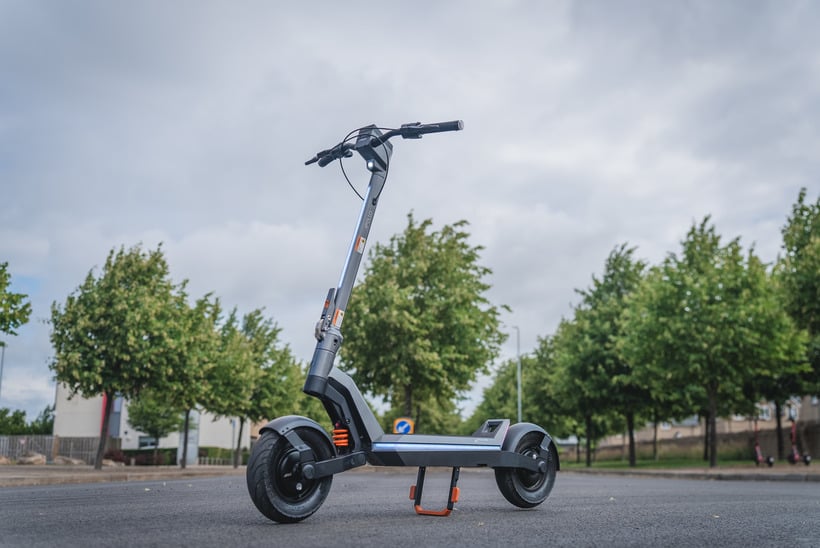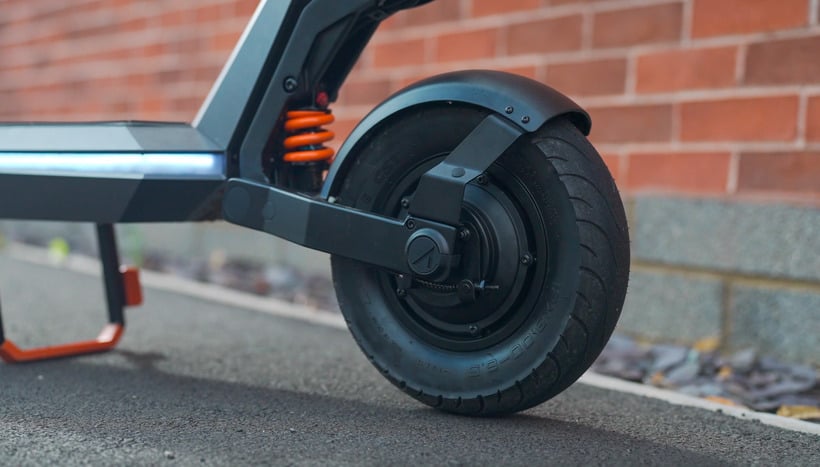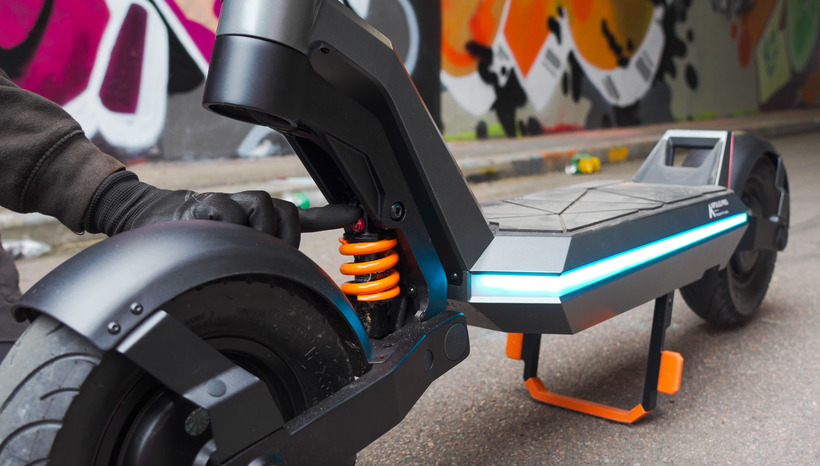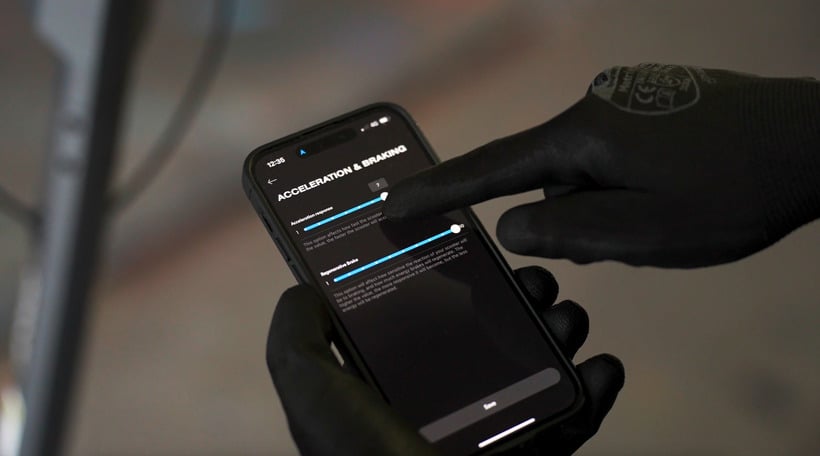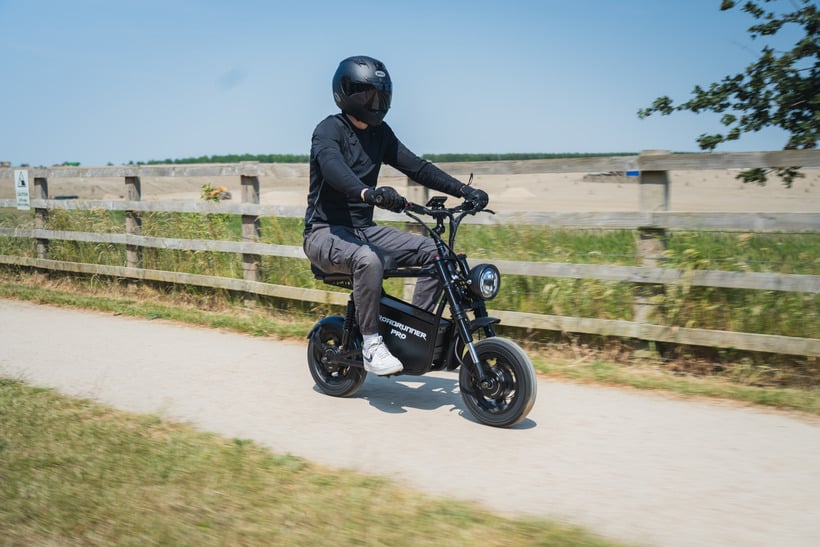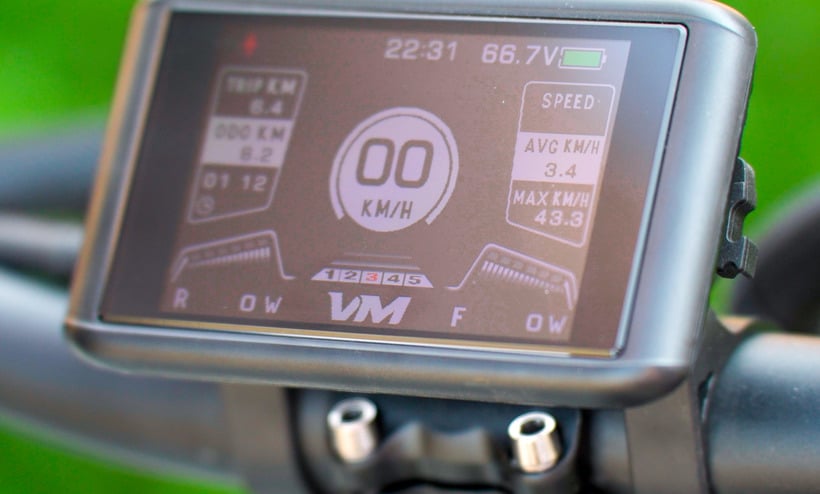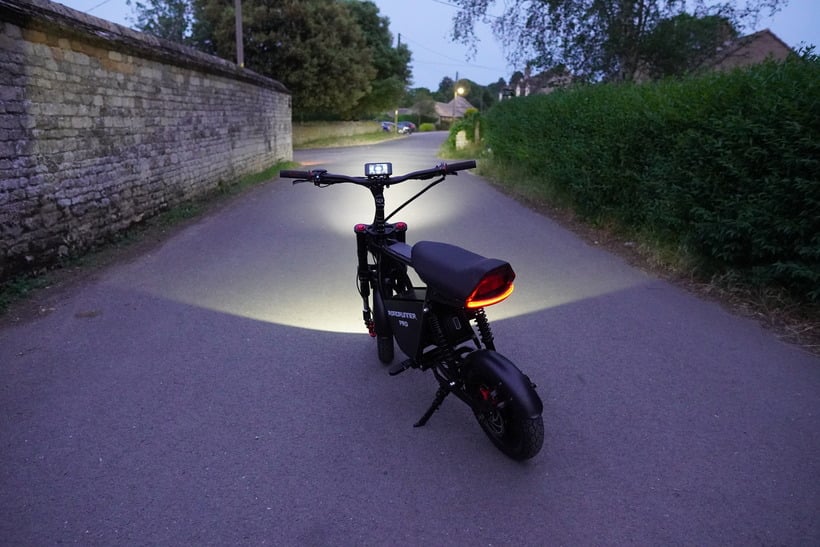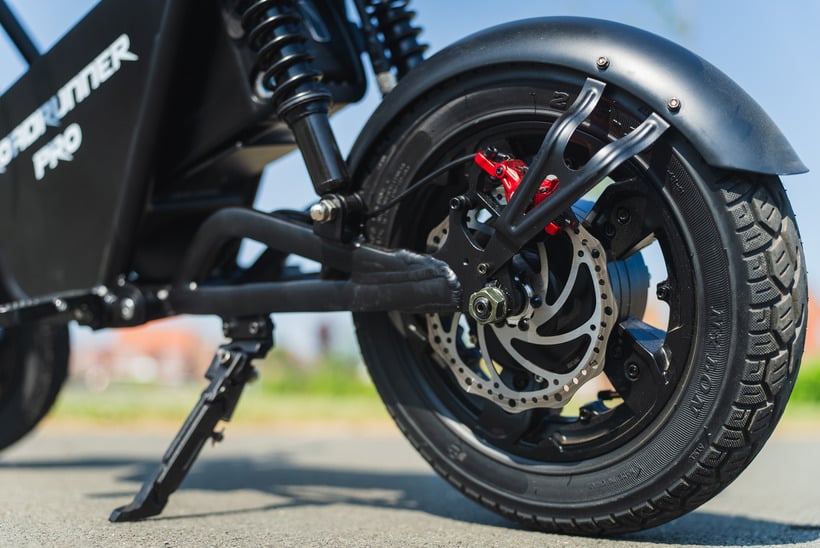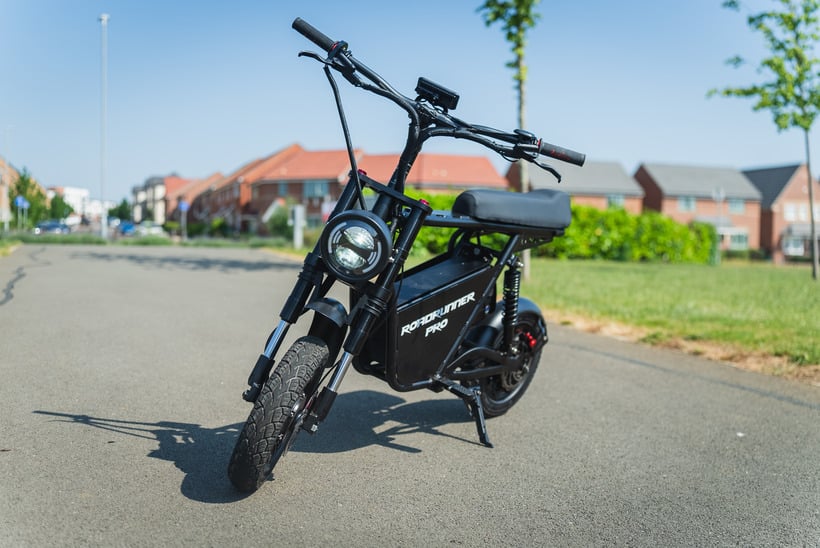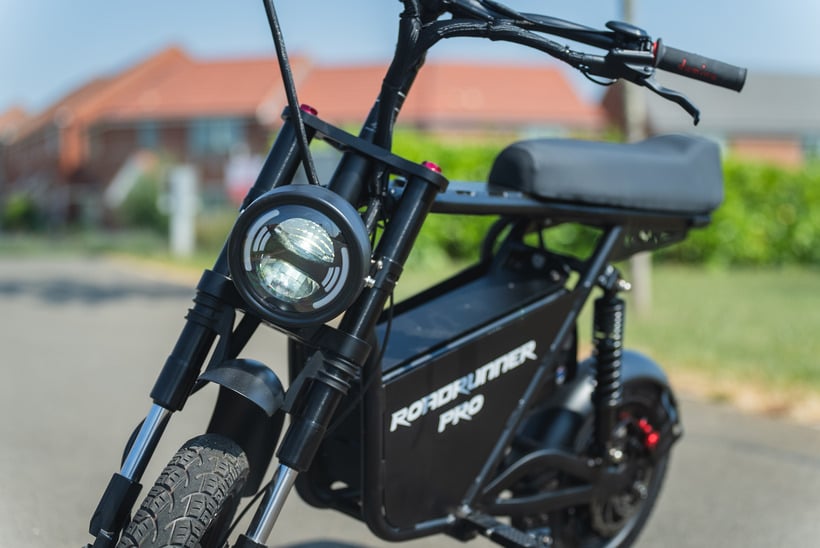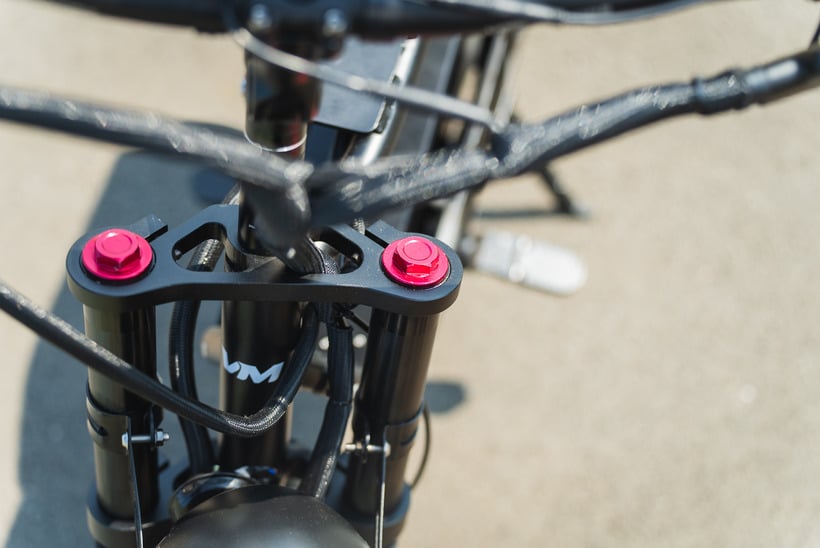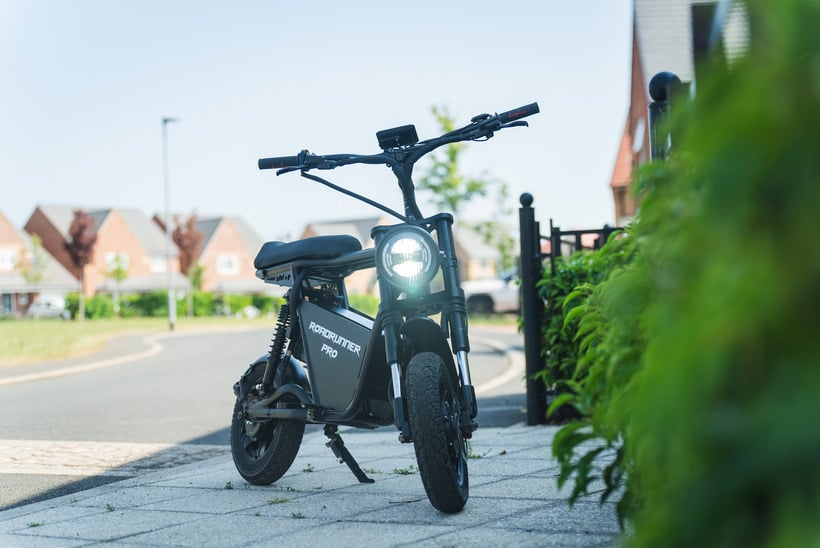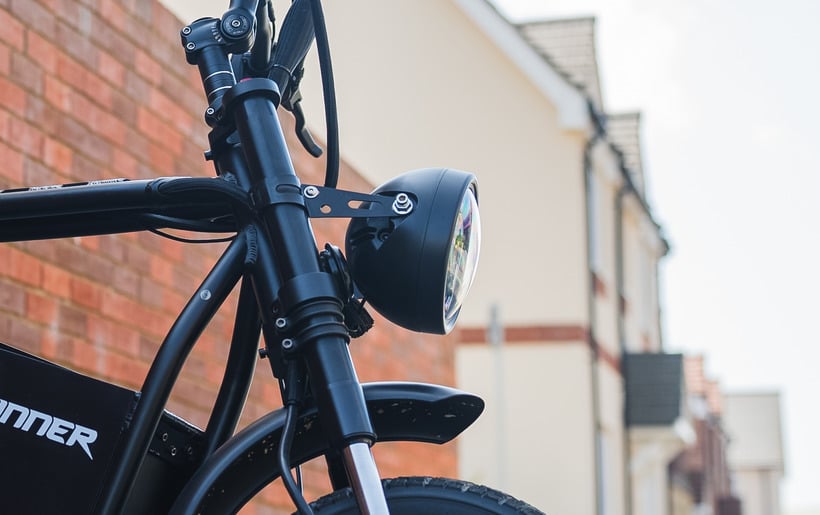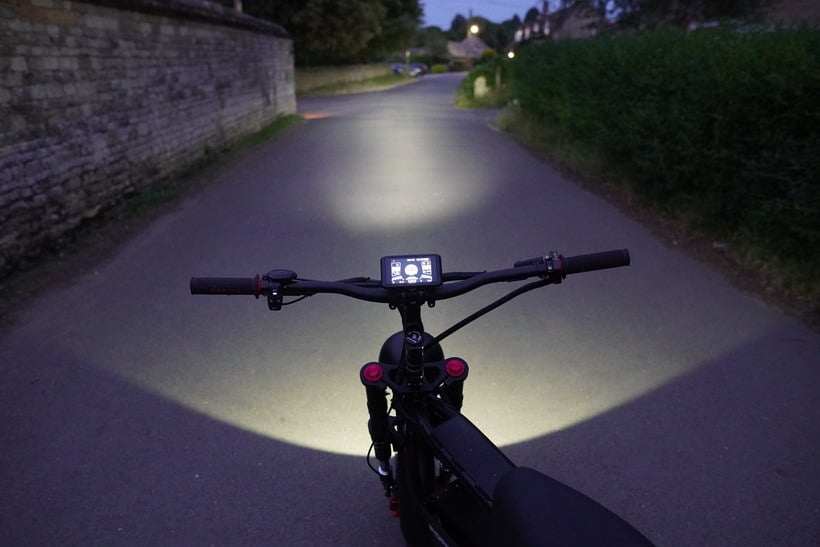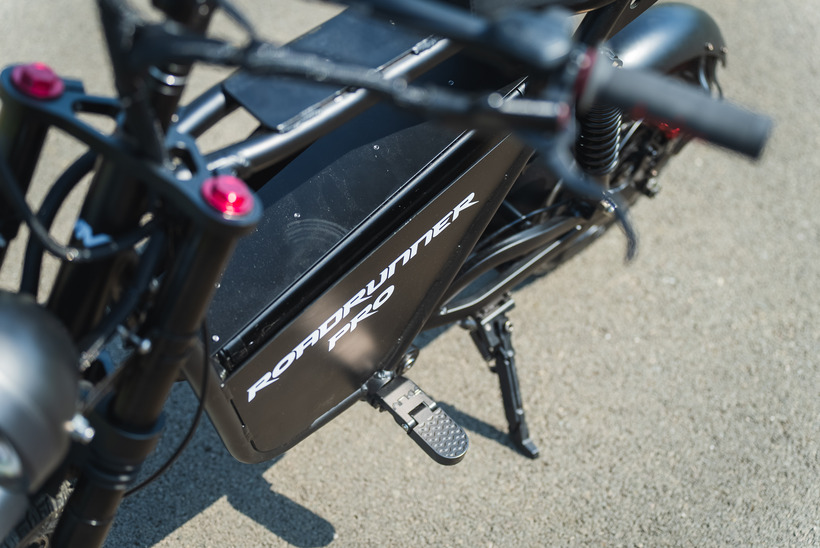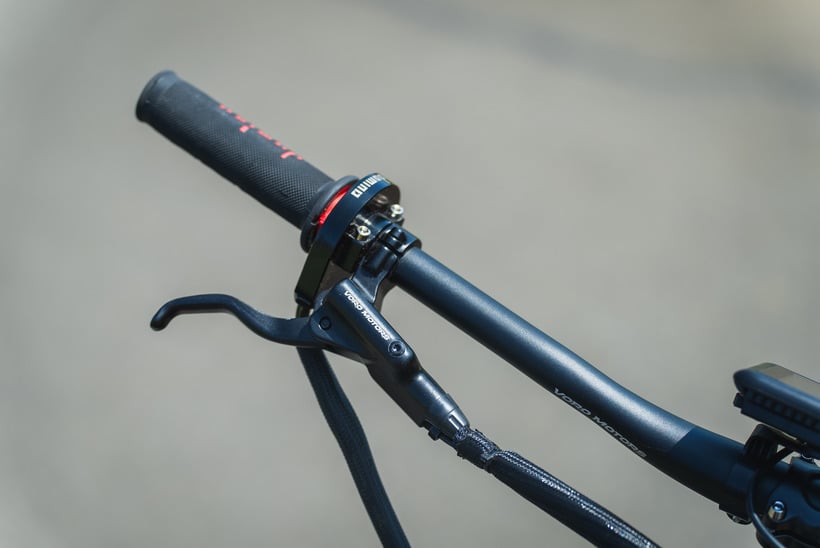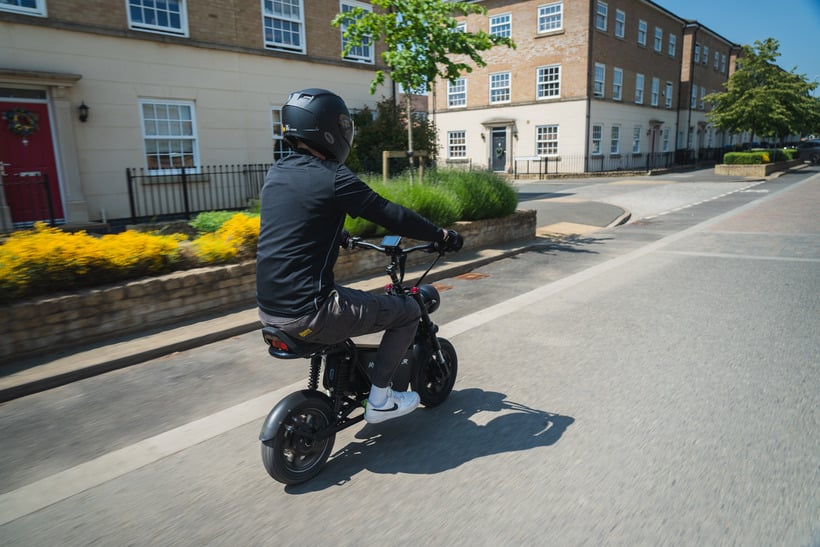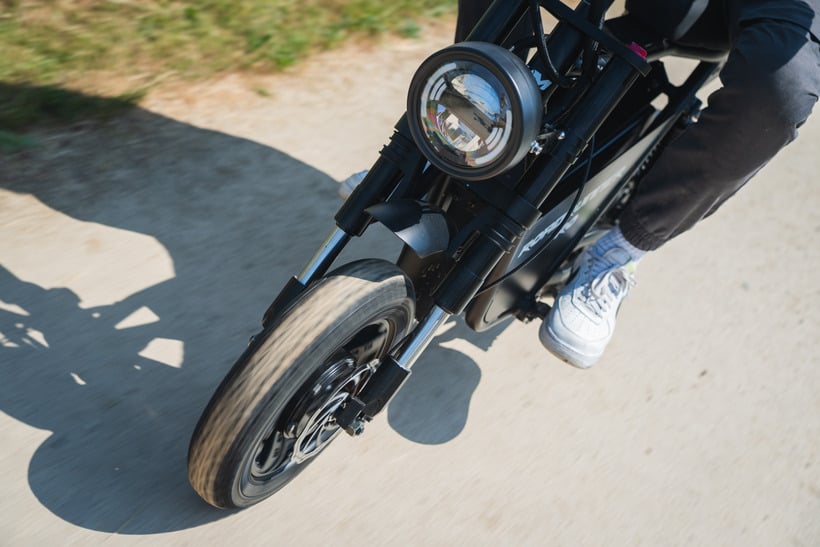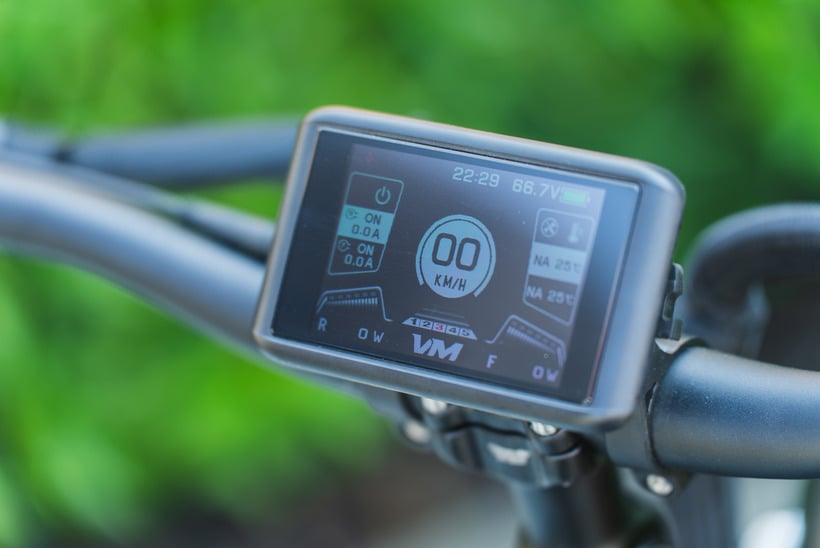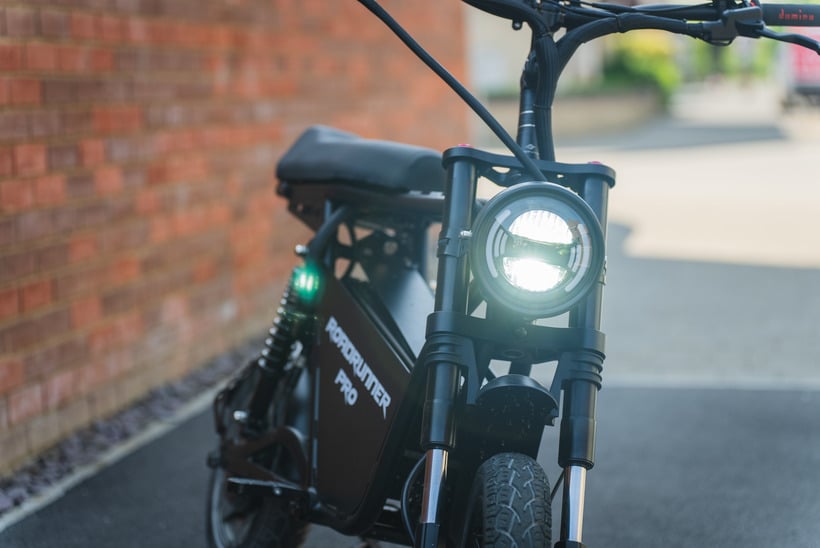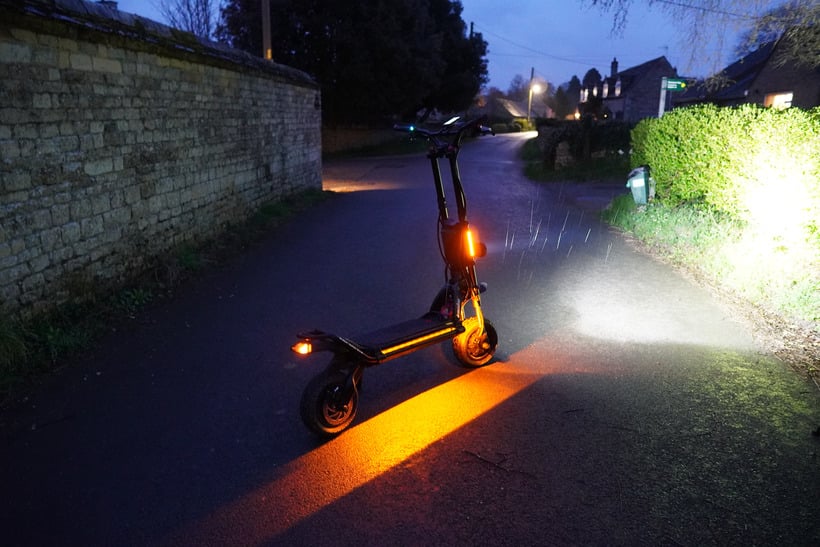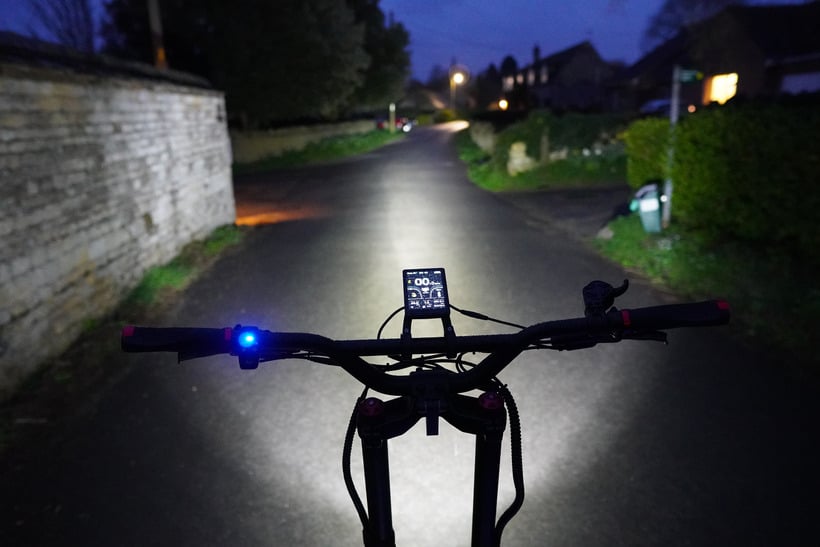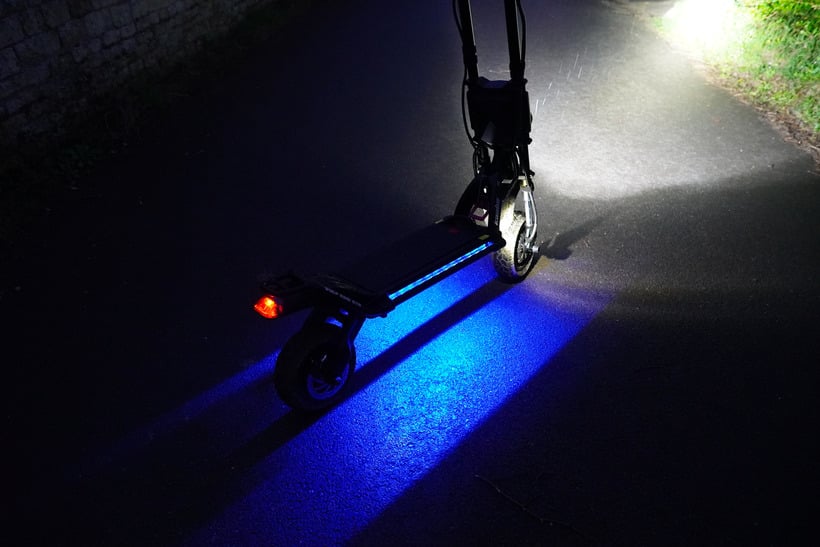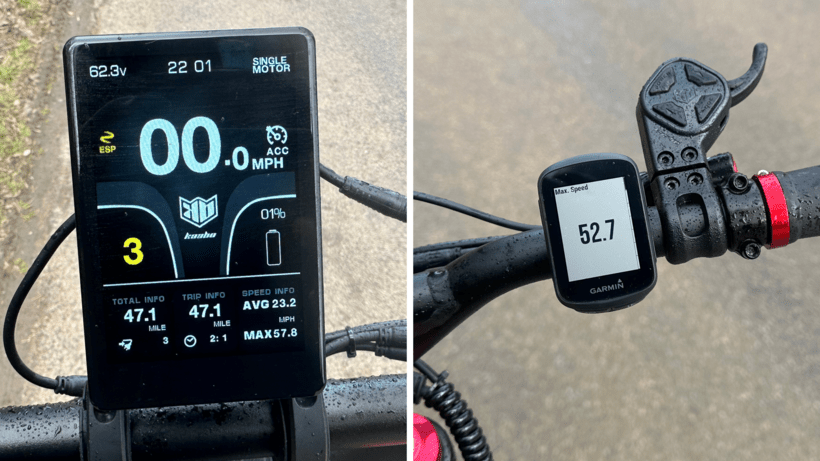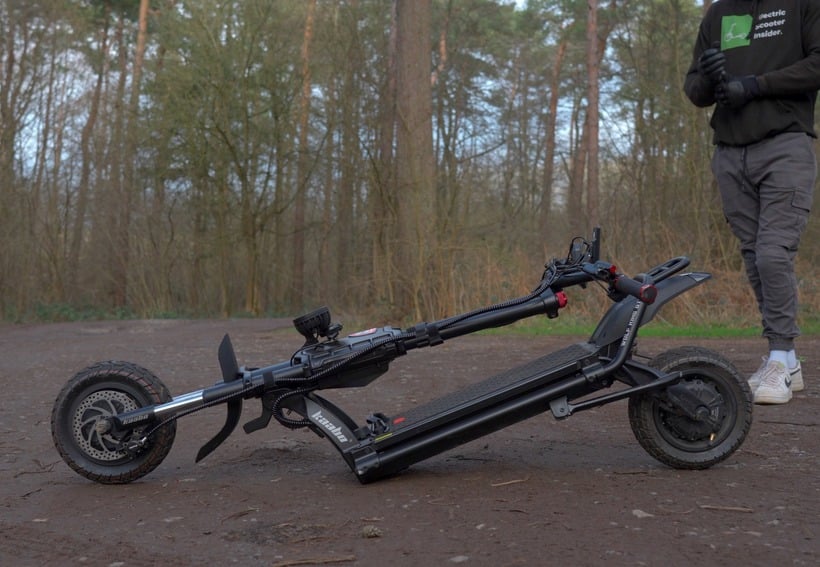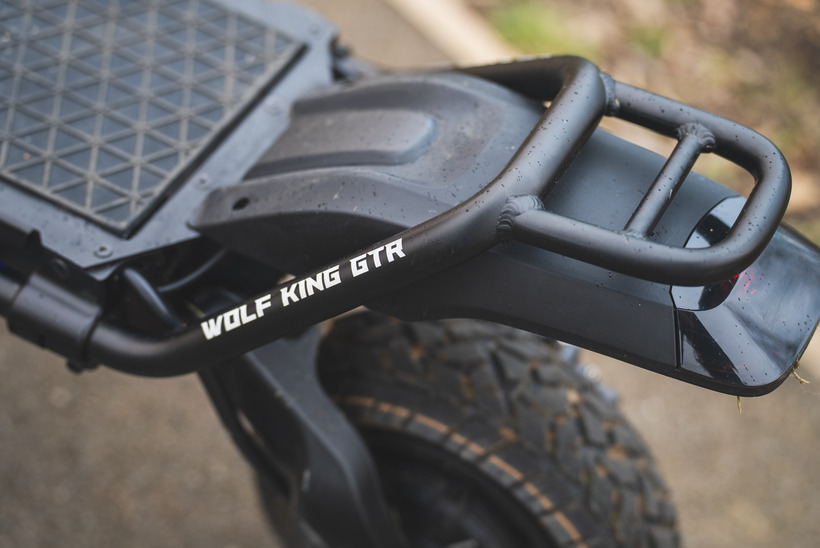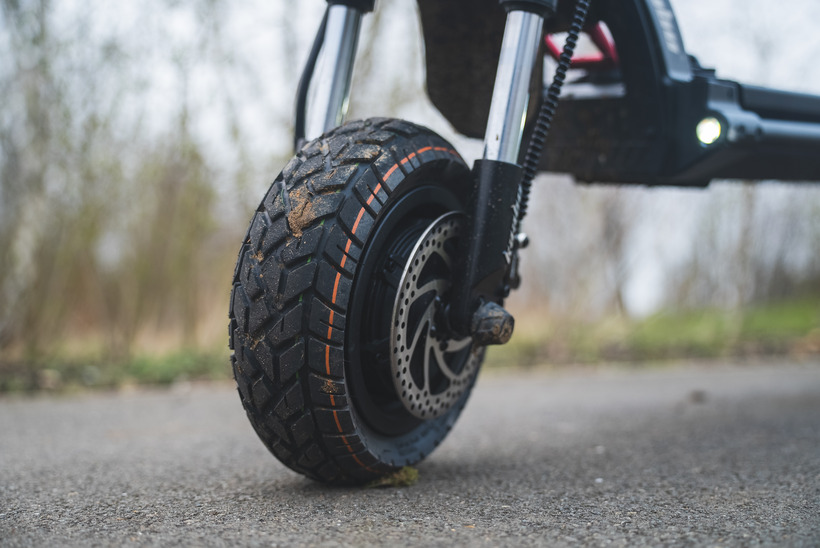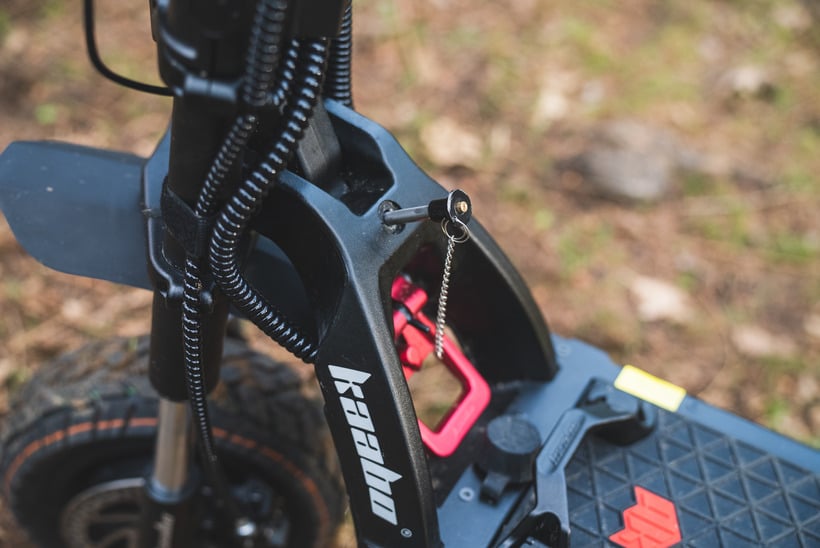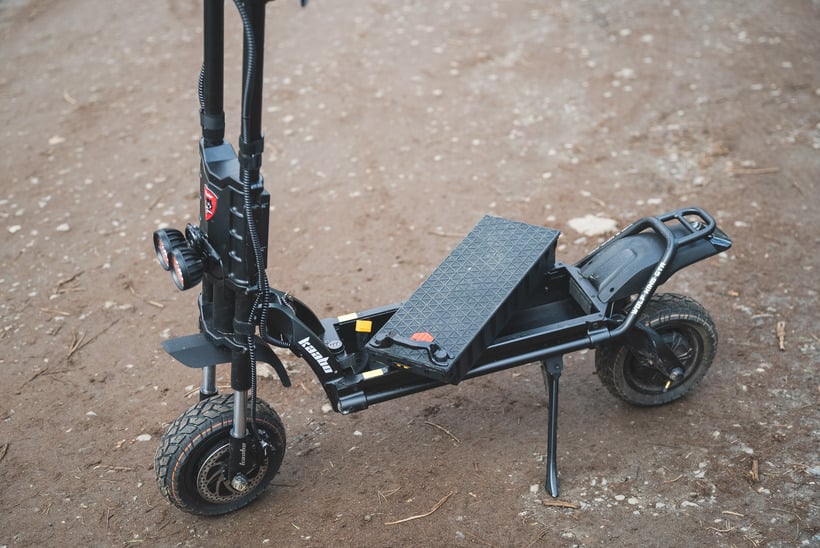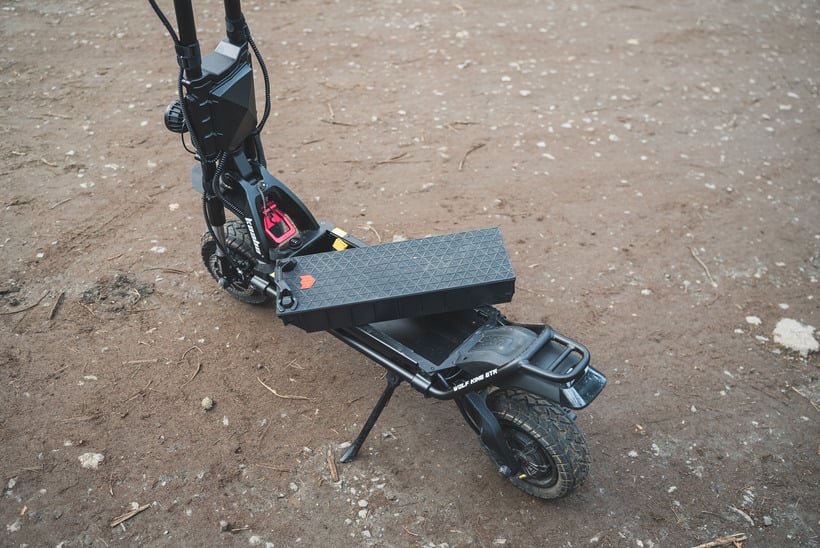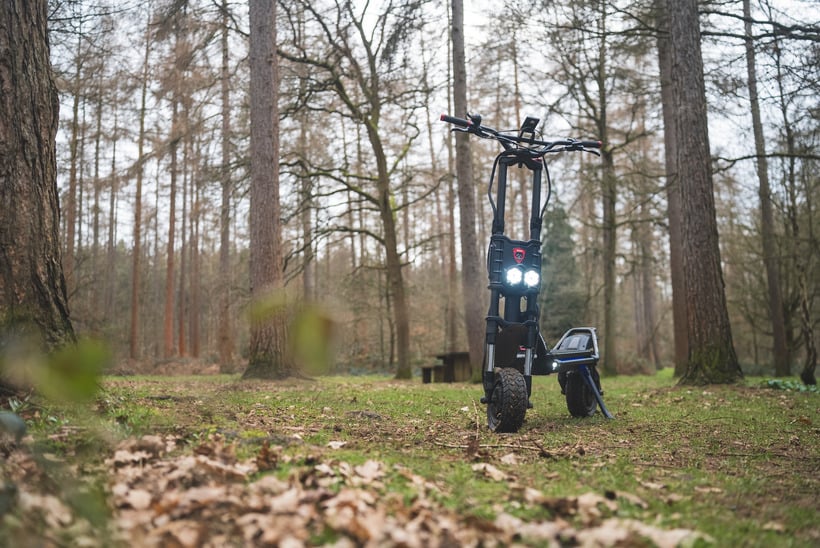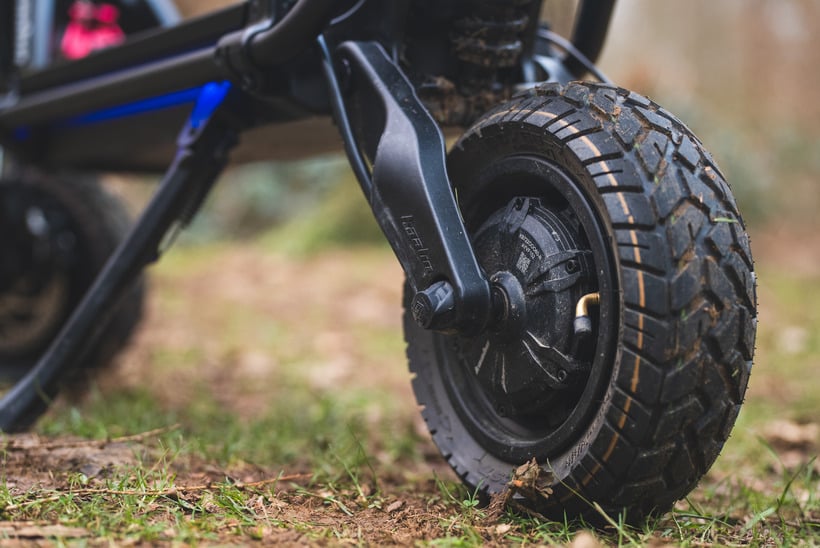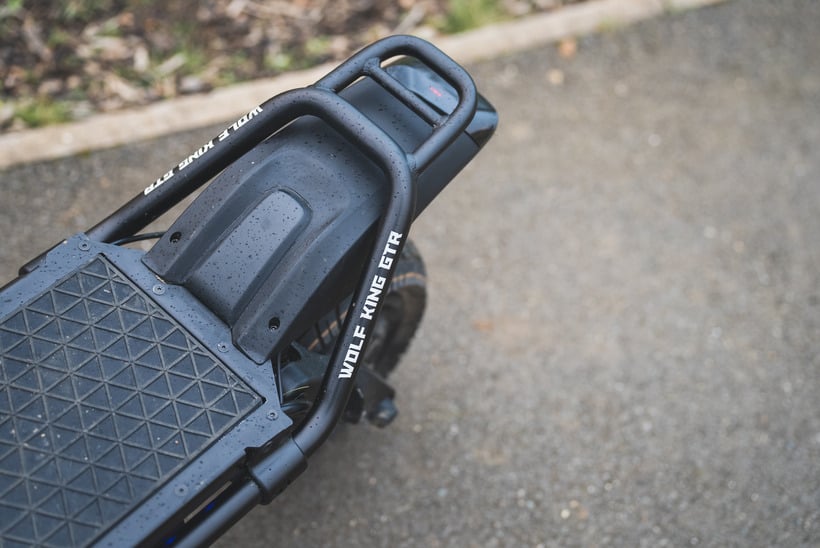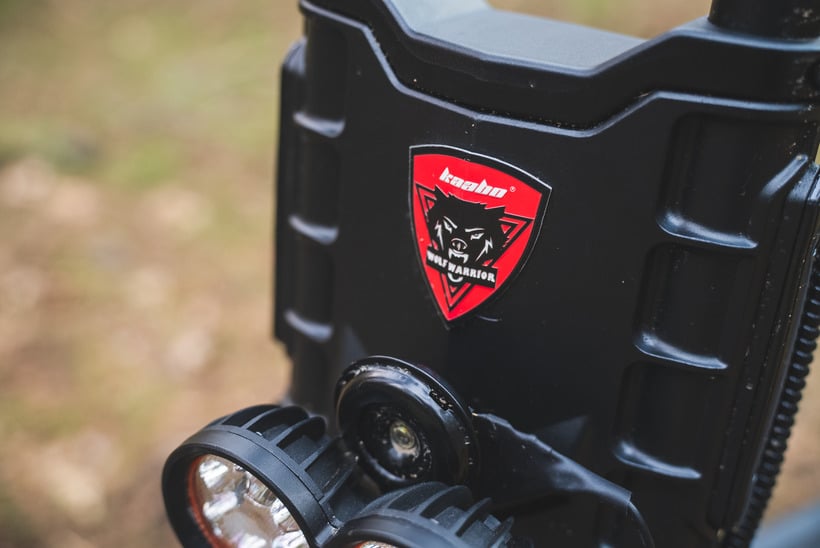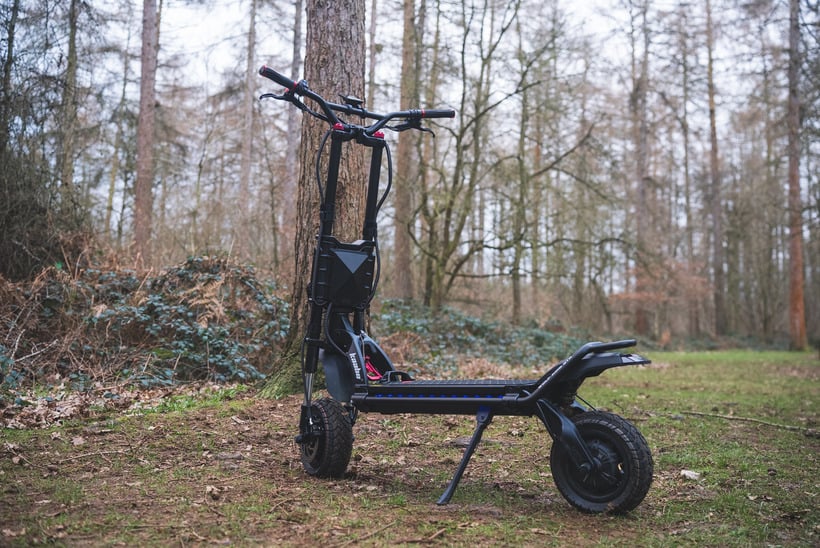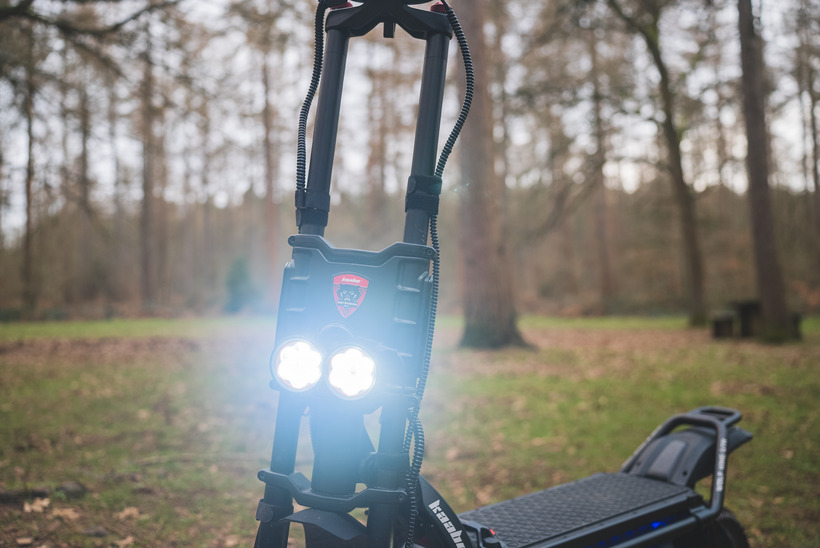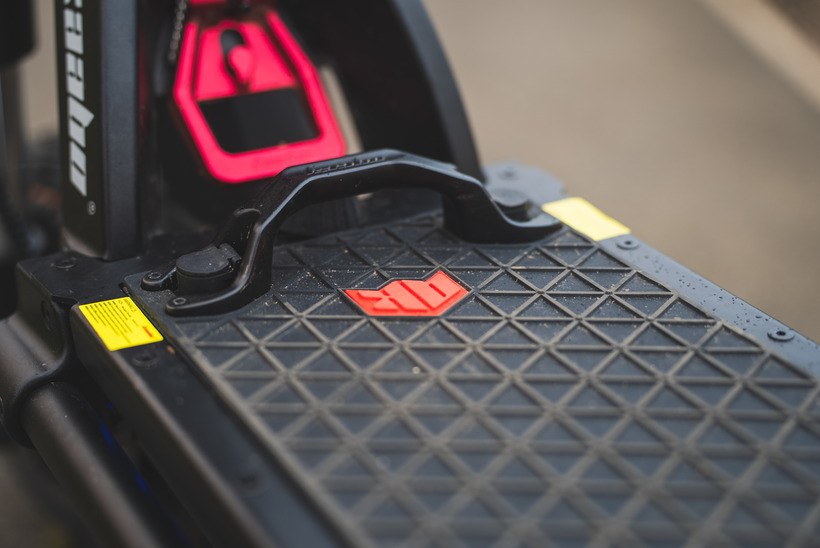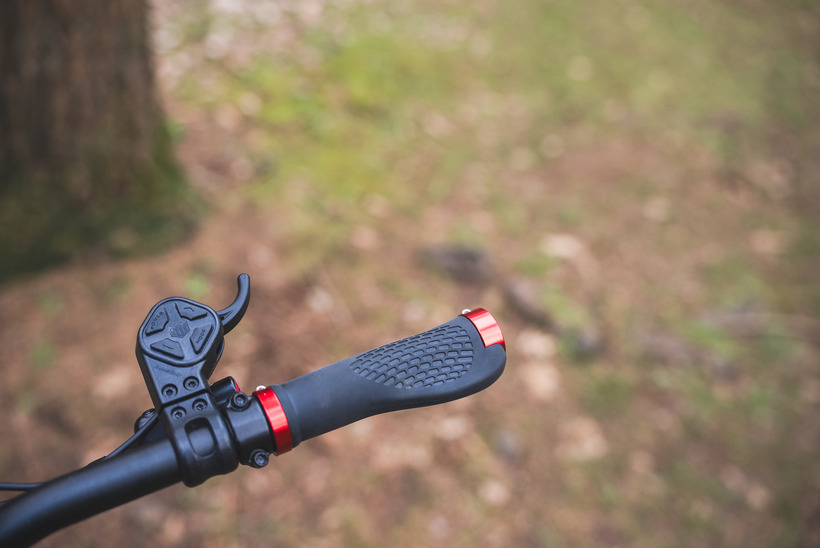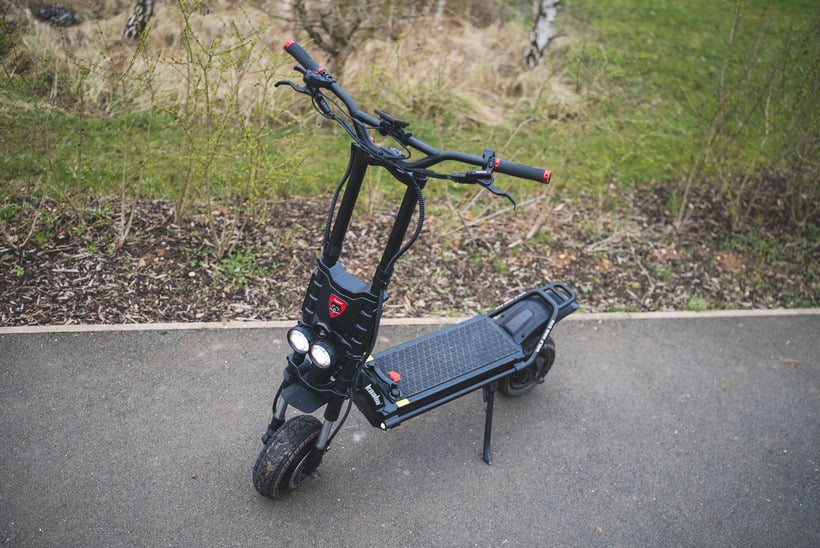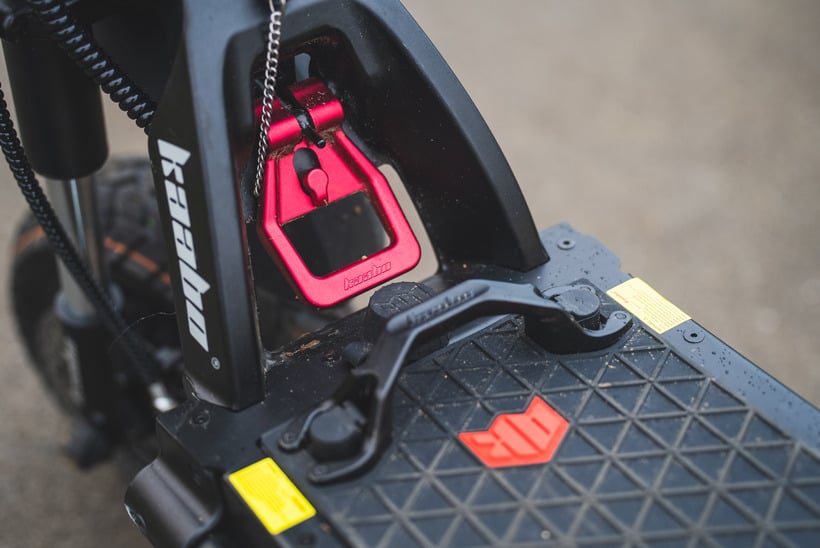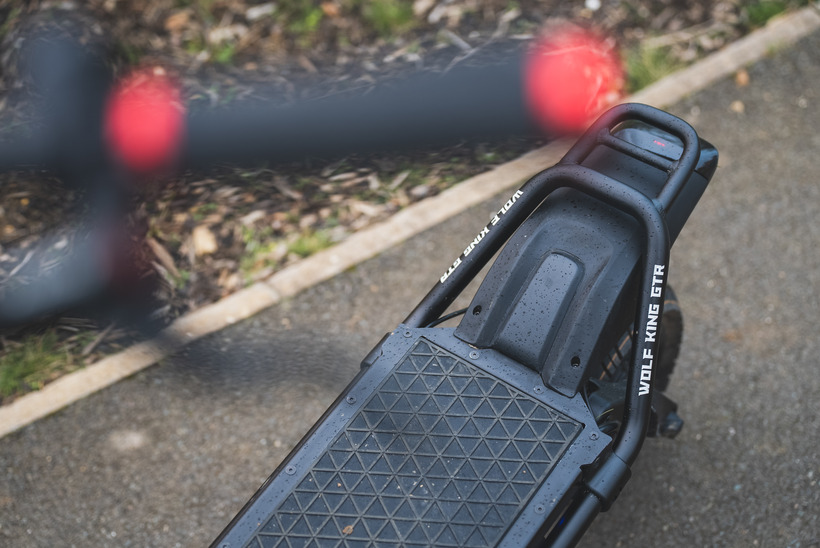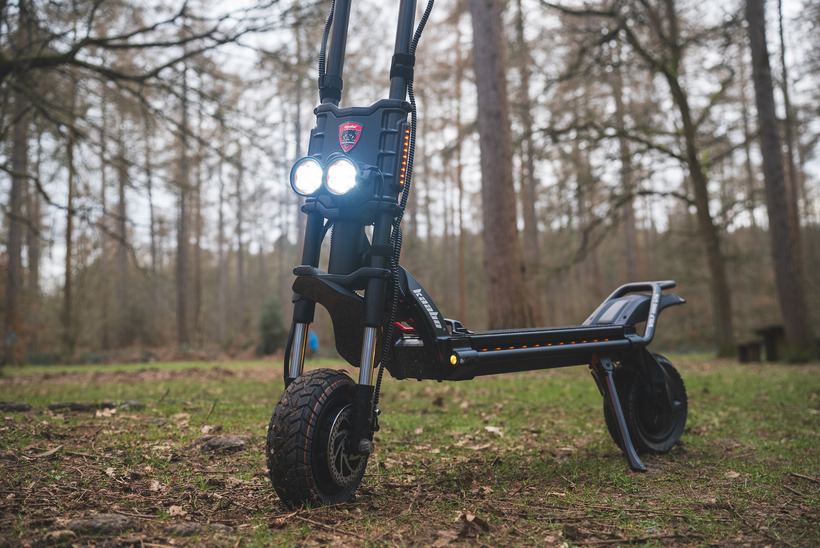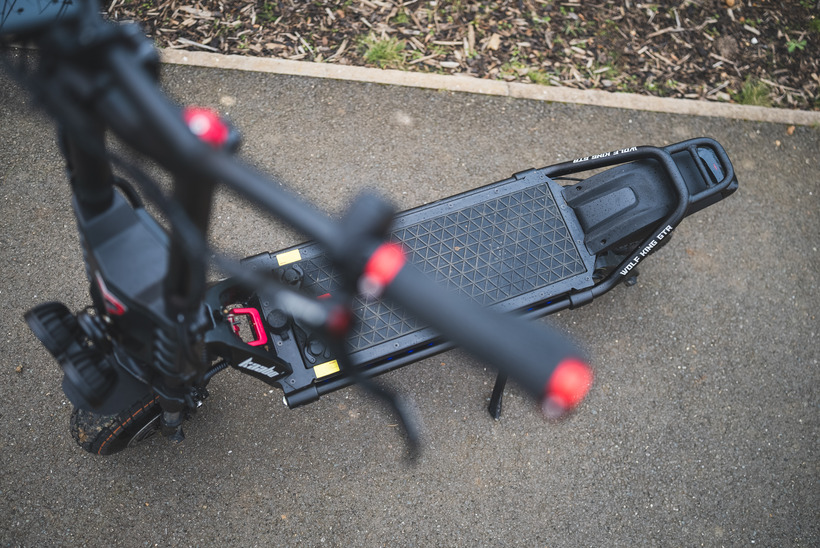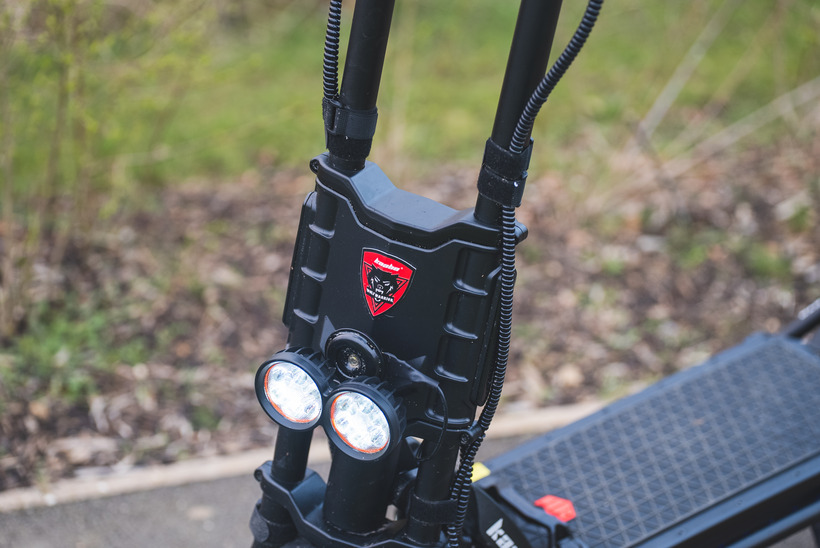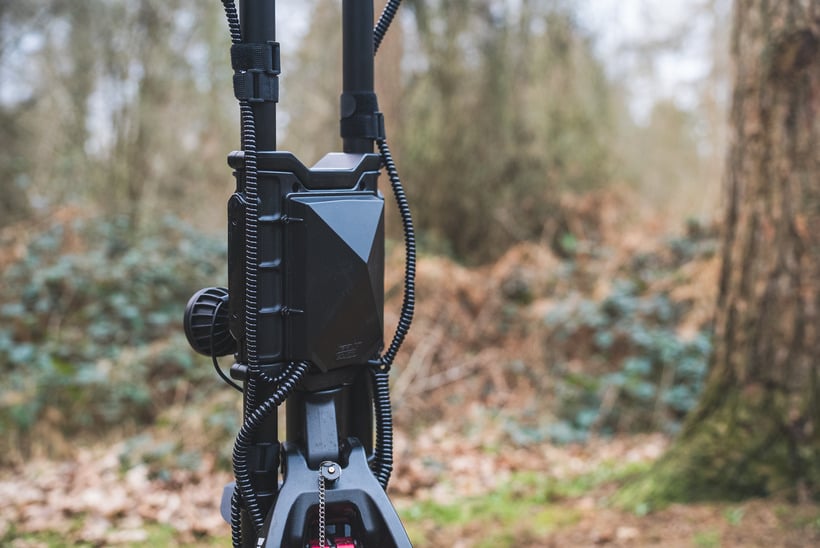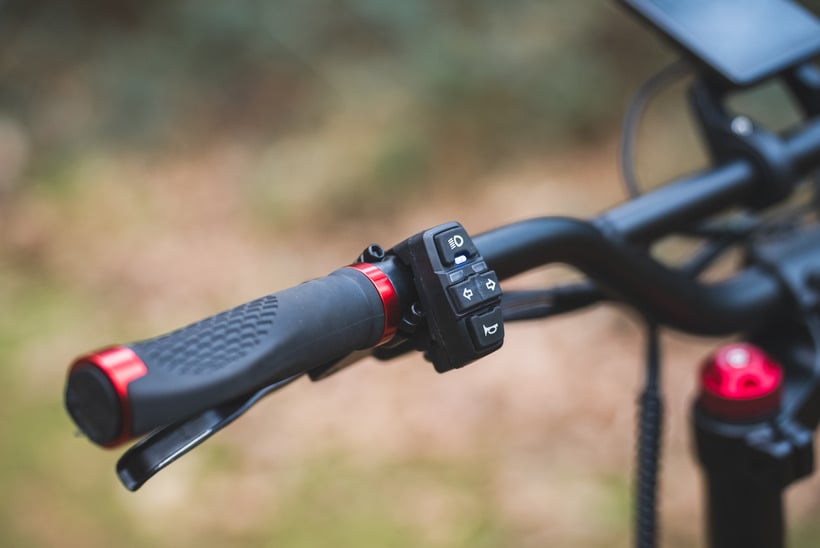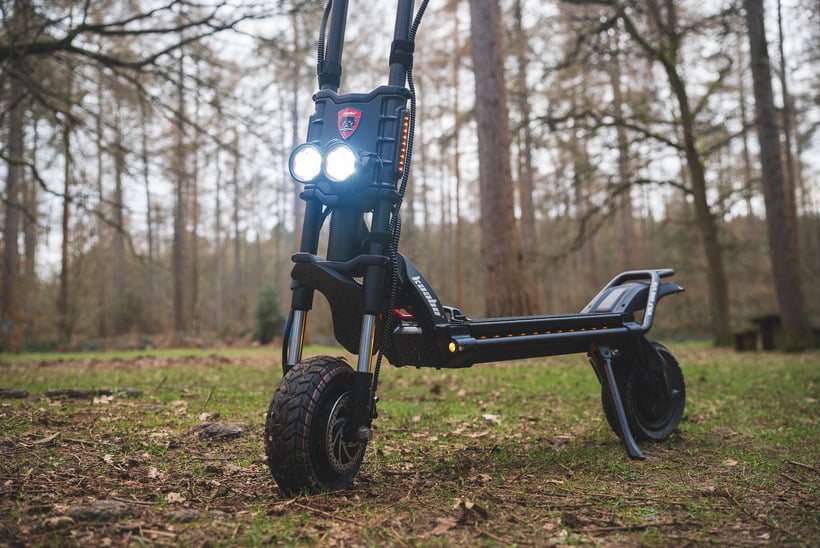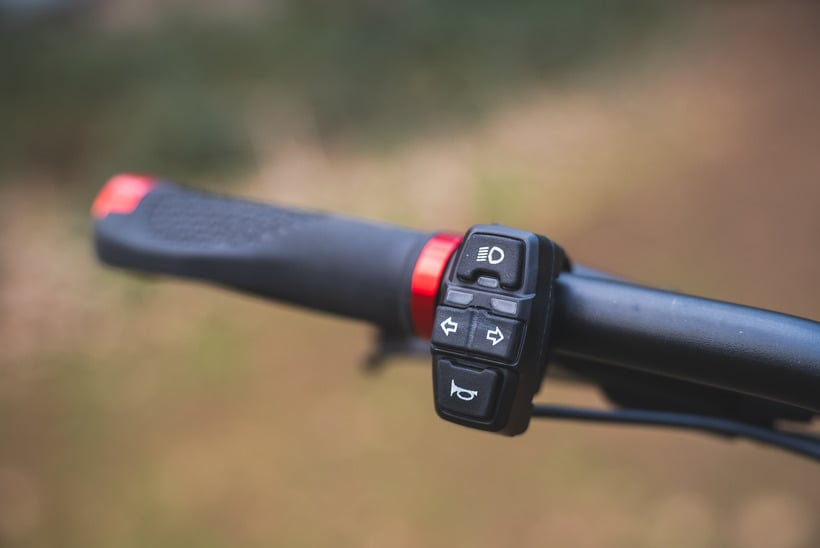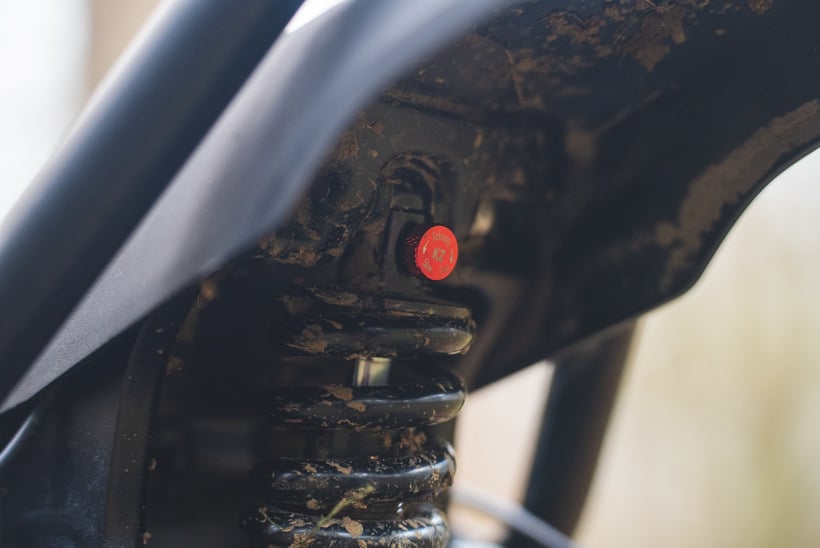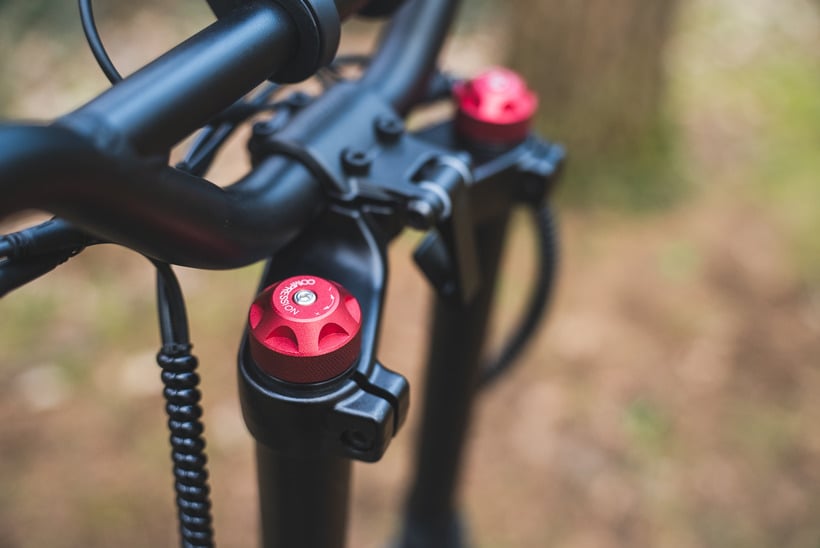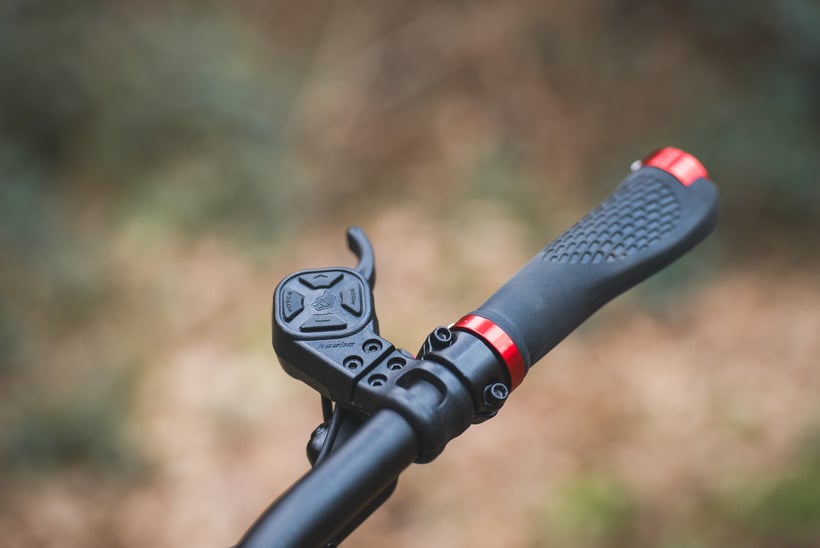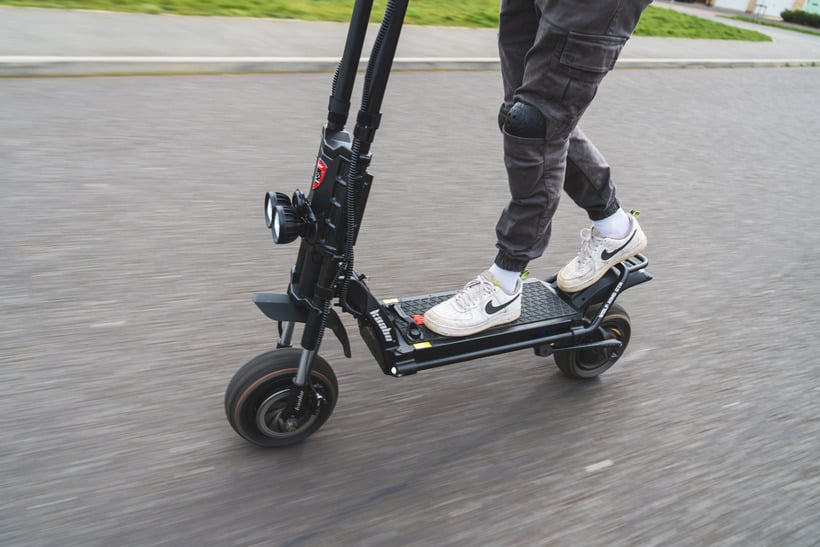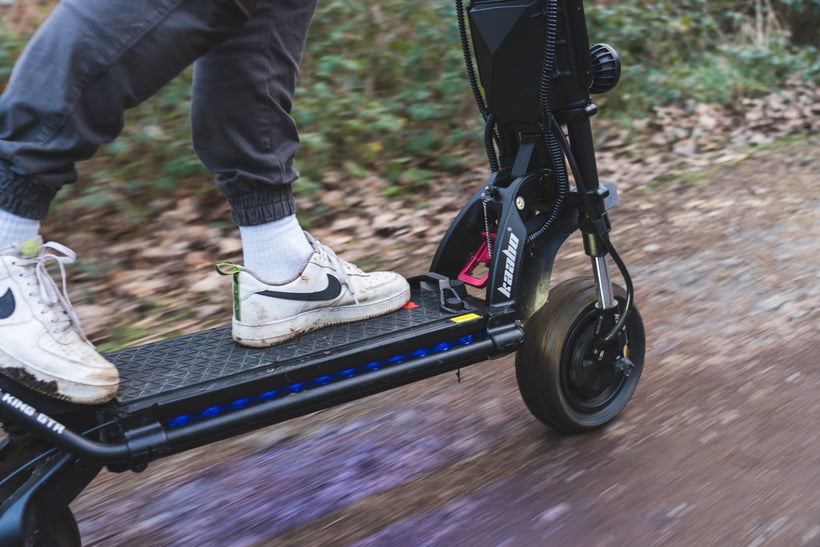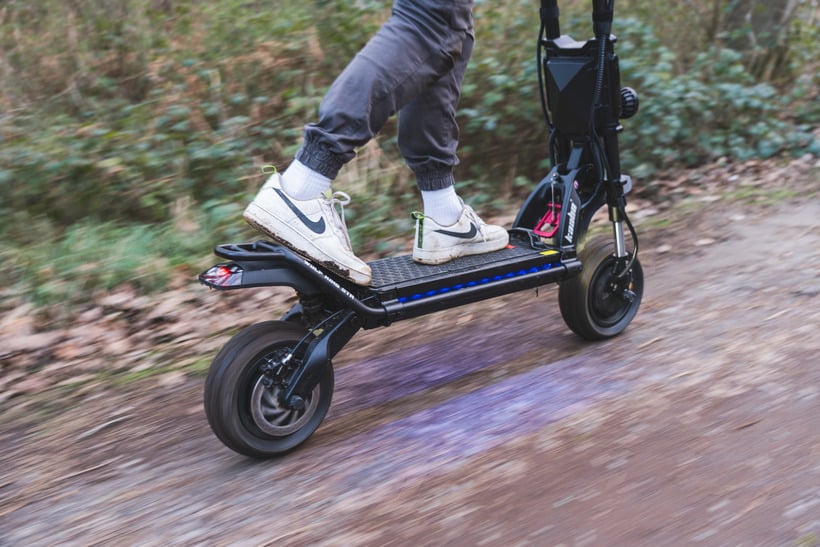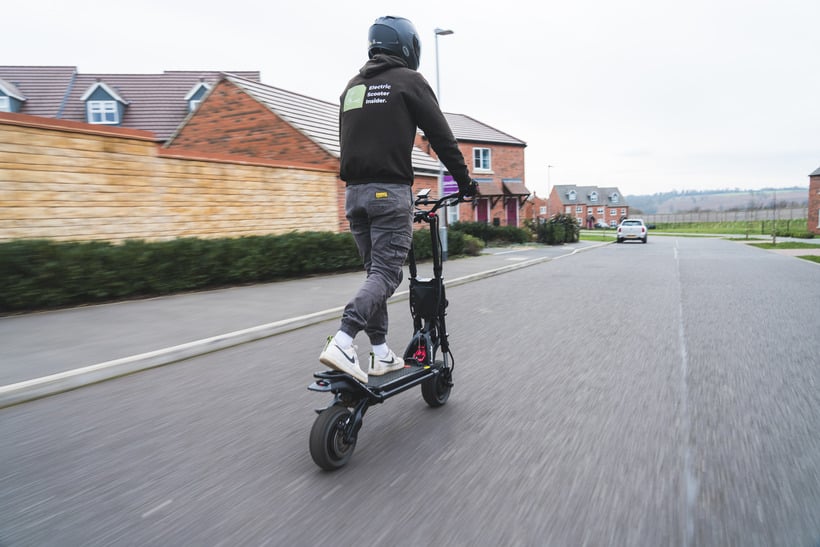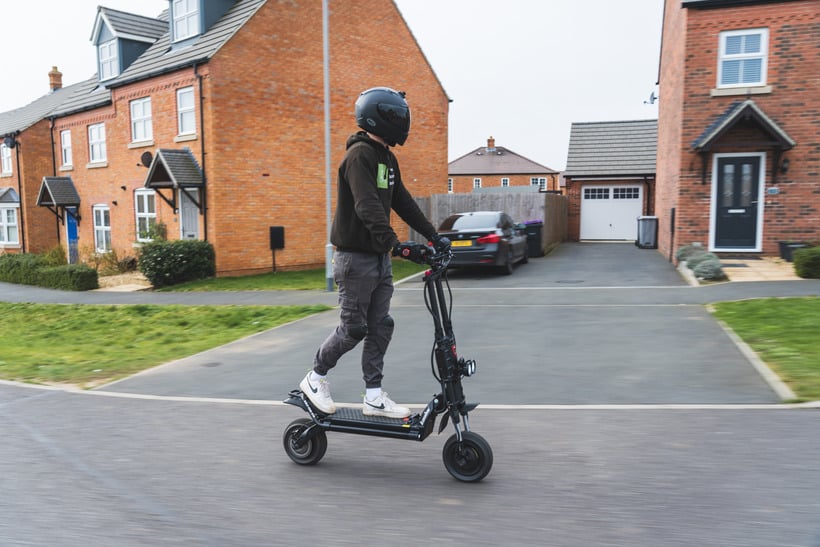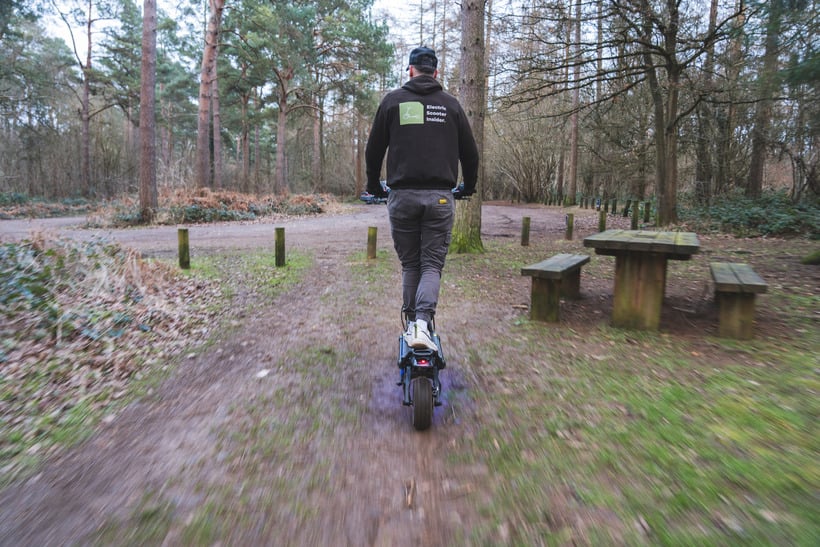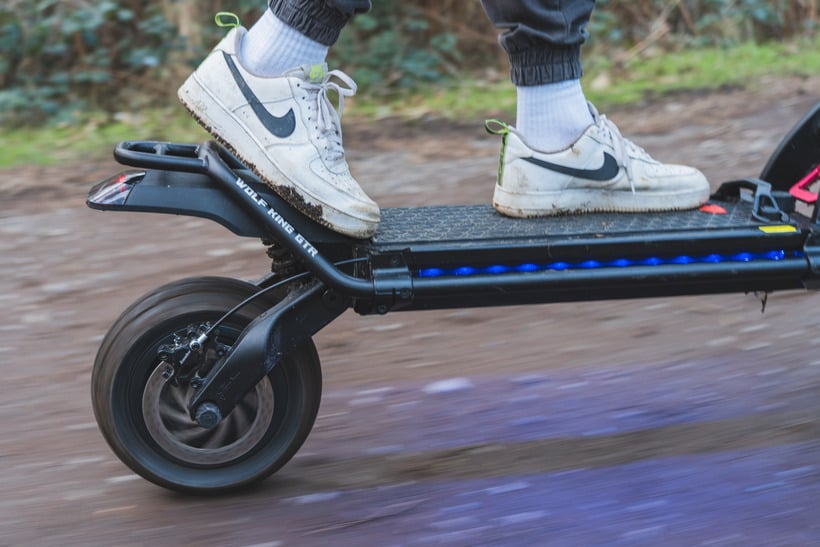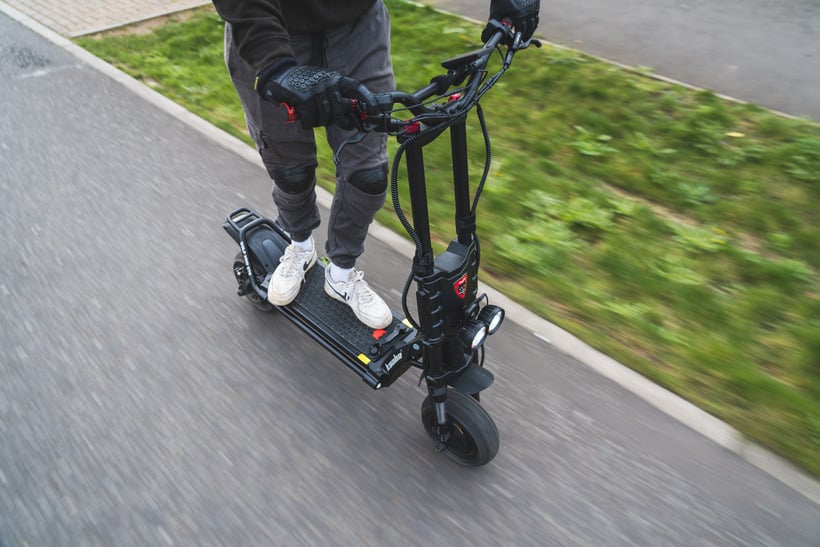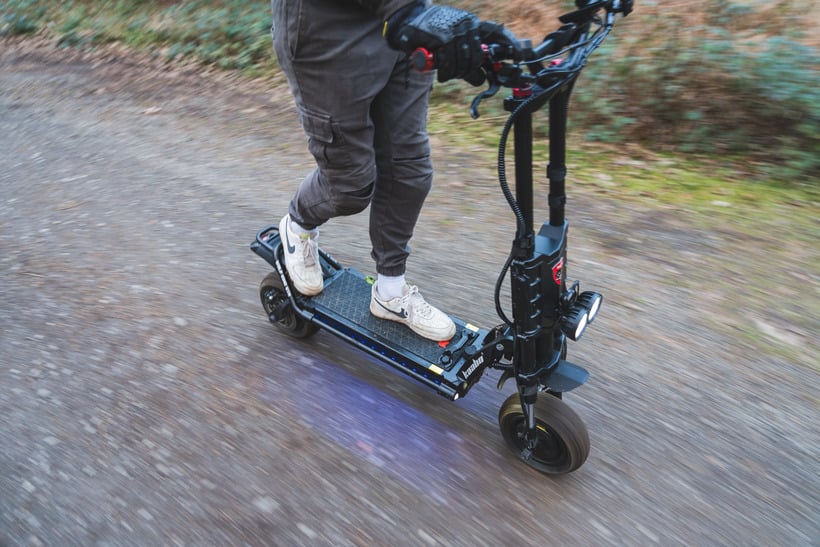Home » Best » Dual-Motor » Top Picks
Top Picks & Comparison: Best Dual-Motor Electric Scooters (Quick List)
Quick List: Best Dual-Motor Electric Scooters
I tested 29 dual-motor electric scooters to find the 7 best models.
- Apollo Go – Best Budget & Most Portable
- Apollo City – Best Commuter & All Weather
- Mantis King GT – Best Off-Roader
- Apollo Phantom – Best For Heavy & Tall Riders
- Apollo Pro – Best For Tech-Savvy Riders
- EMOVE RoadRunner Pro – Best Seated
- Wolf King GTR – Best For Extreme Speed & Longest Range
Best Dual-Motor Electric Scooters
Best Budget & Most Portable

Apollo Go
- Tested Speed: 25.5 mph
- 0-15 mph: 3.8 s
- Motors: Dual 36V 350W
- Peak Power 1500W
Performance Report
Performance Report:
Tester: Josh Frisby (197 lbs, 6.1 ft)
- Top Speed: 28 mph
- Real Speed: 25.5 mph*
- 0-15 mph: 3.8 s*
- Max Range: 30 miles
- Real Range: 17.6 miles*
- Braking: 3.1 meters*
- Suspension: 6/10*
- Max Incline: 25 degrees
- Optimal Incline: 12 degrees*
- Weight: 46 lbs
- Load: 265 lbs
Pros & Cons
The Good:
- Ultra-sleek design
- Premium build quality
- Packed full of useful features
- Cybertruck-inspired lights
- Handlebar integrated turn signals
- Well-designed geometry delivers intuitive control and handling
- Best-in-class cockpit ergonomics
- DOT Matrix display is extremely bright and easy to read from any angle
- Comes with a free QuadLock phone case accessory (saving you $30)
- Integrated mobile app for customized performance
- Stable and nimble thanks to its 14-degree rake angle
- Reliable self-healing tires
- A regenerative braking system recycles kinetic energy to recharge the battery by up to 10%
- A 40-inch deck-to-handlebar height and 265 lb load-bearing capacity make it well-suited to tall and heavy riders
- Impeccable cable management
- Extremely low maintenance
- Battery management system ensures long-term health
- Protective IP66 water-resistance rating
The Bad:
- The plastic caps that encapsulate the turn signals are prone to damage
- The taillight is dim during the day
- The clip-in, clip-out folding hook system is a little fiddly
- The handlebars are slightly narrow
Video Review
Photos
Best Commuter & All Weather

Apollo City
- Tested Speed: 31.2 mph
- 0-15 mph: 2.3 s
- 0-25 mph: 6.1 s
- Motors: Dual 48V 500W
- Peak Power 2000W
Performance Report
Performance Report:
Tester: Josh Frisby (190 lbs, 6.1 ft)
- Top Speed: 32 mph
- Real Speed: 31.2 mph*
- 0-15 mph: 2.3 s*
- 0-25 mph: 6.1 s*
- Max Range: 43 miles
- Real Range: 27 miles*
- Braking: 2.1 meters*
- Suspension: 7.5/10*
- Max Incline: 20 degrees
- Optimal Incline: 13 degrees*
- Weight: 65 lbs
- Load: 265 lbs
Pros & Cons
The Good:
- Competitive performance profile
- Fast acceleration
- Smooth power delivery
- Sublime handling
- Sleek aesthetic
- Feature-rich
- Proprietary design ensures top-class build quality
- Tubeless, self-healing tires
- Shock-absorbing triple spring suspension
- Regen brake recharges the battery by up to 10%
- Intuitive folding mechanism
- Good lighting setup with the best turn signals that I’ve tested
- Battery management system ensures long-term performance
- Integrated mobile app for customized performance
- Fast charging
- 10,000 km warranty
- Low maintenance
- Suitable for tall and heavy riders
- High IP66 water-resistance rating
The Bad:
- The display could be brighter
- Similarly priced models go faster, but the Apollo City Pro’s overall package is superior
Video Review
Photos
Best Off-Roader

Mantis King GT
- Tested Speed: 45 mph
- 0-15 mph: 1.9 s
- 0-25 mph: 4.0 s
- 0-30 mph: 5.7 s
- Motors: Dual 60V 1100W
- Peak Power 4200W
Performance Report
Performance Report:
Tester: Josh Frisby (190 lbs, 6.1 ft)
- Top Speed: 43 mph
- Real Speed: 45 mph*
- 0-15 mph: 1.9 s*
- 0-25 mph: 4.0 s*
- 0-30 mph: 5.7 s*
- 0-35 mph: 7.8 s*
- Max Range: 56 miles
- Real Range: 38 miles*
- Braking: 2.1 meters*
- Suspension: 9/10*
- Max Incline: 30 degrees
- Optimal Incline: 18 degrees*
- Weight: 79 lbs
- Load: 265 lbs
Pros & Cons
The Good:
- Best-in-class performance
- Industry-leading design
- Exceptional build and ride quality
- 30A Sine Wave controllers deliver a smooth, fast acceleration
- High-quality Samsung battery
- Adjustable hydraulic suspension
- Terrain-agnostic tires
- Advanced TFT display
- Controllable LED lights
- Superb folding mechanism
- Wide handlebars and ergonomic controls afford excellent control
- Powerful hydraulic brakes
- IPX5 water-resistance rating
The Bad:
- Headlight could be brighter
Video Review
Best For Heavy & Tall Riders
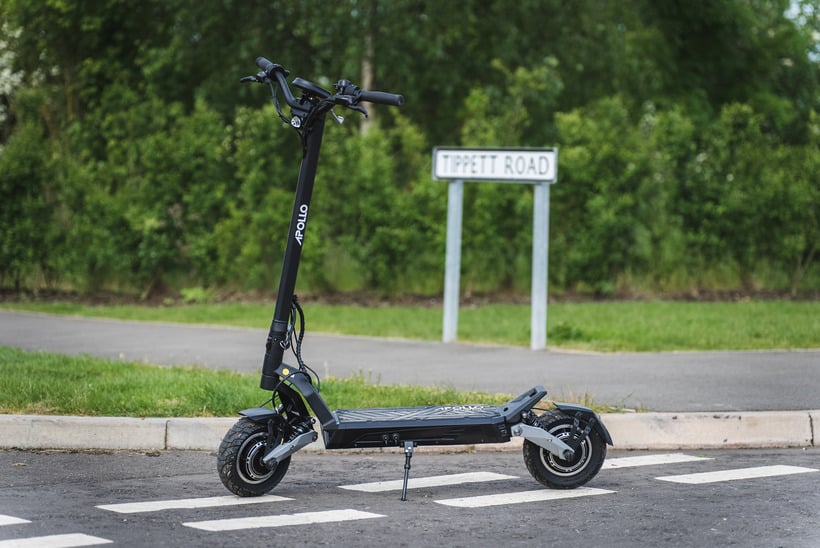
Apollo Phantom
- Tested Speed: 41 mph
- 0-15 mph: 2.3 s
- 0-25 mph: 4.5 s
- 0-30 mph: 7.0 s
- Motors: Dual 52V 1200W
- Peak Power 3200W
Performance Report
Performance Report:
Tester: Josh Frisby (190 lbs, 6.1 ft)
- Top Speed: 41 mph
- Real Speed: 41 mph*
- 0-15 mph: 2.3 s*
- 0-25 mph: 4.5 s*
- 0-30 mph: 7.0 s*
- Max Range: 40 miles
- Real Range: 29 miles*
- Braking: 2.1 meters*
- Suspension: 7.5/10*
- Max Incline: 25 degrees
- Optimal Incline: 15 degrees*
- Weight: 77 lbs
- Load: 300 lbs
Pros & Cons
The Good:
- New MACH1 controller unleashes high performance
- Supremely smooth throttle response
- Rapid acceleration
- Ludo mode boosts torque and top speed
- First-ever performance scooter to feature a regenerative brake paddle
- Supreme handling
- Quadruple springs are perfectly calibrated
- Mobile app lets you customize performance settings
- Great for tall and heavy riders
- Ergonomic cockpit
- Excellent lighting rig
- Sharp and responsive hydraulic brakes
- IP54 water resistance rating
The Bad:
- The rubber that sits around the plastic casing of the regen and throttle paddles is poorly-fitted
- Similarly-priced scooters offer more raw power, but some don’t match up to Apollo’s end-to-end customer experience
Video Review
Photos
Best For Tech Savvy Riders
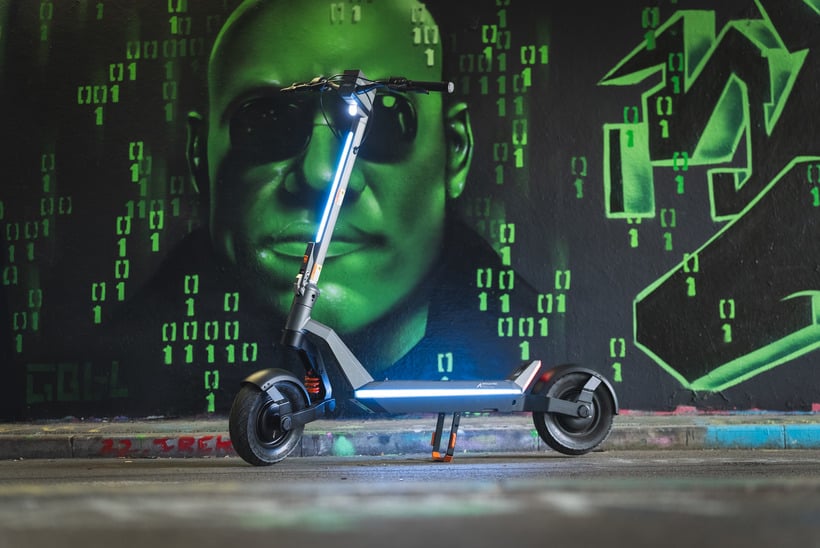
Apollo Pro
- Tested Speed: 44 mph
- 0-15 mph: 2.1 s
- 0-25 mph: 4.3 s
- 0-30 mph: 6.3 s
- Motors: Dual 52V 1200W
- Peak Power 6000W
Performance Report
Performance Report:
Tester: Josh Frisby (190 lbs, 6.1 ft)
- Top Speed: 44 mph
- Real Speed: 44 mph*
- 0-15 mph: 2.1 s*
- 0-25 mph: 4.3 s*
- 0-30 mph: 6.3 s*
- 0-35 mph: 9.3 s*
- Max Range: 63 miles
- Real Range: 39 miles*
- Braking: 2.3 meters*
- Suspension: 7/10*
- Max Incline: 30 degrees
- Optimal Incline: 18 degrees*
- Weight: 93 lbs
- Load: 330 lbs
Pros & Cons
The Good:
- Red Dot Design Award winner
- Industry-leading build quality
- Looks like a Tesla Cybertruck
- Futuristic 360-degree dynamic lighting rig
- Competitive speed, acceleration, range, and braking performance
- AG geometry promises intuitive control and best-in-class handling
- Integrated IoT gives you access to 24/7 GPS tracking so you can flag your scooter lost or stolen and activate its kill switch
- Regen brakes recharge your battery up to 10%
- DOT Matrix display is extremely bright and easy to read from any angle
- QuadLock phone mount supports wireless charging and allows you to use the app on your phone as the primary display
- Mobile app lets you customize performance settings
- Built-in Bluetooth speaker
- 12-inch self-healing tires
- Well suited to tall and heavy riders
- Low-maintenance
- IP66 water-resistance rating
The Bad:
- Some scooters within its price class go faster and further. But, none can compete with the Pro’s integration of tech, unique features, and reliable, low-maintenance build
- Suspension system could be more plush
Video Review
Best Seated

EMOVE RoadRunner Pro
- Tested Speed: 54 mph
- 0-15 mph: 2.6 s
- 0-25 mph: 4.3 s
- 0-30 mph: 5.9 s
- Motors: Dual 60V 2000W
- Peak Power 6000W
Performance Report
Performance Report:
Tester: Josh Frisby (190 lbs, 6.1 ft)
- Top Speed: 50 mph
- Real Speed: 54 mph*
- 0-15 mph: 2.6 s*
- 0-25 mph: 4.3 s*
- 0-30 mph: 5.9 s*
- Max Range: 50 miles
- Real Range: 34 miles*
- Braking: 3.0 meters*
- Suspension: 8/10*
- Max Incline: 30 degrees
- Optimal Incline: 18 degrees*
- Weight: 114 lbs
- Load: 330 lbs
Pros & Cons
The Good:
- Most powerful seated electric scooter
- Plush memory foam seat that's 3.5 inches thick
- Long saddle ensures that you can find a comfortable riding position
- The seat's outer fabric is both wear and heat-resistant
- Ultra-wide handlebars adjust high, low, towards, and away from you
- Motorcycle-grade ride quality
- Addictive to cruise and corner on
- Twist-grip throttle
- Supremely comfortable seat
- Premium LG battery cells are long-lasting
- Removable battery enables a limitless range and easier charging
- Great value for money
- Feature-rich color display
- Exceptionally bright headlight
- Huge 14-inch tubeless tires offer stability and shock absorption
- Supports heavy riders
- Strong hydraulic brakes
- Plush suspension system
The Bad:
- No water-resistance rating
- The chassis that houses the battery could be better designed
- It’s difficult to see which riding mode you’re in
- You need to be mindful of how heavy you are on the throttle to prevent excessive wheel spin
Video Review
Best For Extreme Speed & Longest Range

Wolf King GTR
- Tested Speed: 65.8 mph
- 0-15 mph: 1.6 s
- 0-25 mph: 2.8 s
- 0-30 mph: 3.4 s
- Motors: Dual 72V 2000W
- Peak Power 13440W
Performance Report
Performance Report:
Tester: Josh Frisby (197 lbs, 6.1 ft)
- Top Speed: 65 mph
- Real Speed: 65.8 mph**
- 0-15 mph: 1.6 s*
- 0-25 mph: 2.8 s*
- 0-30 mph: 3.4 s*
- 0-35 mph: 4.2 s*
- 0-40 mph: 5.2 s*
- Max Range: 112 miles
- Real Range: 42.8 miles*
- Braking: 3.0 meters*
- Suspension: 8.5/10*
- Max Incline: 50 degrees
- Optimal Incline: 30 degrees*
- Weight: 137 lbs
- Load: 330 lbs
*Based on my tests and assessments
**Based on third-party tests
Pros & Cons
The Good:
- Fastest scooter on the market
- Acceleration is the quickest that I’ve ever tested
- Powerful 2-in-1 100A Sine Wave controller (peaks at 160A)
- Has traction control
- A well-balanced frame, reliable dual stem, and ultra-wide handlebars make it extremely stable when ripping top speeds
- Zoom hydraulic brake calipers and thick rotors ensure responsive stopping power
- Shock absorption of the GTR is far better than the original GT thanks to the new adjustable hydraulic shocks
- Versatile self-healing tires
- Long real-world range
- Removable battery makes charging easy
- Best hill climber that I’ve tested
- Huge deck and extended kickplate allow for plenty of room
- The most ground clearance of any scooter
- Ideal for heavy riders
- Bright and easy-to-read TFT display
- Super bright dual headlights and deck-embedded LEDs
- Turn signals are visible from all angles
- IPX5 water resistance rating
The Bad:
- Extremely heavy
- The folding mechanism is clunky and the most difficult to use out of all of the scooters that I’ve tested
- While the removable battery is a useful feature, the connector is a little difficult to attach and detach due to a lack of space
- The smoked taillight is hard to see in daylight, and it doesn't flash when you brake (instead, it glows brighter)
Video Review
Compare Dual-Motor Electric Scooters
Apollo Go | Apollo City | Mantis King GT | Apollo Phantom | Apollo Pro | RoadRunner Pro | Wolf King GTR |
|
|---|---|---|---|---|---|---|---|
| Where to Buy | Apollo | Apollo | Kaabo | Apollo | Apollo | Voro Motors | Kaabo |
| Price | $1,099 | $1,649 | $1,899 | $1,999 | $3,199 | $2,695 | $3,499 |
| Best For | Best Budget & Most Portable | Best Commuter & All Weather | Best Off-Roader | Best For Heavy & Tall Riders | Best For Tech-Savvy Riders | Best Seated | Best For Extreme Speed & Longest Range |
| Review | Review | Review | Review | Review | Review | Review | Review |
| Performance | |||||||
| Top Speed | 25.5 mph | 31.2 mph | 45 mph | 41 mph | 44 mph | 54 mph | 65.8 mph |
| 0-15 MPH | 3.8 s | 2.3 s | 1.9 s | 2.3 s | 2.1 s | 2.6 s | 1.6 s |
| 0-25 MPH | No data | 6.1 s | 4.0 s | 4.5 s | 4.3 s | 4.3 s | 2.8 s |
| Max Range | 30 miles | 43 miles | 56 miles | 40 miles | 63 miles | 50 miles | 112 miles |
| Tested Range | 17.6 miles | 27 miles | 38 miles | 29 miles | 39 miles | 34 miles | 42.8 miles |
| Braking | 3.1 meters | 2.1 meters | 2.1 meters | 2.1 meters | 2.3 meters | 3.0 meters | 3.0 meters |
| Shock Absorp. | 6/10 | 7.5/10 | 9/10 | 7.5/10 | 7/10 | 8/10 | 8.5/10 |
| Max Incline | 25 degrees | 20 degrees | 30 degrees | 25 degrees | 30 degrees | 30 degrees | 50 degrees |
| Optimal Incline | 12 degrees | 13 degrees | 18 degrees | 15 degrees | 18 degrees | 18 degrees | 30 degrees |
| Specs | |||||||
| Motor | 36V 350W (x2) | 48V 500W (x2) | 60V 1100W (x2) | 52V 1200W (x2) | 52V 1200W (x2) | 60V 2000W (x2) | 72V 2000W (x2) |
| Nominal Power | 700W | 1000W | 2200W | 2400W | 2400W | 4000W | 4000W |
| Peak Power | 1500W | 2000W | 4200W | 3200W | 6000W | 6000W | 13440W |
| Throttle | Thumb | Thumb | Thumb | Thumb | Thumb | Twist | Finger |
| Battery | 36V 15Ah FST | 48V 20Ah FST | 60V 24Ah Samsung | 52V 23.4Ah FST | 52V 30Ah Samsung | 60V 30Ah LG | 72V 35Ah LG |
| Charge Time | 7.5 hours | 4.5 hours | 6 hours | 12 hours | 6 hours | 10 hours | 12 hours |
| Brakes | Drum, Regen | Drums (x2), Regen | Hydraulic Discs (x2), Electronic | Discs (x2), Electronic | Drums (x2), Regen | Hydraulic Discs (x2), Electronic | Hydraulic Discs (x2), Electronic |
| Suspension | Spring, Rubber Block | Triple Springs, Swingarms | Adjust. Hydraulic Springs, Swingarms | Quad Springs, Swingarms | Adjust. Hydraulic Spring, Rubber Cartridge | Hydraulic Forks, Springs | Adjust. Hydraulic Fork, Adjust. Hydraulic Spring, Swingarms |
| Tire Size | 9 inch | 10 inch | 10 inch | 10 inch | 12 inch | 14 inch | 12 inch |
| Tire Type | Air (Tubeless, Self-Healing) | Air (Tubeless, Self-Healing) | Air (Inner-Tube) | Air (Inner-Tube) | Air (Tubeless, Self-Healing) | Air (Tubeless) | Air (Tubeless, Self-Healing) |
| Weight | 46 lbs | 65 lbs | 79 lbs | 77 lbs | 93 lbs | 114 lbs | 137 lbs |
| Load | 265 lbs | 265 lbs | 265 lbs | 300 lbs | 330 lbs | 330 lbs | 330 lbs |
| Foldability | Folds at Stem | Folds at Stem | Folds at Stem | Folds at Stem | Folds at Neck | N/A | Folds at Neck |
| IP Rating | IP66 | IP66 | IPX5 | IP54 | IP66 | None | IPX5 |
| Lights | Headlight, Taillight, Turn Signals | Headlight, Taillight, Turn Signals | Headlight, Taillight, Deck, Customizable RGB, Turn Signals | Headlight, Taillight, Turn Signals | Headlight, Stem, Deck, Taillight, Customizable RGBs, Turn Signals | Headlight, Taillight, Turn Signals | Dual Headlights, Taillight, Deck, Turn Signals |
| Terrain | Street | Street | Street, Off-Road | Street, Off-Road | Street | Street | Street, Off-Road |
How Did I Test the Scooters?
Test Criteria
To find the 7 best dual-motor electric scooters, I tested 29 models. Each was evaluated across its top speed, acceleration, controller response, handling, and braking. I also reported on the size of their motors, as well as their nominal and peak power outputs.
Motor Size & Power
Aside from measuring top speed and acceleration, four key pieces of information that formed the foundation for comparable benchmarking across the shortlisted scooters were the size and power of their motors – as determined by volts (V) watts (W), nominal power, and peak power.
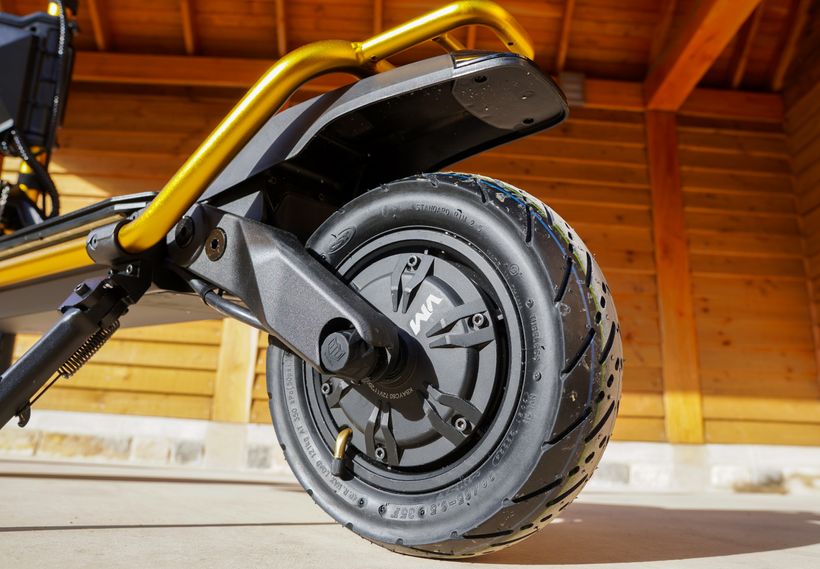
Volts measure the electrical pressure being pushed through a motor. A higher voltage correlates with a higher output of torque and, as a result, a faster acceleration rate.
Watts, on the other hand, measure the power that a motor is capable of producing. Here, a higher wattage results in a faster top speed.
Similarly, nominal power refers to the rated watts that a motor can produce continuously without damaging itself. A higher nominal power means a higher continuous speed.
Peak power, however, indicates the maximum watts that a motor can generate for short periods before overheating. A higher peak power means greater torque and more explosive power.

The top-performing scooters that I hand-selected for this guide had motors that operated between 48V and 72V with 1000-4000W of nominal power, and 2000-8400W of peak power.
Top Speed
To test the top speed of each scooter I first made sure that their tires were inflated to the recommended PSI, their batteries were fully charged, and their performance settings were dialed up to the max. I then put the pedal to the metal on a long, dry stretch of road.
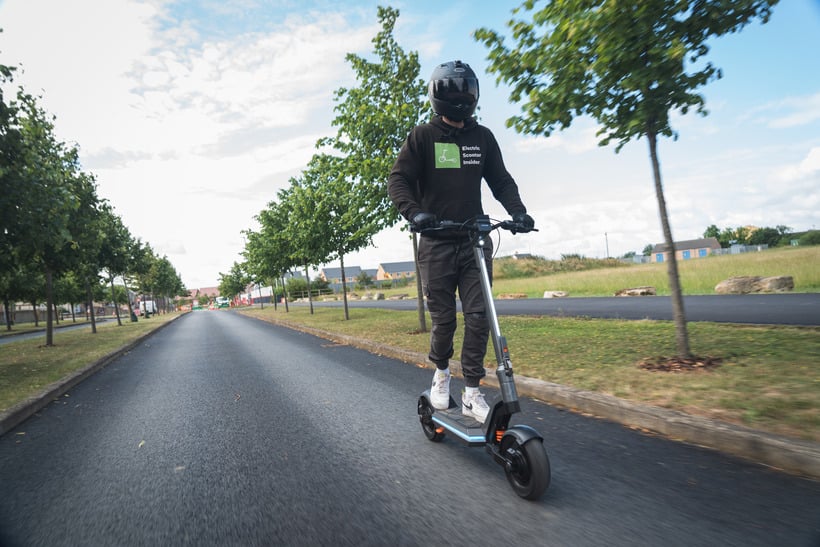
While I was able to test the scooters up to 40 mph, I was not able to gather first-hand top-speed data beyond this because I didn’t have enough runway to safely reach those speeds. This was especially true of scooters like the EMOVE RoadRunner Pro and Wolf King GT – both of which can reach 50 and 62 mph, respectively.
This is a common issue among reviewers since testing to this degree requires either a controlled automotive test track or the investment of hundreds of thousands of dollars to build one.
To counter this, I weighted my assessment of speed more on acceleration as this is the true indicator of a scooter’s thrill. Top speed is, after all, a vanity metric.
Acceleration
Electric scooters with dual motors are sought after because with them comes higher top speeds, improved hill climbing capabilities, and best of all, adrenaline-inducing acceleration rates.
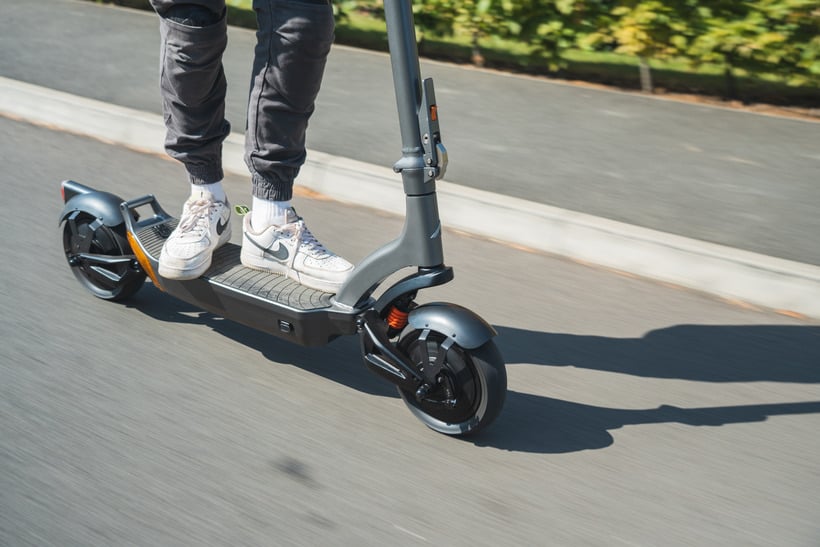
To establish accurate reports of each scooter’s accelerative power, I conducted multiple tests across several intervals (i.e. 0-15 mph, 0-25 mph). For each interval, I conducted 3x two-way directional runs on a flat, dry road, and then averaged the data (in seconds).
To ensure consistency, zero-start modes were enabled, the performance settings were dialed up to the max, the tires were pumped up to their recommended PSI, and the batteries were fully charged.
Controllers
Controllers are responsible for the coordination of how battery power is delivered to the motors and other components that require electricity. But, not all controllers are made equal.

They are rated by how much current (measured in amps) and voltage can pass through them. Those with high amp and voltage figures can control more powerful scooters.
Typically speaking, the higher the amps (A) and voltage (V), the greater the scooter’s torque, the faster its acceleration, and the higher its top speed.
However, the major area of consideration for this guide was the type of controllers used – Square Wave or Sine Wave.
Square Wave controllers release power instantaneously, while Sine Wave ones release it more gradually. Imagine a light switch being flicked on and off in a dark room. The room goes from being pitch black to filled with light in an instant. The same abrupt flow of power is generated by Square Wave controllers. The power delivery of Sine Wave controllers, however, can compared to a roll-on/roll-off dimmer dial. Instead of a dark room being filled immediately with light, the dimmer dial gradually increases the light level.
Some riders love the in-your-face hit of the former, though the latter grants you a smoother and more controlled delivery of power.
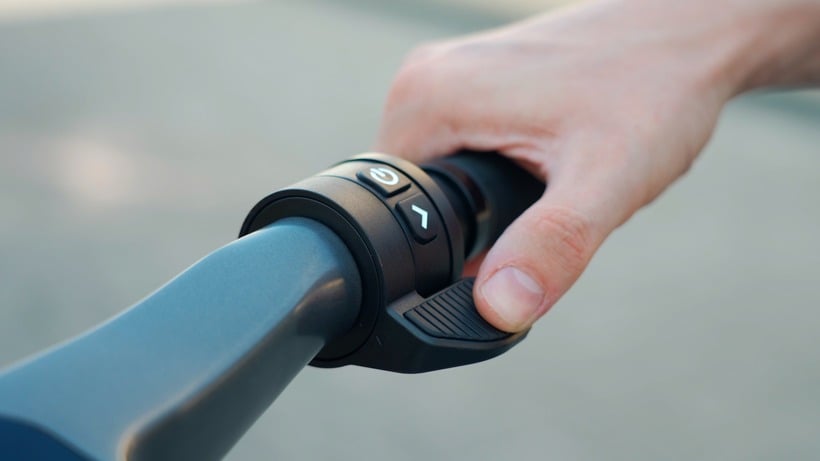
During my assessment of each scooter, I reported on the responsiveness of their throttles.
Handling
Stability and control are crucial when riding fast, and so, in addition to my reports on how each scooter felt to ride at speed (i.e. taking note of wobble), I also assessed handlebar width, deck-to-handlebar height, the angle of steering columns, usable deck space, and kickplate angles.
The top performers had wide handlebars, high deck-to-handlebar heights, rake angles that allowed for both stability and maneuverability, decks with enough space to accommodate a natural riding stance, and kickplate angles that offered comfortable platforms to lean into the ride. The frames of the scooters were also well-balanced and robust.

I also made sure to assess each scooter relative to its use case. For example, the Mantis King GT was my top pick for off-roading, so I tested its handling while traversing different types of terrain. Then for the NAMI Burn-e 2 – which I awarded the title of the best dual-motor scooter for ride quality – I took note of how comfortable it was to ride for extended periods (i.e. reporting on its shock absorption). I applied this methodology to each scooter so that I could pick out the most well-equipped models.

Braking
To ascertain each scooter’s braking prowess, I measured the distance that it took for them to stop from 15 mph.
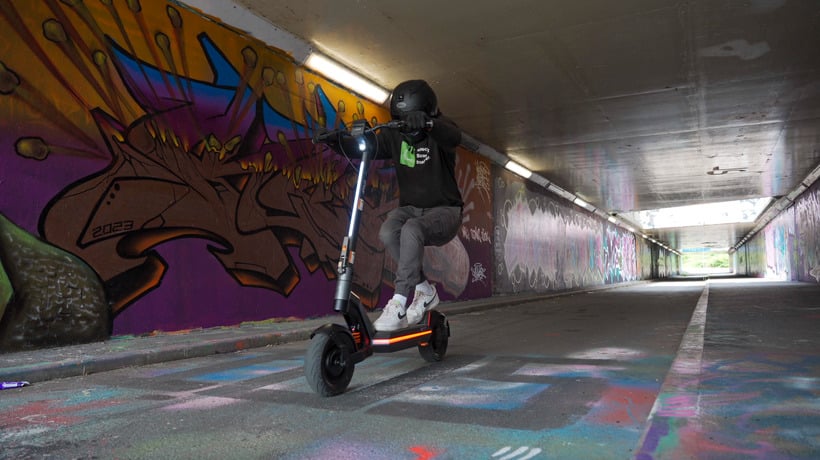
These tests were repeated until I had 5 measurements from controlled stops (i.e. braking without skidding). This data was then averaged.
If electronic or regenerative braking systems were present then I dialed their strength up to the max.
Based on my tests, stopping distances can be interpreted as follows: Excellent (less than 2.5 meters), Very Good (2.5 – 3.0 meters), Good (3.0 – 3.5 meters), Fair (3.5 – 4.0 meters), and Poor (more than 4.0 meters).

